Cyclux—Reinventing bike security with tech
✨ Research, Product, UX
/
2018
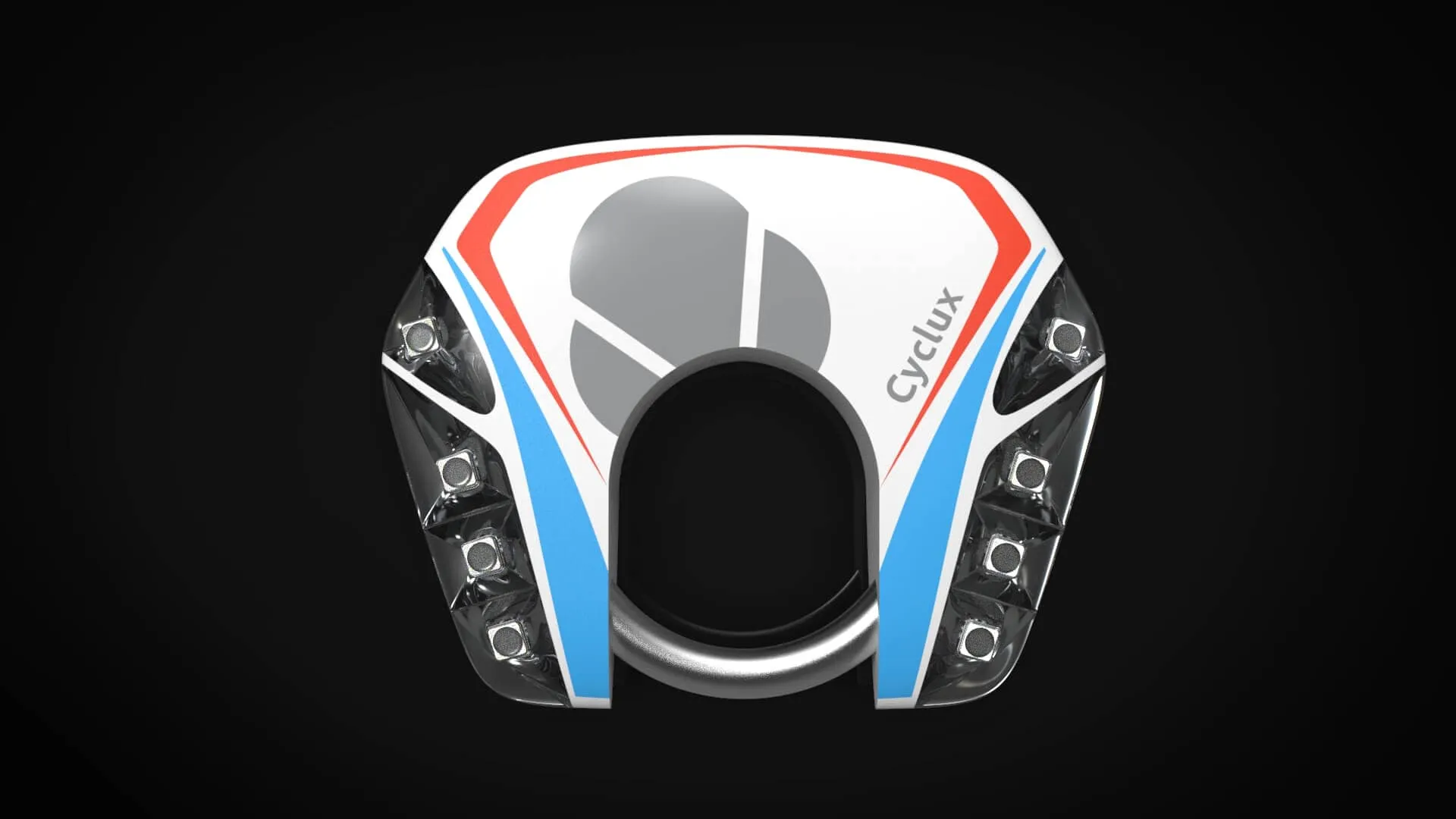
The bicycle, an accessible and eco-friendly mode of transport, faces modern challenges, especially concerning security for contemporary sports bikes. Existing locking systems often fall short, prompting this project to investigate cyclist problems and redesign bicycle locks for today's needs. Cyclux aims to enhance security and user convenience by integrating intelligent technology into a redesigned bicycle lock. This project involved user research, ideation, prototyping, and user testing to develop a smart security solution.
My Role
Led User Research & Analysis to define problems, driving Ideation, Scenarios, Concept & UX Design, Prototyping, and User Testing.
The Team
1 Designer, 1 Professor
Timeline
Oct 2018 - Dec 2018
The Problem: Inadequate Security & Convenience
Initial field studies within IIT Bombay revealed significant issues faced by student cyclists, particularly those with sports bikes. Key problems included:
-
Low Trust in Locks: Users expressed very low trust in existing cable locks, citing ease of picking or cutting. Even expensive locks were deemed insecure.
-
Lock Usability Issues: Cable locks are cumbersome to store while riding, can scratch bike paint, and require bending down to operate. Key management is also inconvenient
-
Specific Needs of Sports Bikes: Unlike classic bikes with integrated locks, sports bike users struggle with bulky U-locks or inconvenient cable locks. Storing cable locks on handlebars poses a safety risk.
-
Theft Concerns: Despite perceptions of safety in some areas, theft remains a concern, especially for well-maintained or expensive bikes.
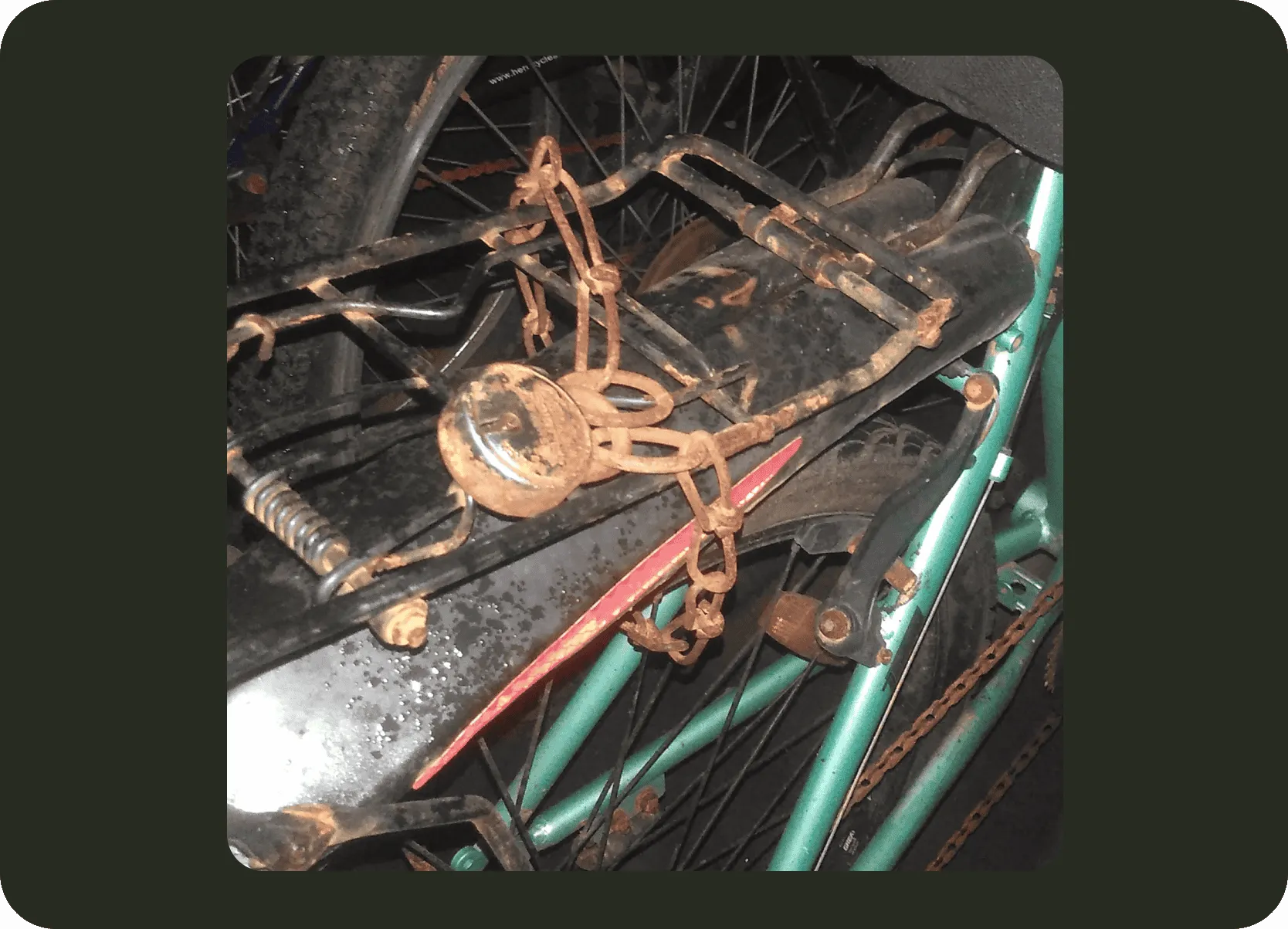
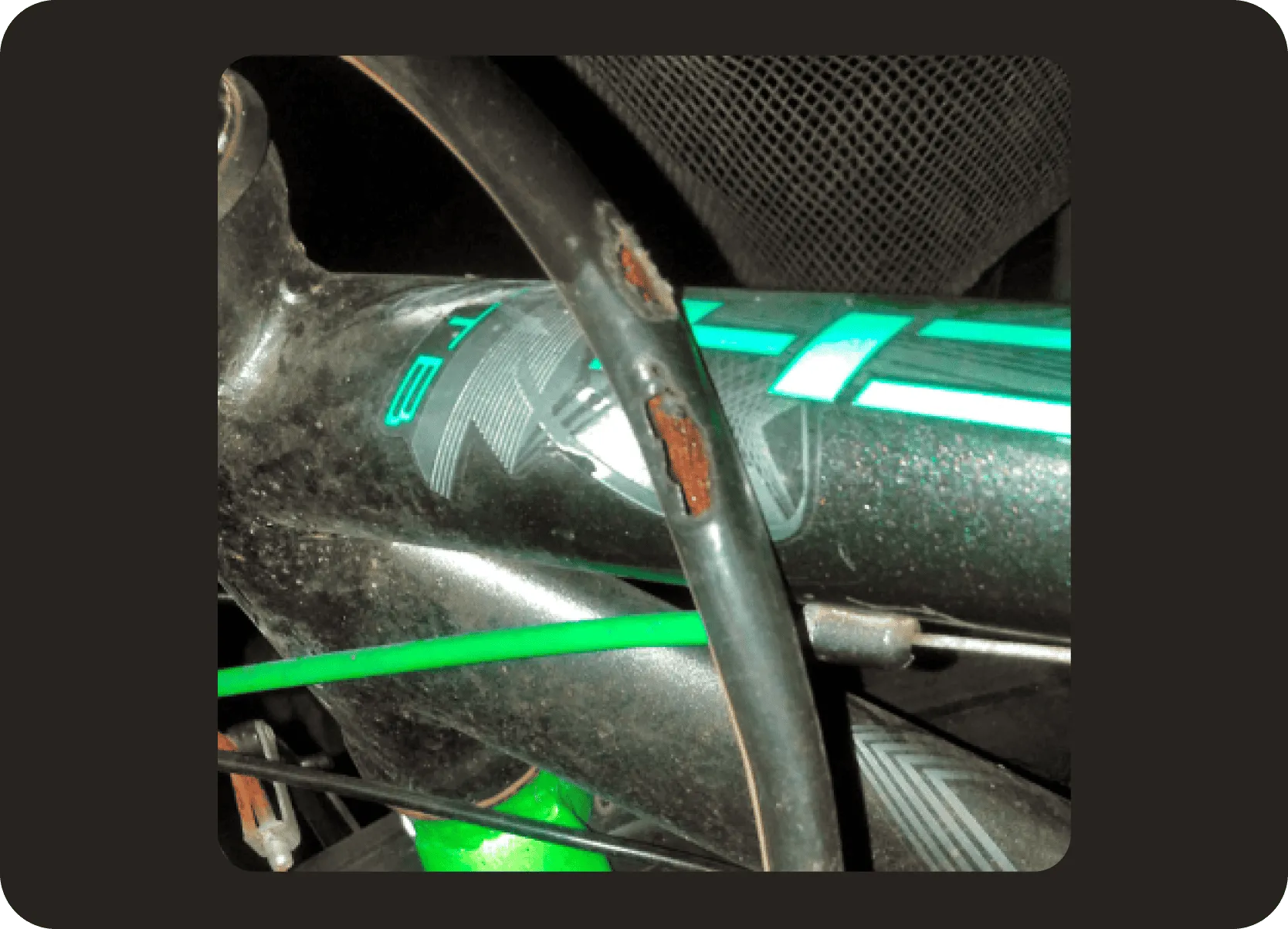
Research & Discovery
Our research involved several phases:
1. Literature Review
Explored existing research on bicycle-sharing systems (BSS), smart bikes, and safety technologies, identifying gaps related to individual cyclist needs.
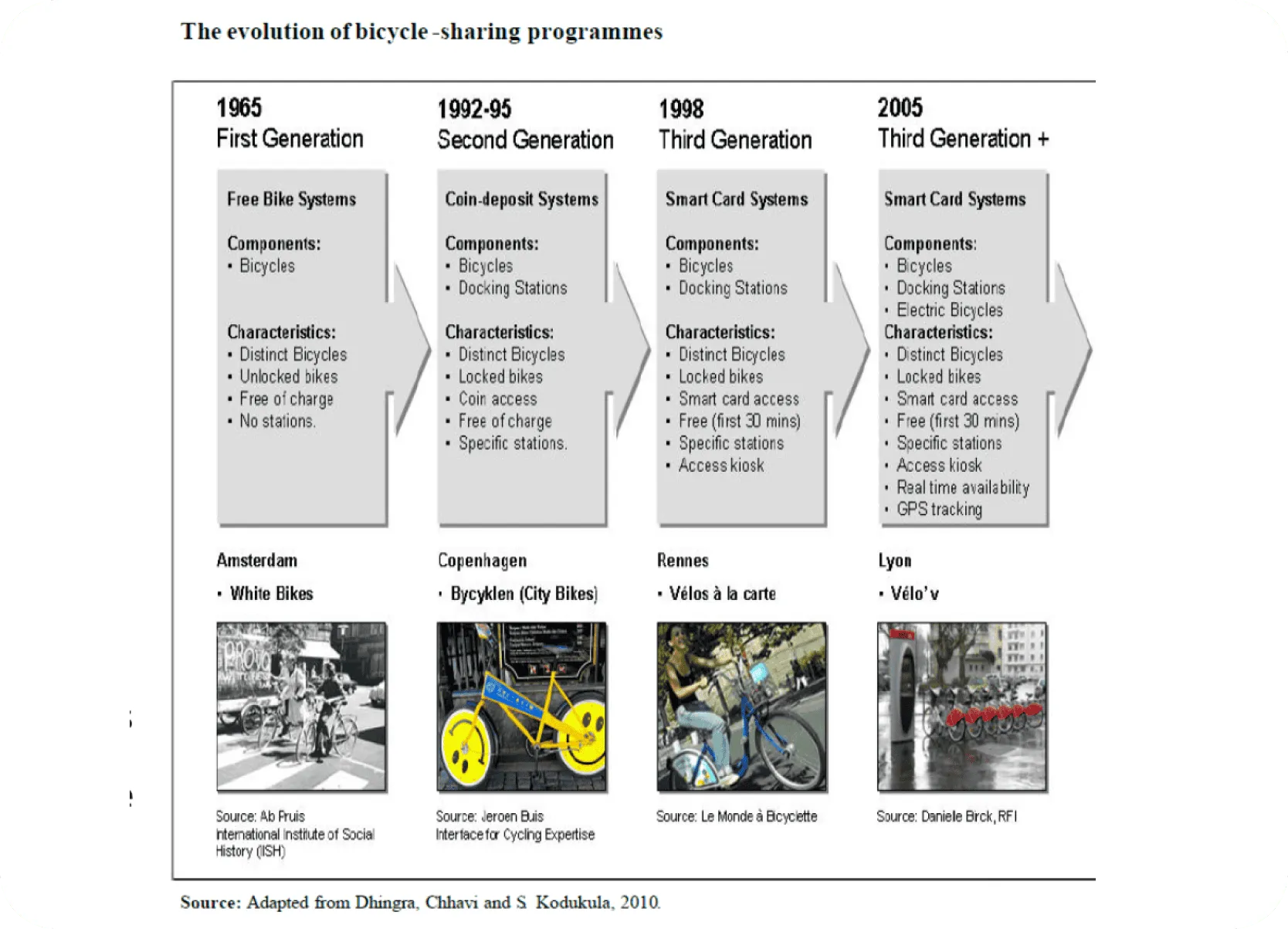
2. Field Study (IIT Bombay)
Conducted 36 interviews with student cyclists (primarily sports bike users) to understand prevalent issues like maintenance, security, parking, and desired smart features. Key findings included dissatisfaction with current locks and a desire for integrated smart features like tracking, navigation aids, and alerts.
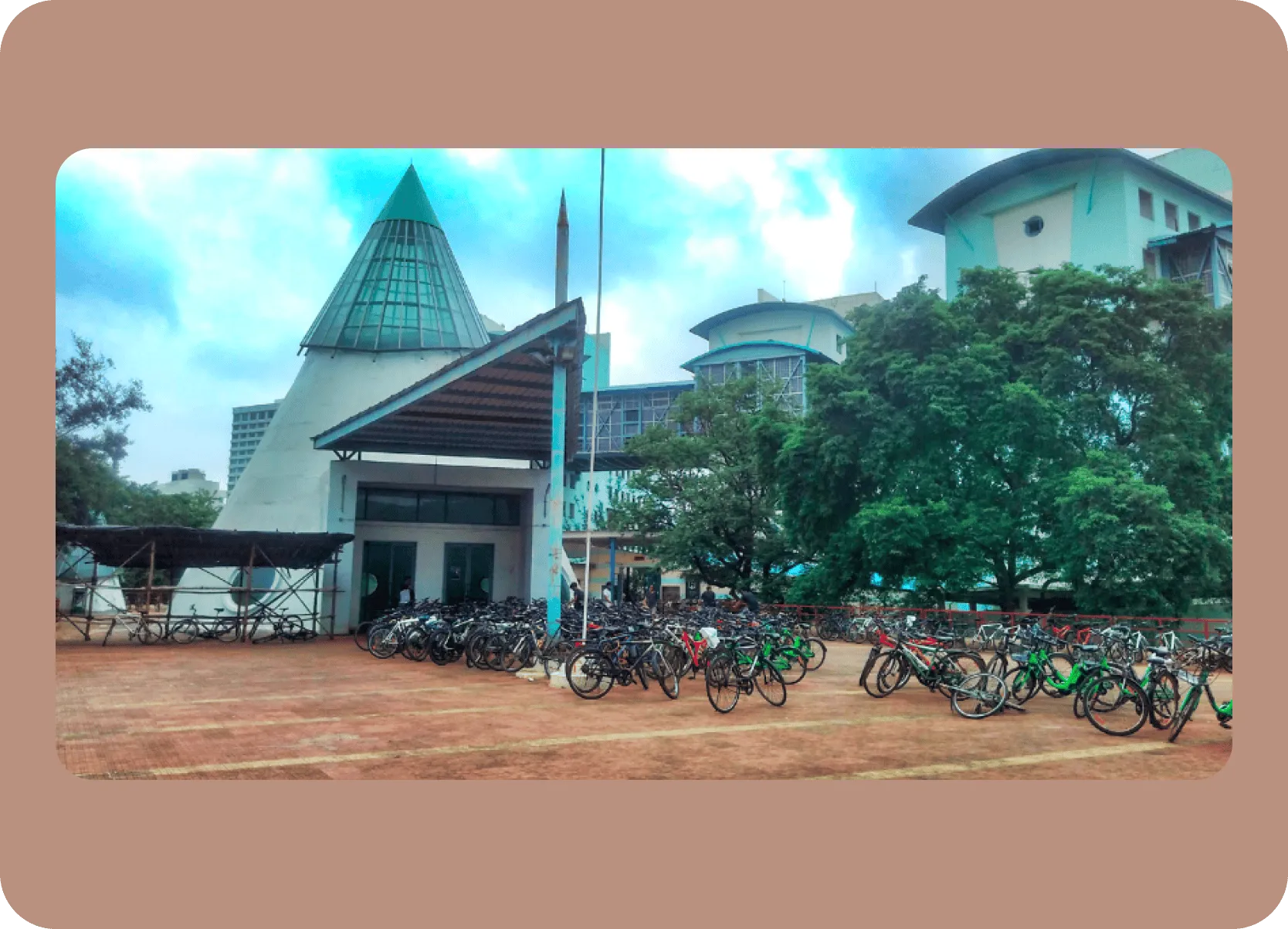
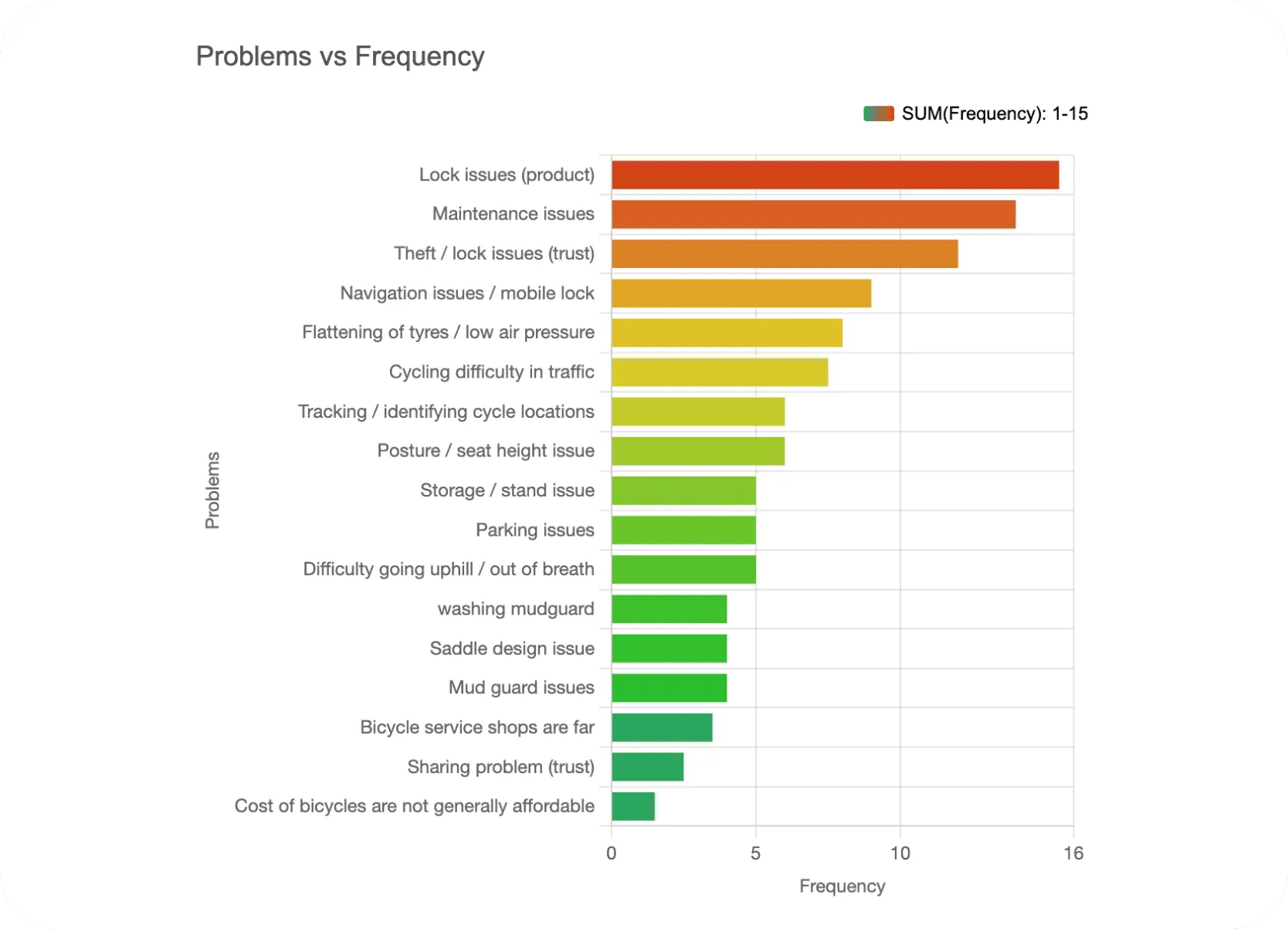

3. Field Study (General Commuters)
Interviewed 10 users outside the campus (mechanics, delivery personnel, etc.). This group, often using classic bikes with integrated locks, reported fewer issues, highlighting that lock problems were most acute for sports bike users relying on cable/U-locks.
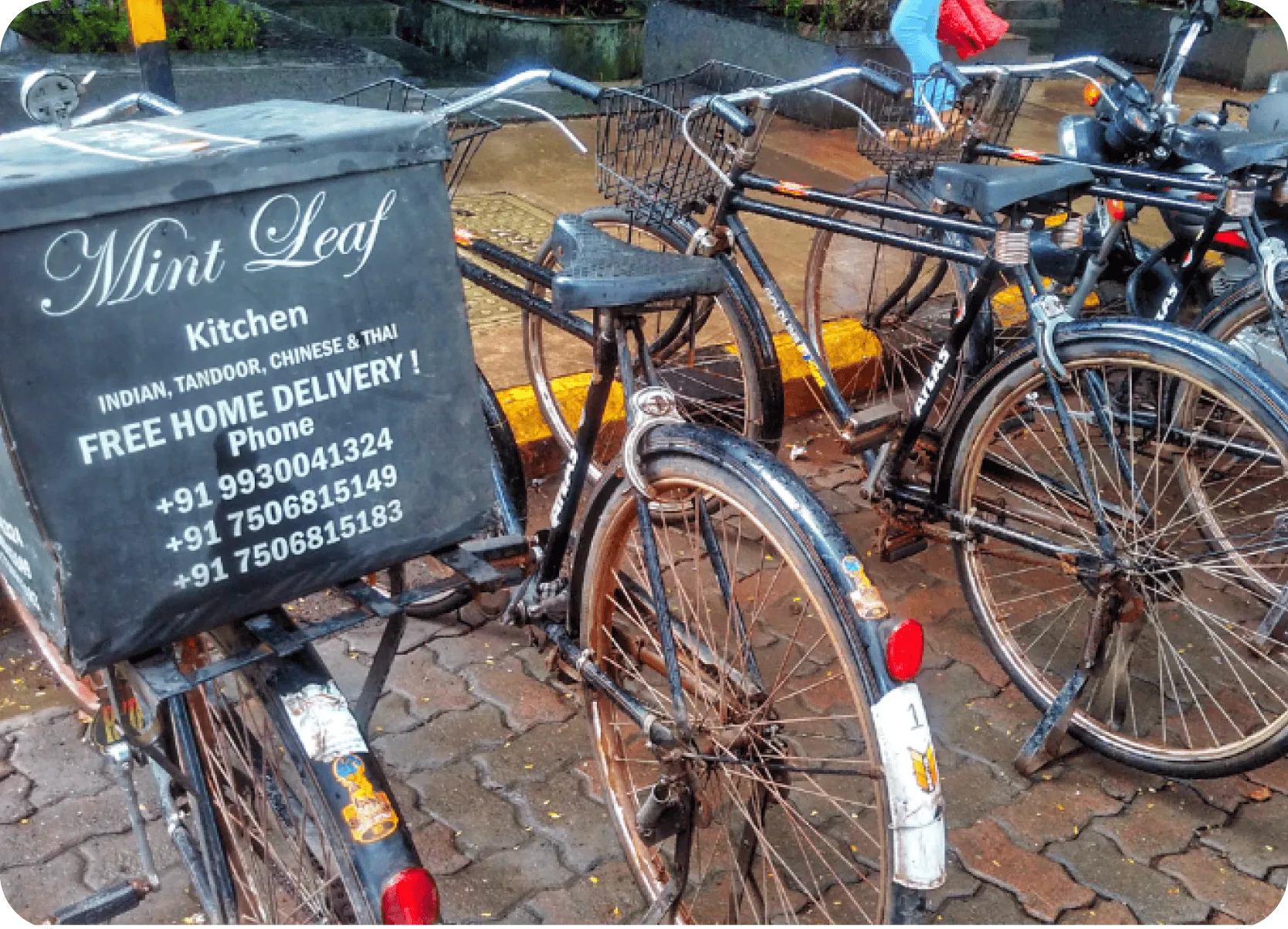
4. Heuristic Evaluation
Analyzed 9 common lock types (U-locks, cable, chain, frame locks, smart locks, etc.) based on toughness, bulkiness, flexibility, and reliability, concluding that smart locks offered security but needed enhanced cyclist assistance features.
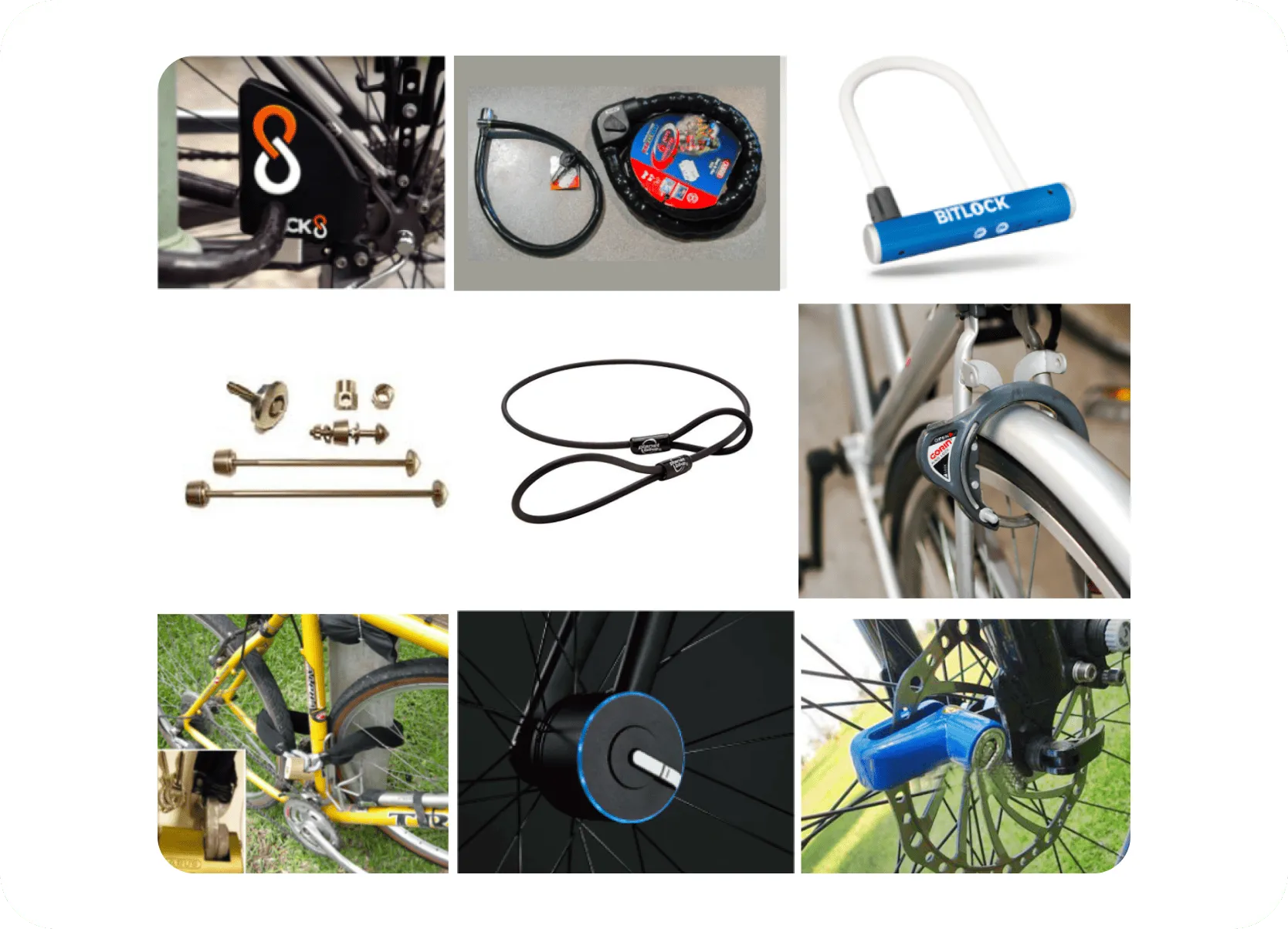

5. Market Analysis
Reviewed existing smart locks (Linka, Skylock, etc.), noting common features (tracking, alerts, sharing) but also high costs and lack of cyclist assistance features relevant to our target users.
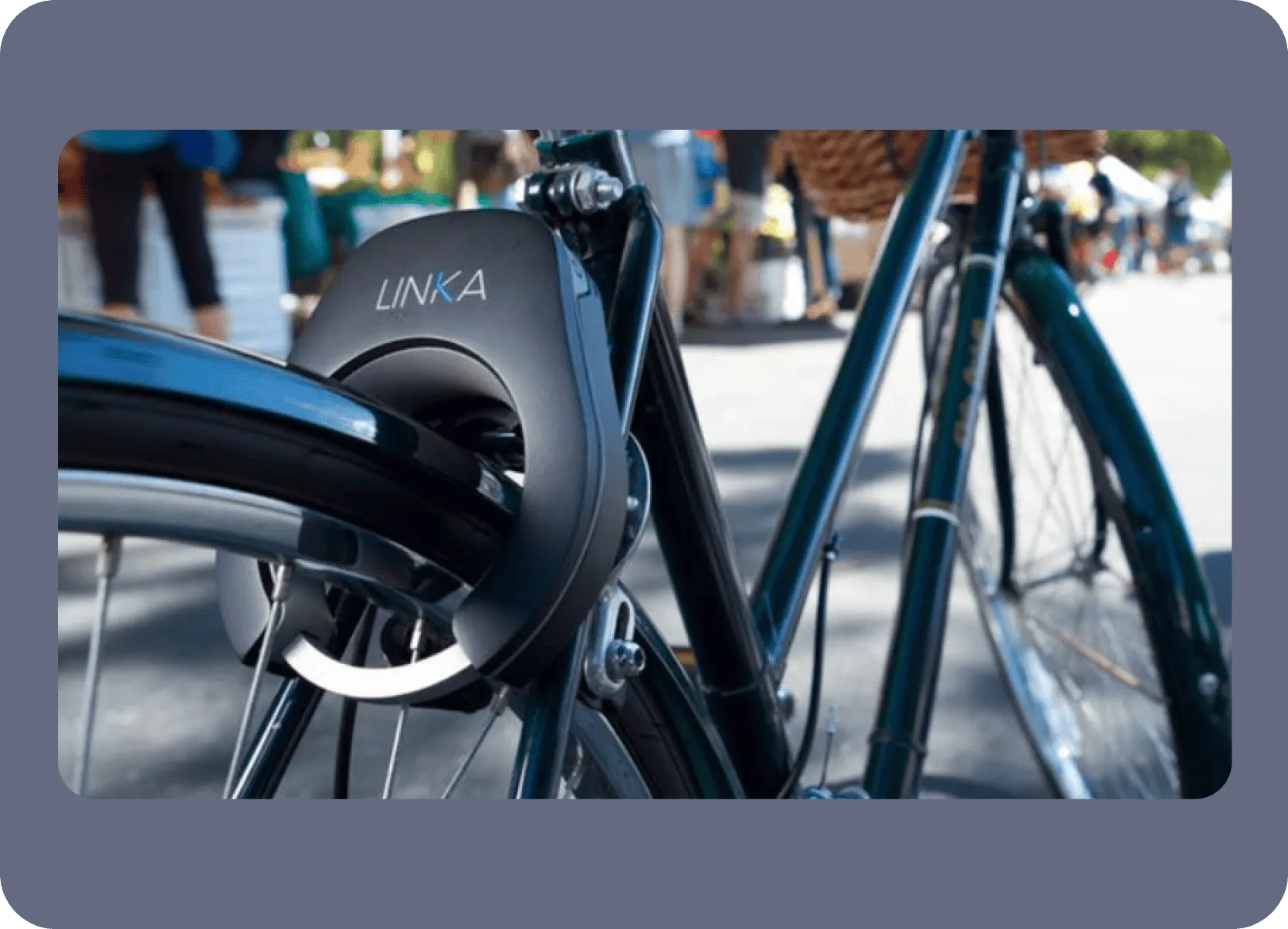
Problems and Gaps
Scenario 1: Unlocking a Bicycle with a Cable Lock
Cyclist searches for and retrieves a key bunch, selects the correct key, bends down to access the lock, inserts and turns the key to unlock it, manually opens the cable lock, removes the cable from the spokes, considers whether to store the unlocked cable while standing or bending, and finally stores the keys.
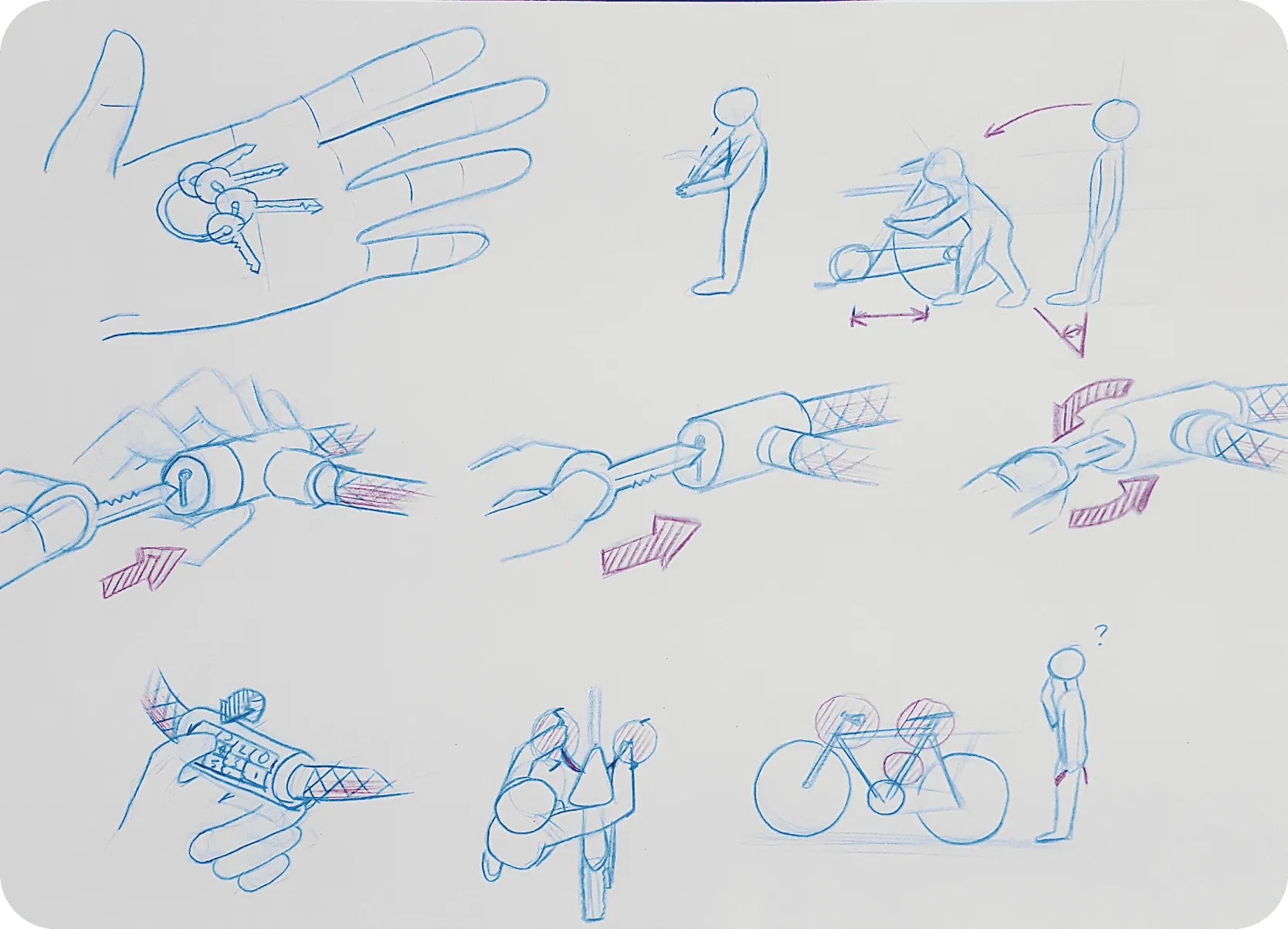
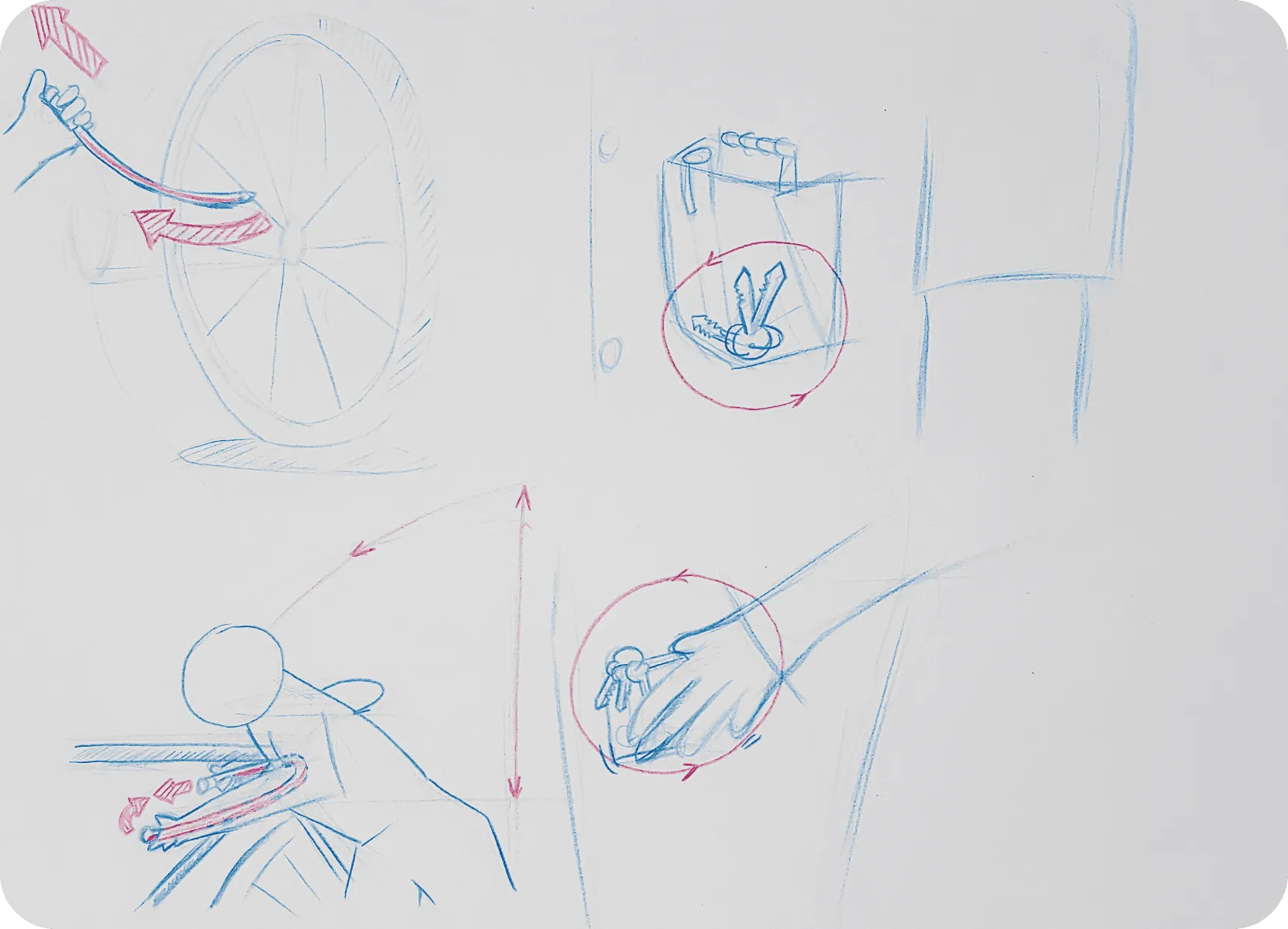
Scenario 2: Misplacing the Lock Key
Cyclists may inadvertently leave their lock key on surfaces like car seats or couches. This leads to frustrating searches upon returning to their bicycle. As a potential solution, some cyclists purchase and integrate key trackers. However, these trackers can be lost during rides due to impacts from road bumps or insufficient friction in pockets.
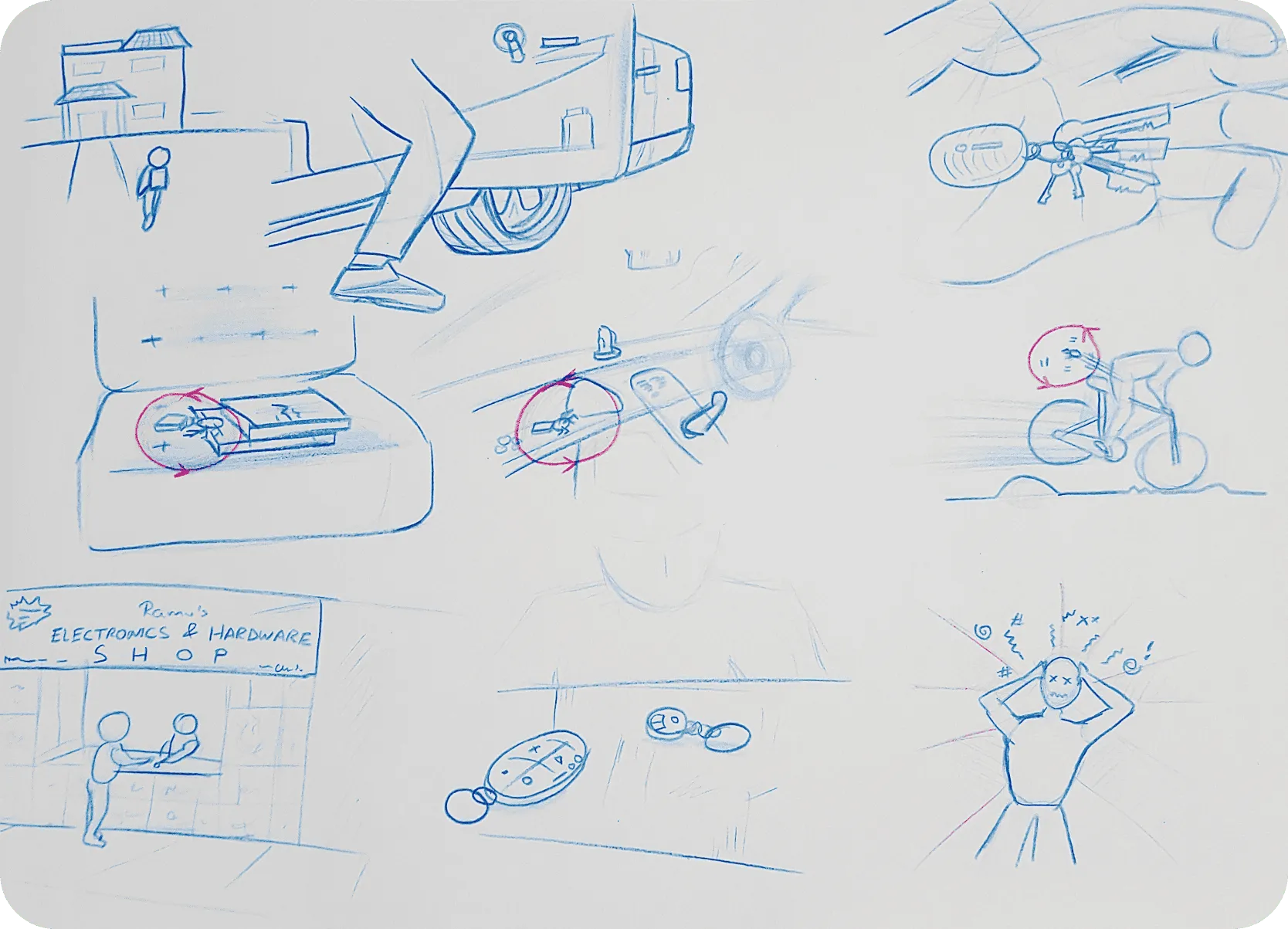
Defining the Opportunity
Research highlighted a clear opportunity: While smart lock technology exists, current solutions are often expensive, lack crucial cyclist assistance features identified by users (like integrated lights/indicators, better usability), and don't adequately address the specific pain points of sports bike owners using inconvenient cable or U-locks. The goal was to design an aesthetically integrated, secure, user-friendly smart lock compatible with various bicycles, incorporating cyclist assistance features for the target IIT Bombay user group.
Ideation & Concept Development
Mind Mapping
We brainstormed concepts focusing on redesigning locks for better convenience and security. The following were the key concepts—

1. Mechanical Lock
The proposed mechanical lock draws inspiration from the user-friendly design of a door knob, which is positioned at a convenient height for pushing/pulling to open and close a door. Similarly, our design places a knob above the frame lock, just below and behind the seat post, for easier access.
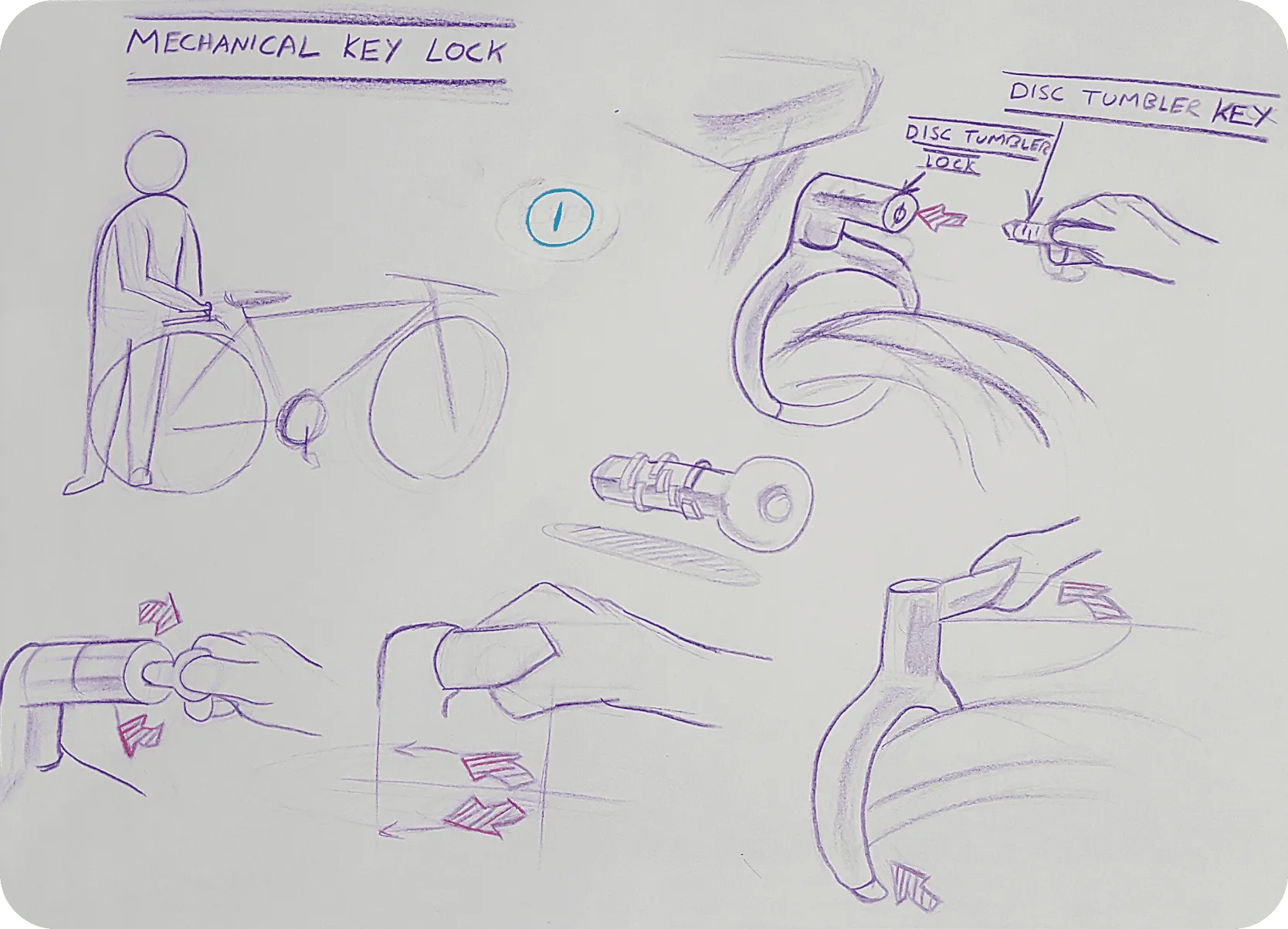
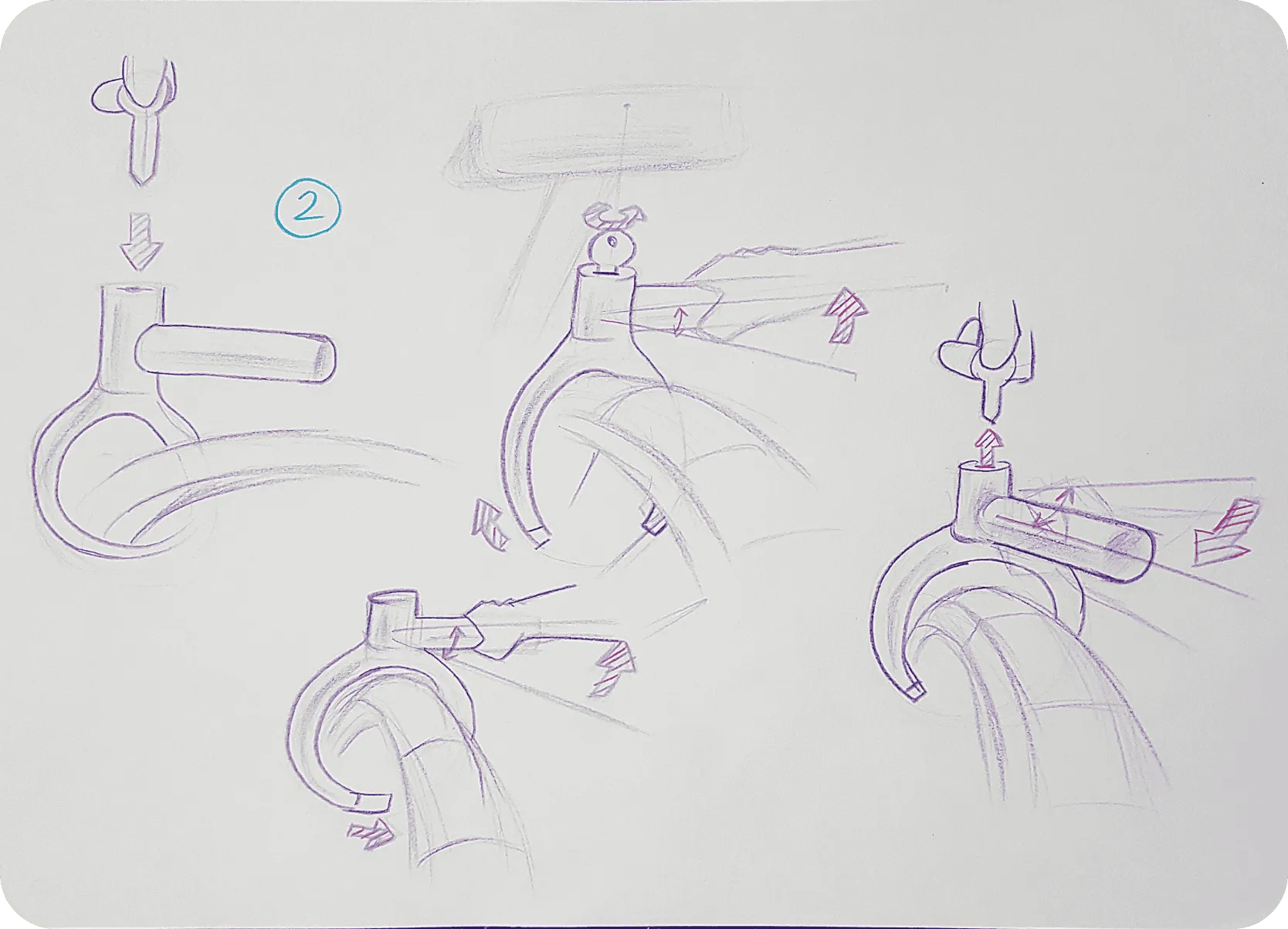
2. Electrical — Mounted Frame Lock
This smart bicycle frame lock offers keyless locking/unlocking via a Bluetooth-connected mobile app with optional proximity-based automation. It features extended battery life (up to a year), emergency unlocking via a 9V battery or custom key in case of power loss, and integrated automatic turn signals and speed-sensitive stop lights with adjustable brightness. Optionally, it includes load sensing with OLED display, smartphone notifications for calls/messages (via a beep), an integrated bell, fall detection with alert, tamper/impact sensing with alarm and notification, and self-powering via spoke magnets, along with a bicycle finder function with flashing lights and beeping.
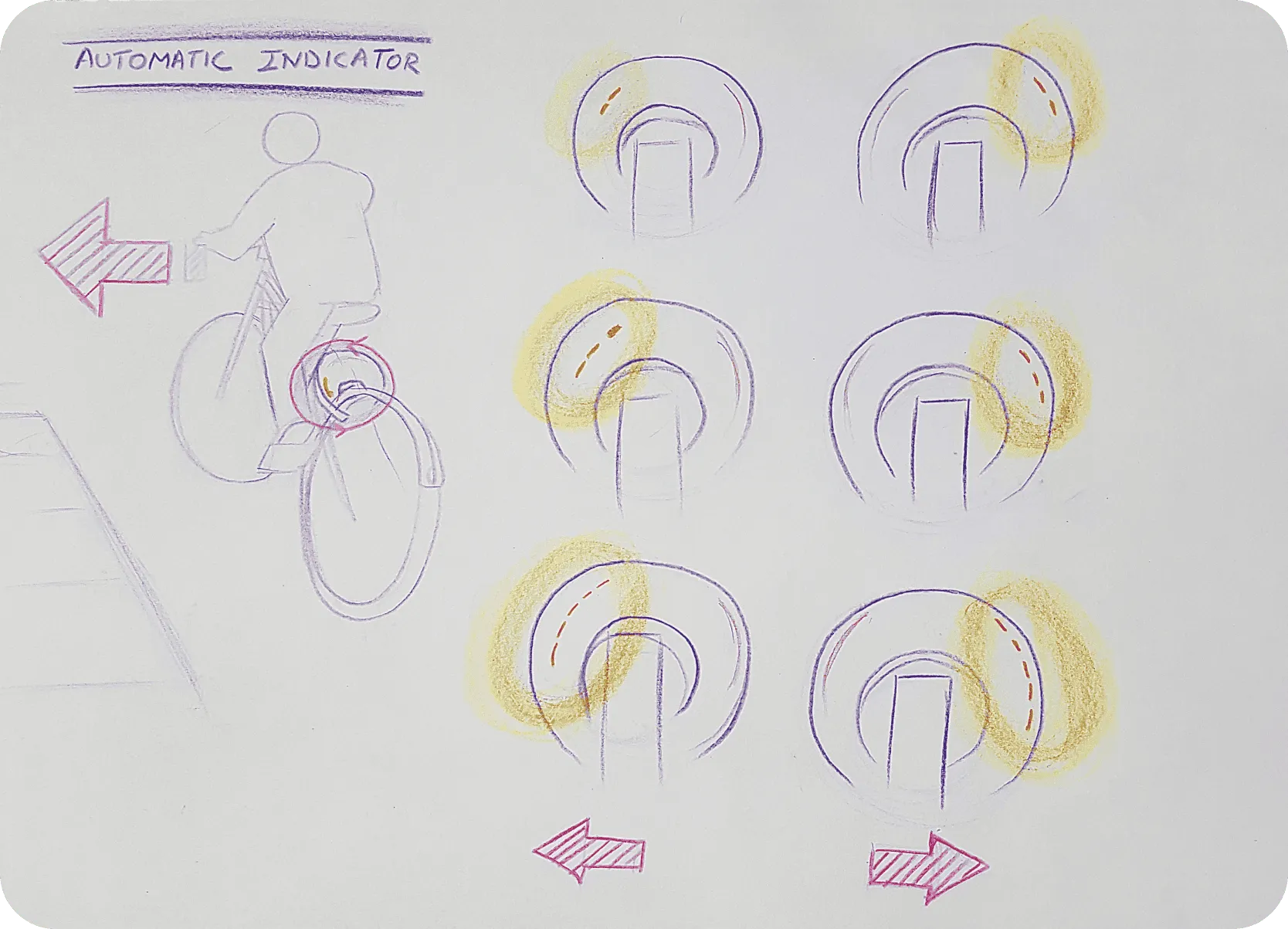
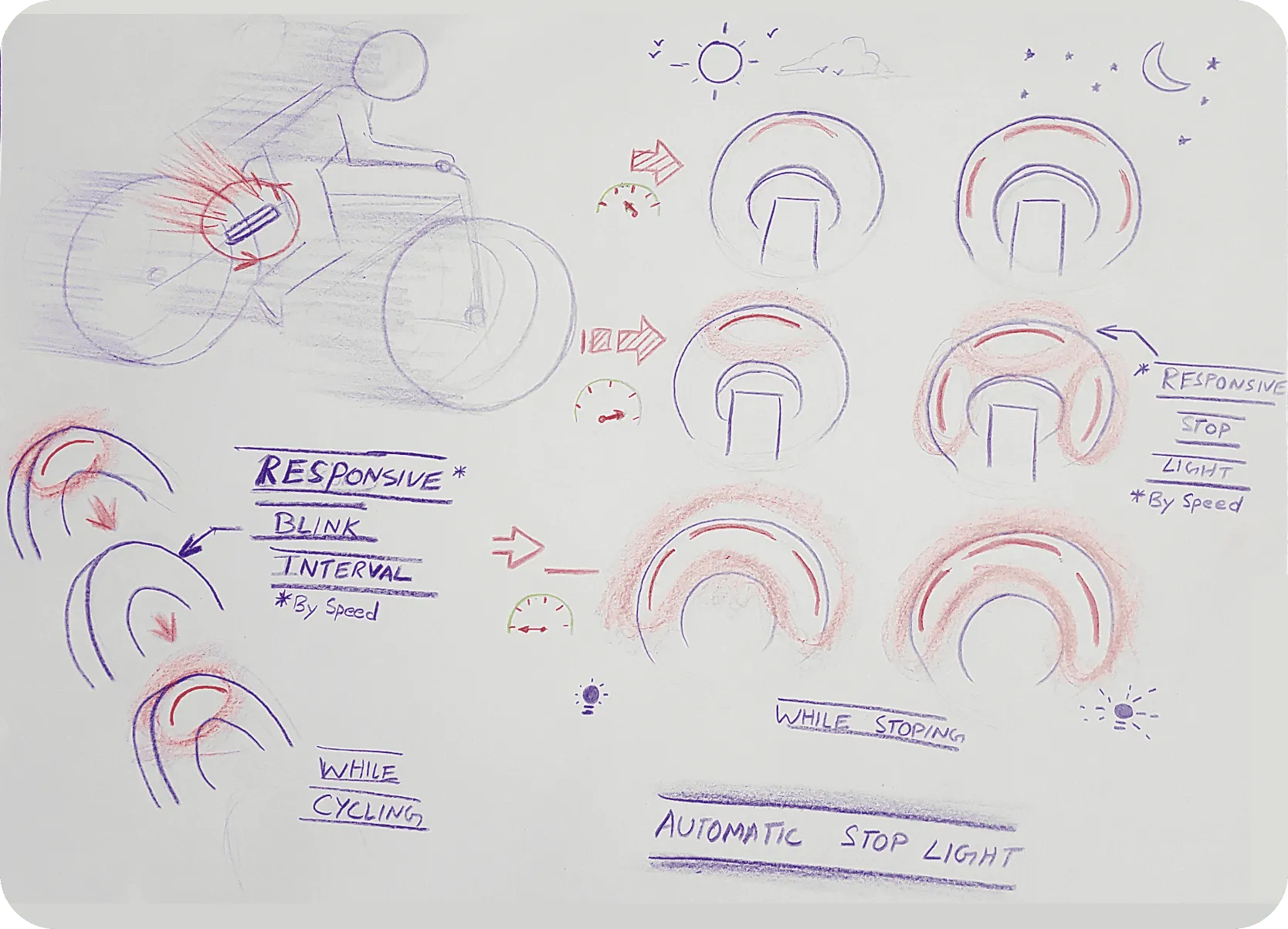
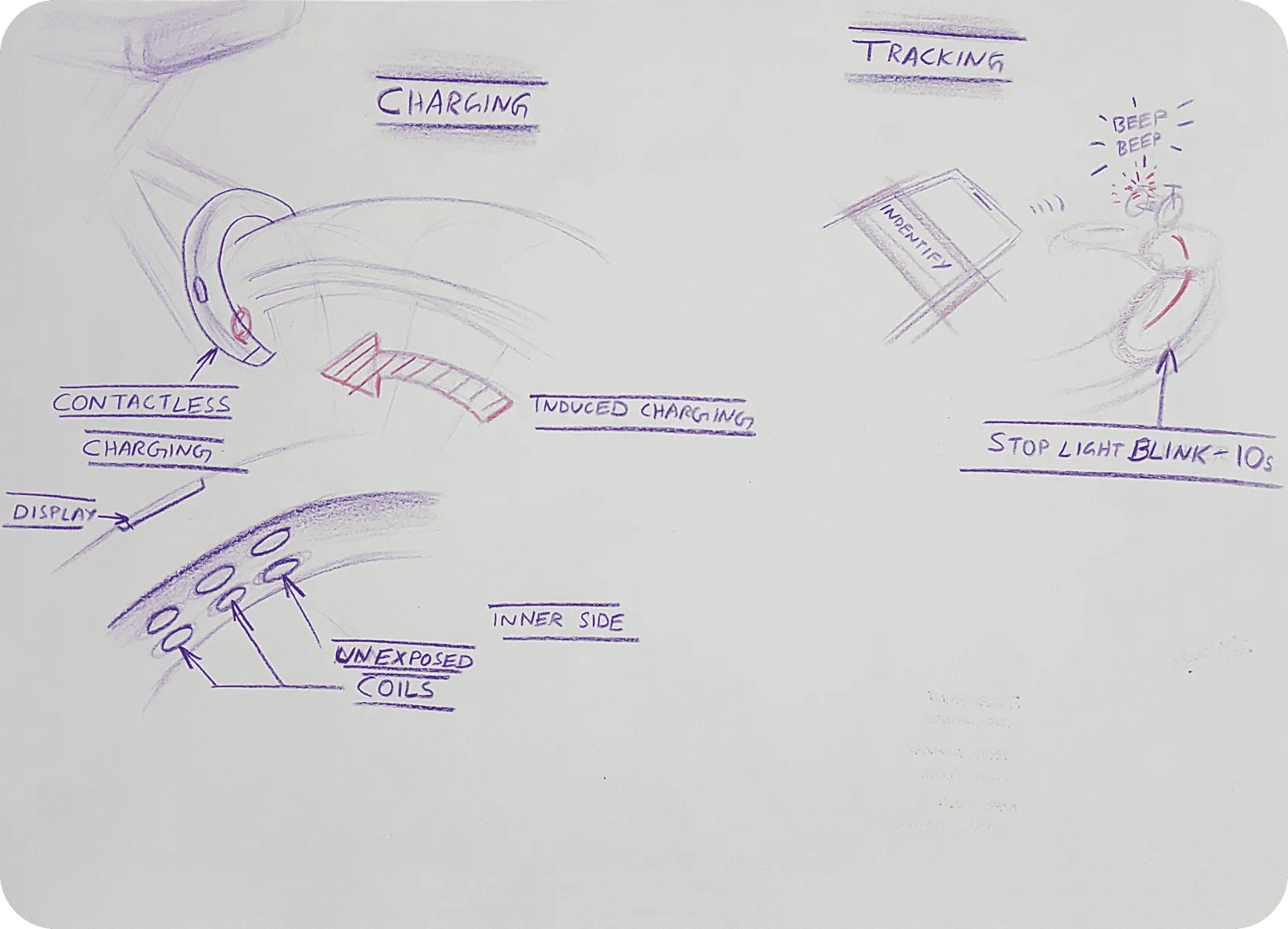
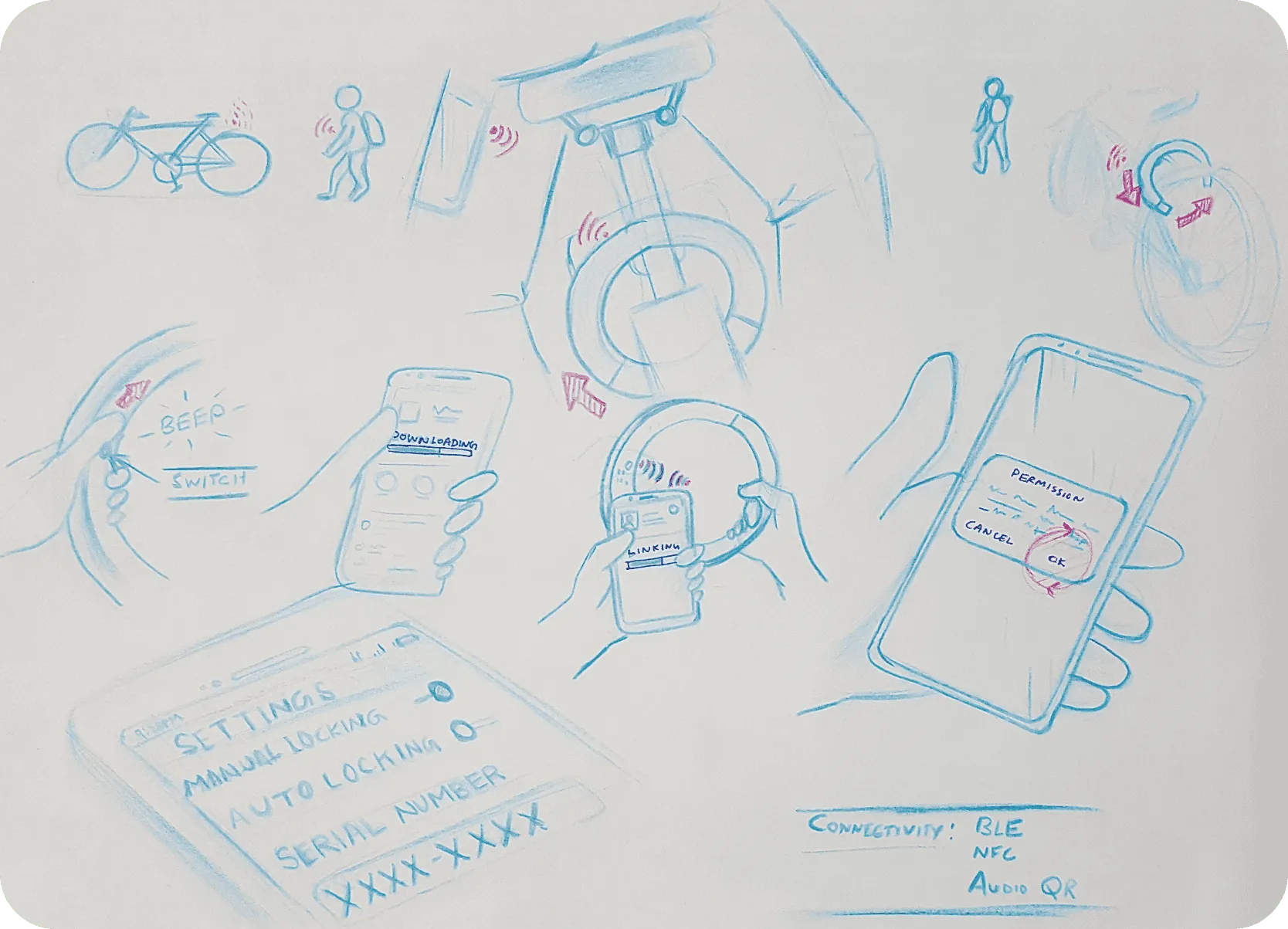
3. Electrical Lock — Spoke Locker
This smart bicycle front fork lock integrates with wired smart handlebars featuring LED indicators and a fingerprint/NFC scanner. Setup involves app registration and BLE pairing via fingerprint. Unlocking options include smartphone NFC, NFC tags, or handlebar fingerprint scan. The lock features a secure outer casing and a rotating inner casing (for self-charging and speed tracking) that locks by extending rods into the spokes. It includes integrated front tire air pressure monitoring with handlebar alerts, automatic turn signals, speed-based flashing lights, a front white light for nighttime visibility, and haptic navigation feedback via handlebar vibrations when linked to smartphone navigation.
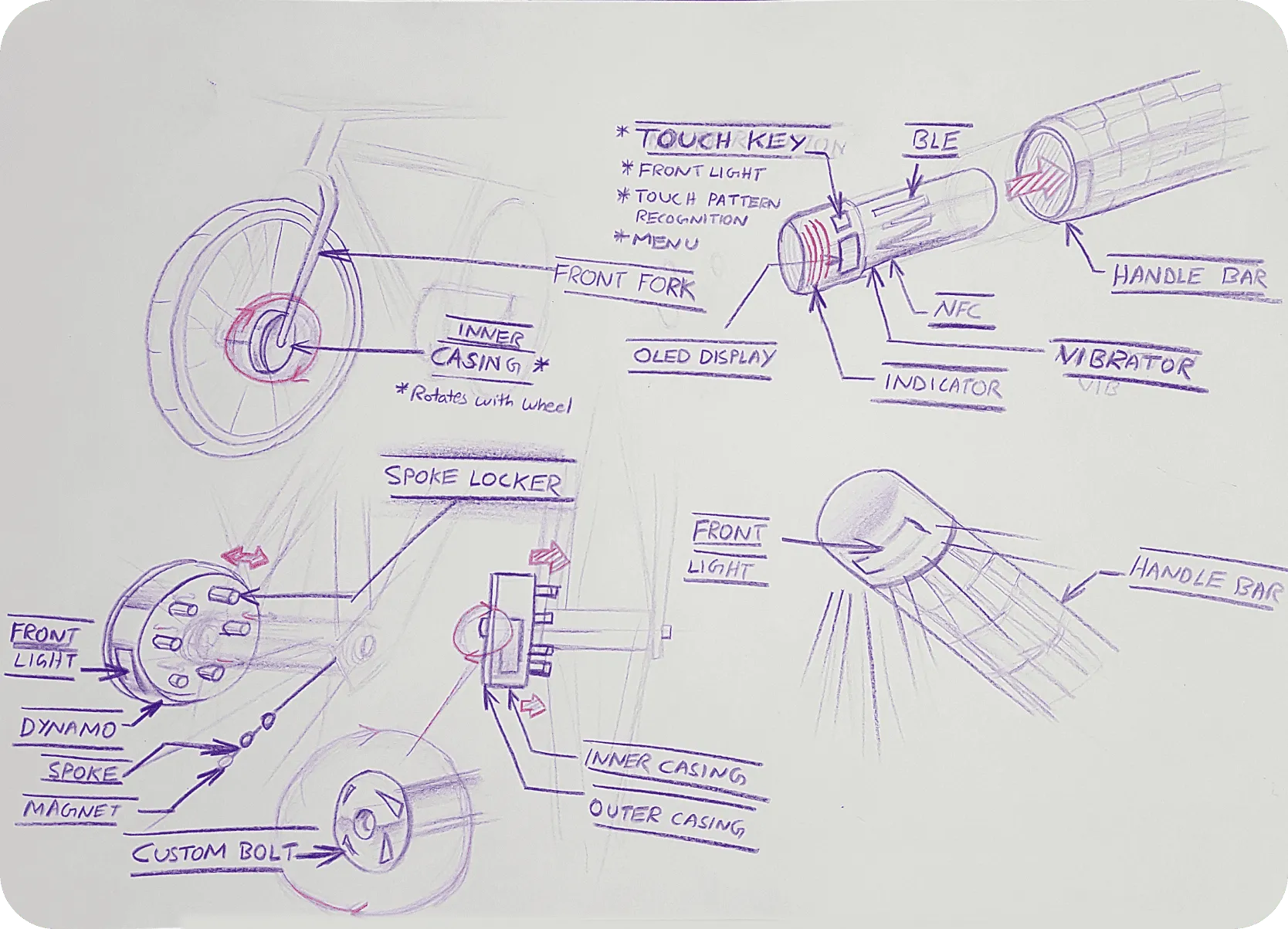
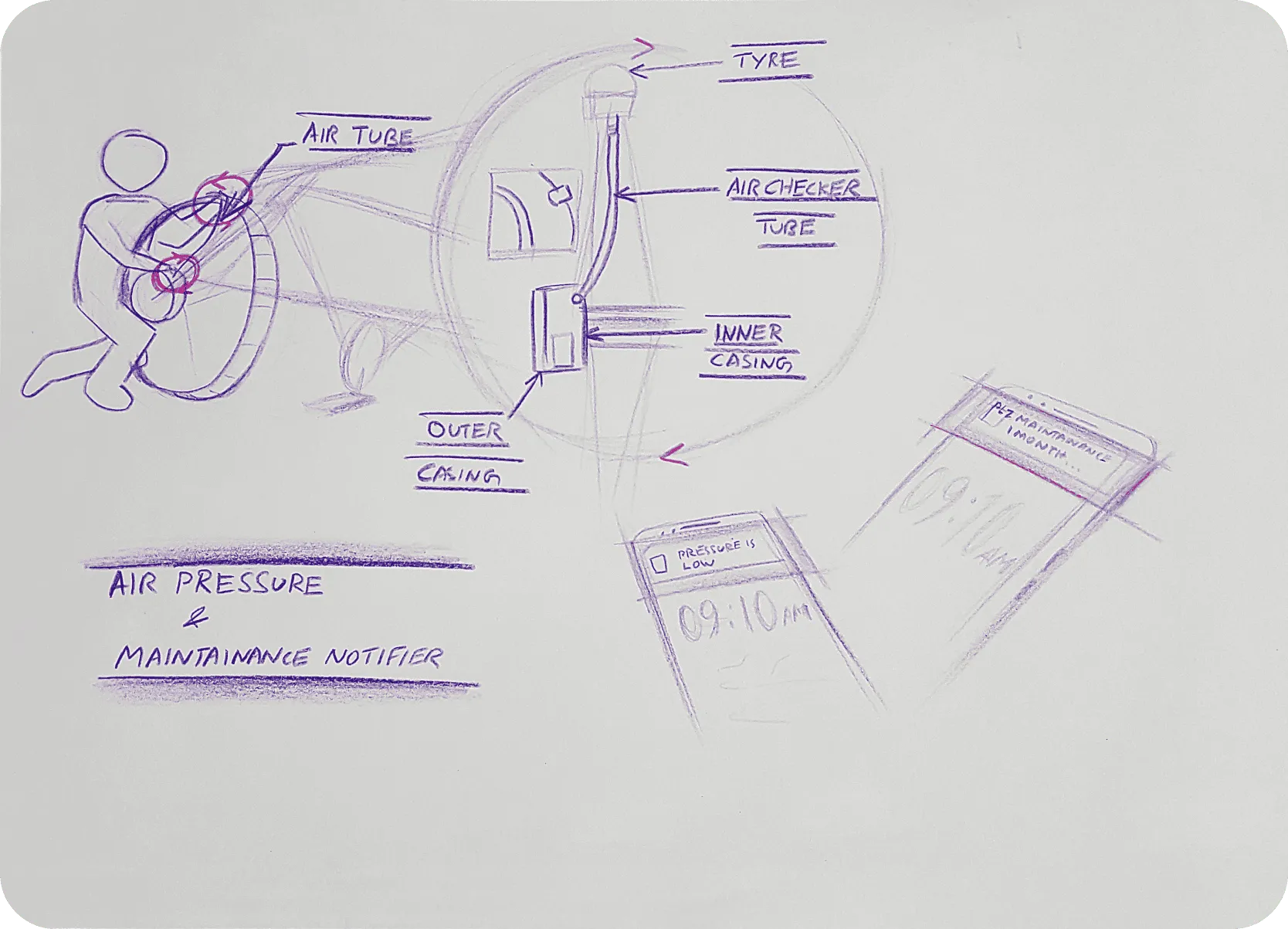
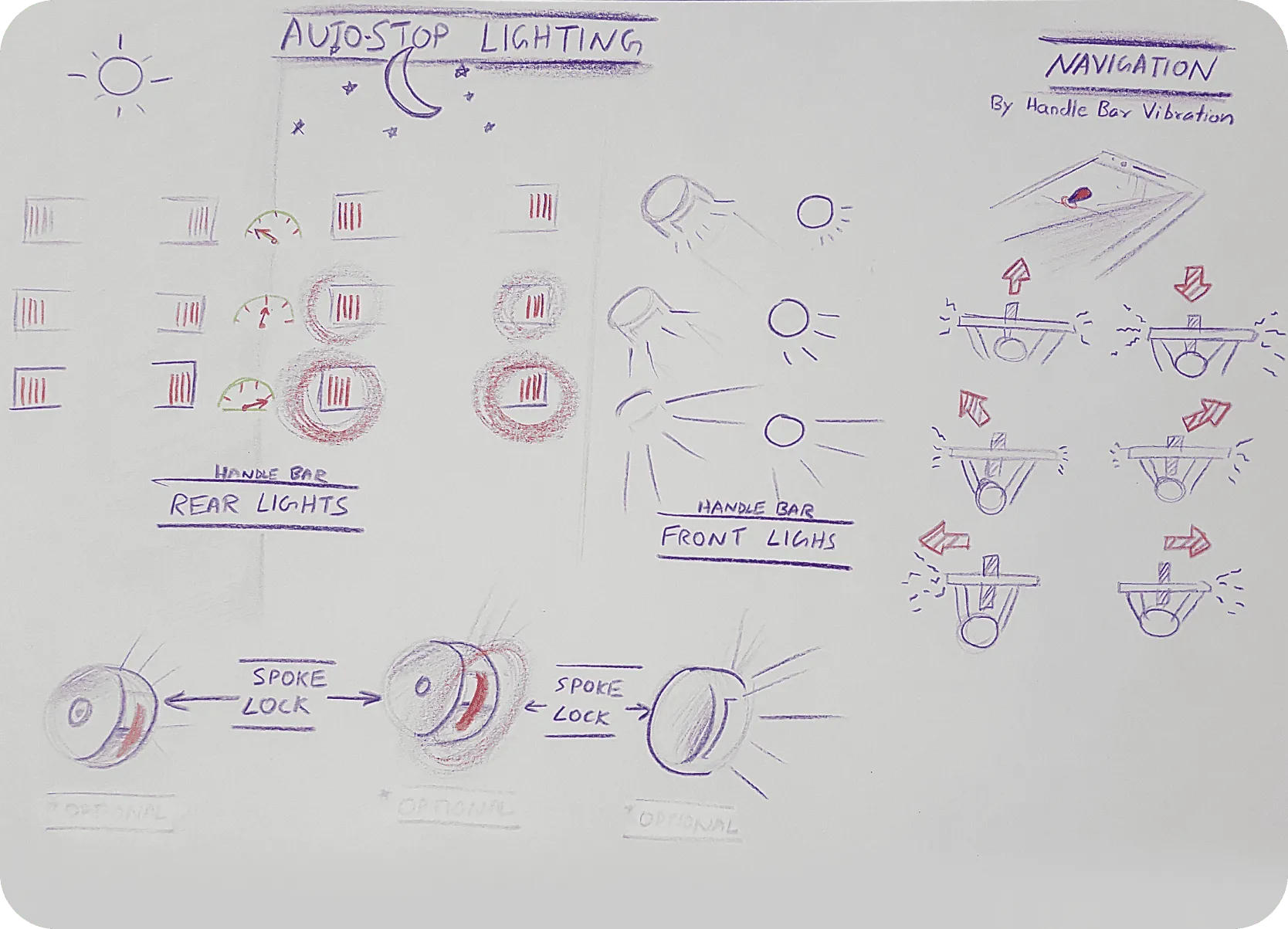
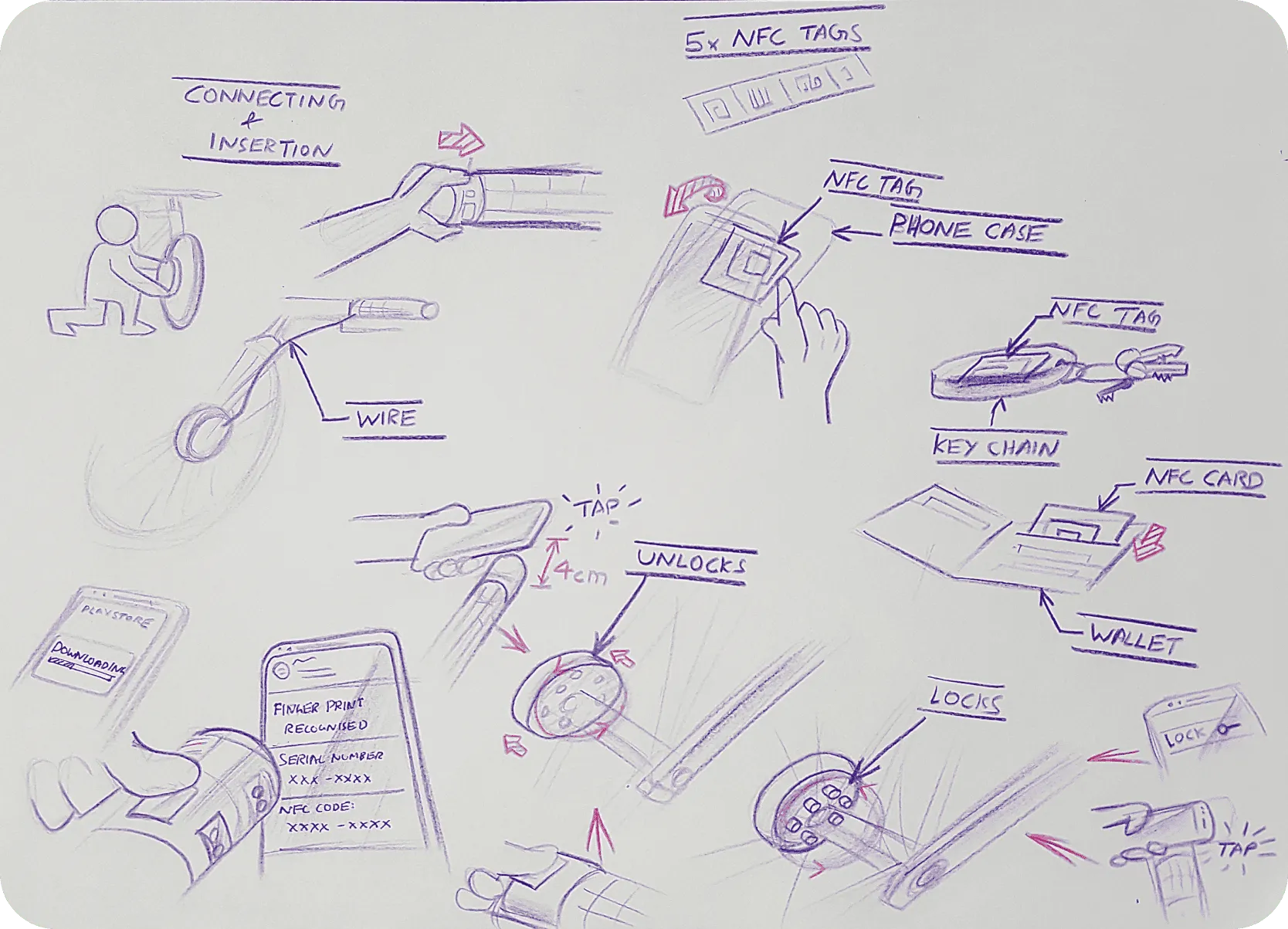
4. Explorations
Keyless codes (tap patterns, NFC), posture correction aids, gamified cycling, seat post storage/visibility devices, and fingerprint cable locks.
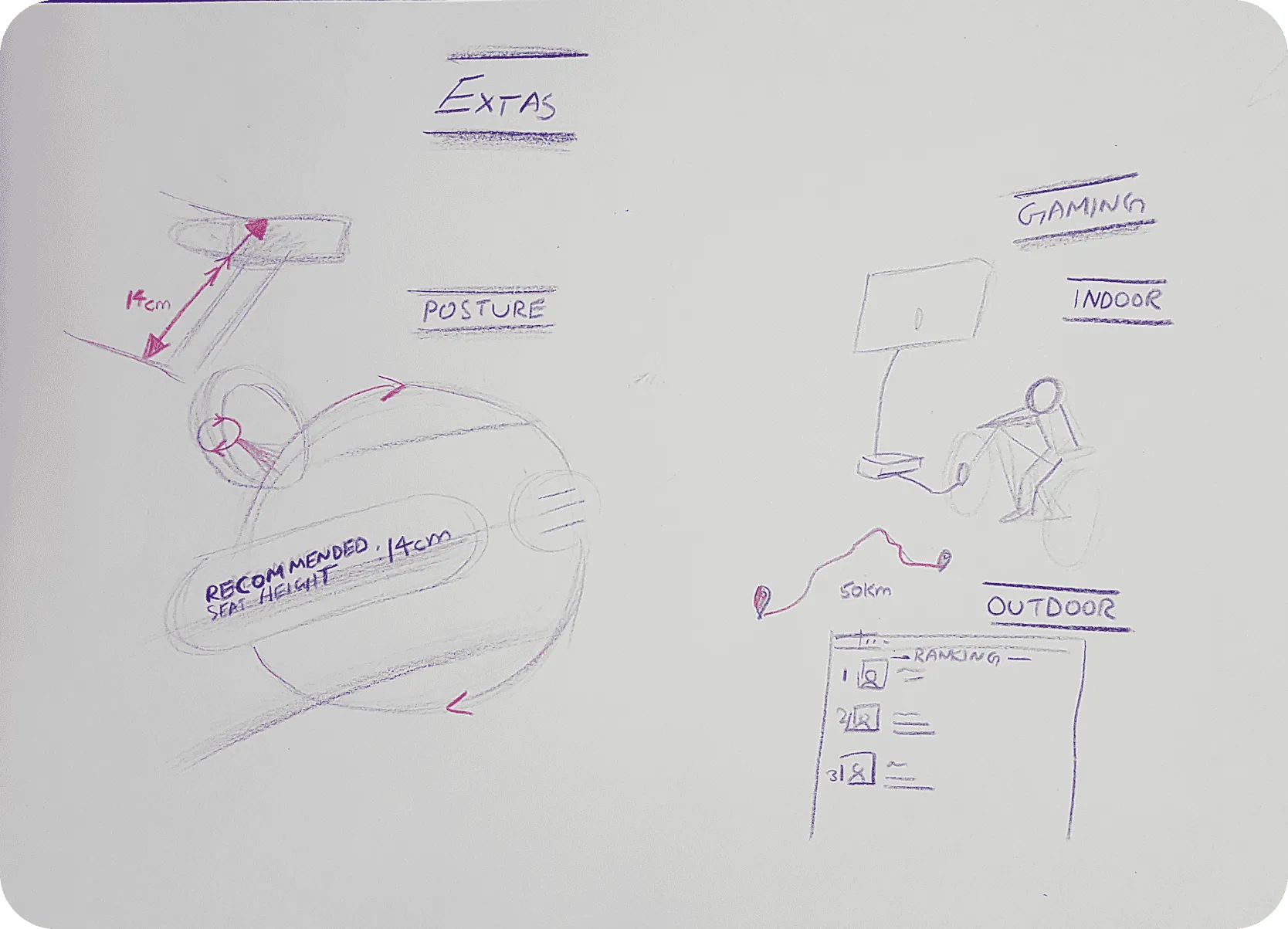
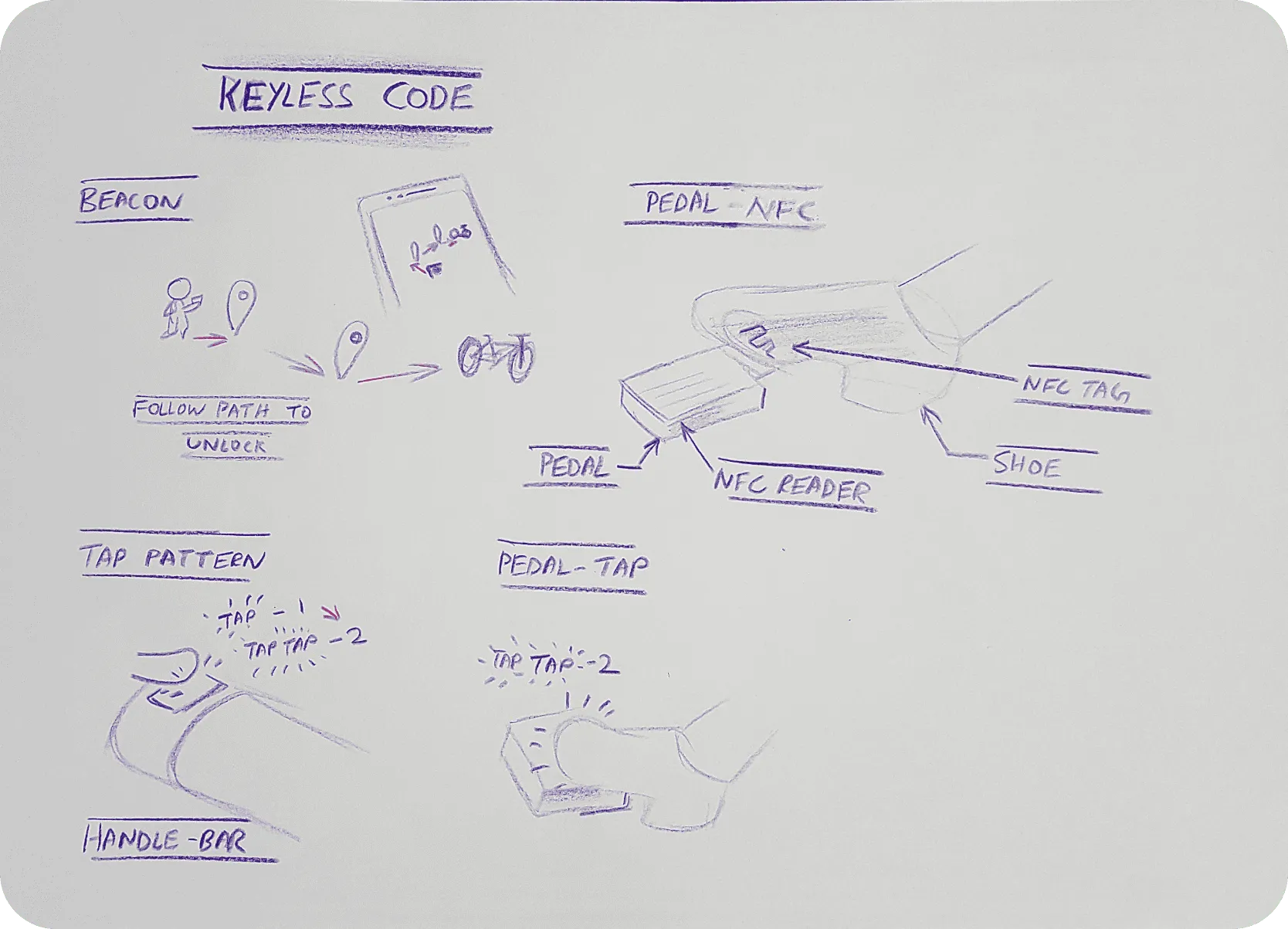
Based on our concept exploration, we decided to redesign the mounted frame lock. This option was chosen due to its potential to integrate most of the proposed features into a single device and its relatively straightforward setup across different bicycle types, while considering potential mounting constraints.
Prototyping & Design Refinement
The design process involved extensive form exploration and prototyping:
Form Exploration
Sketched and modeled various forms (organic, futuristic, muscular) using thermocol and MDF to find a suitable aesthetic. A semi-organic form was ultimately chosen, with a vacuum-formed model specifically used for organizing and fitting electronics components for the working prototype. Sketches served as a guide for the final form and electronics component fit; however, if space proves insufficient, the final form will be 3D printed, requiring a separate evaluation for both the working prototype and the 3D-printed final form.
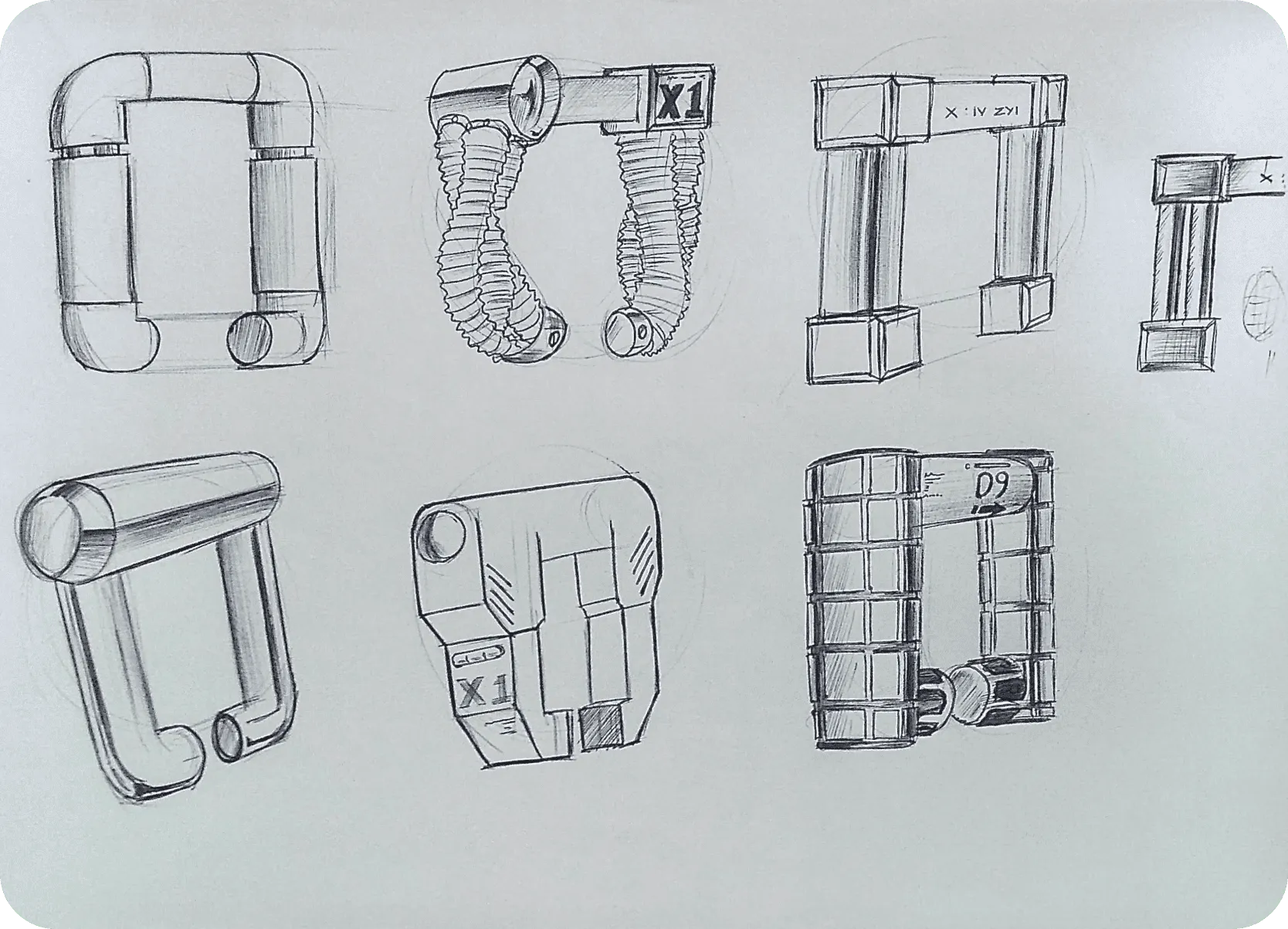
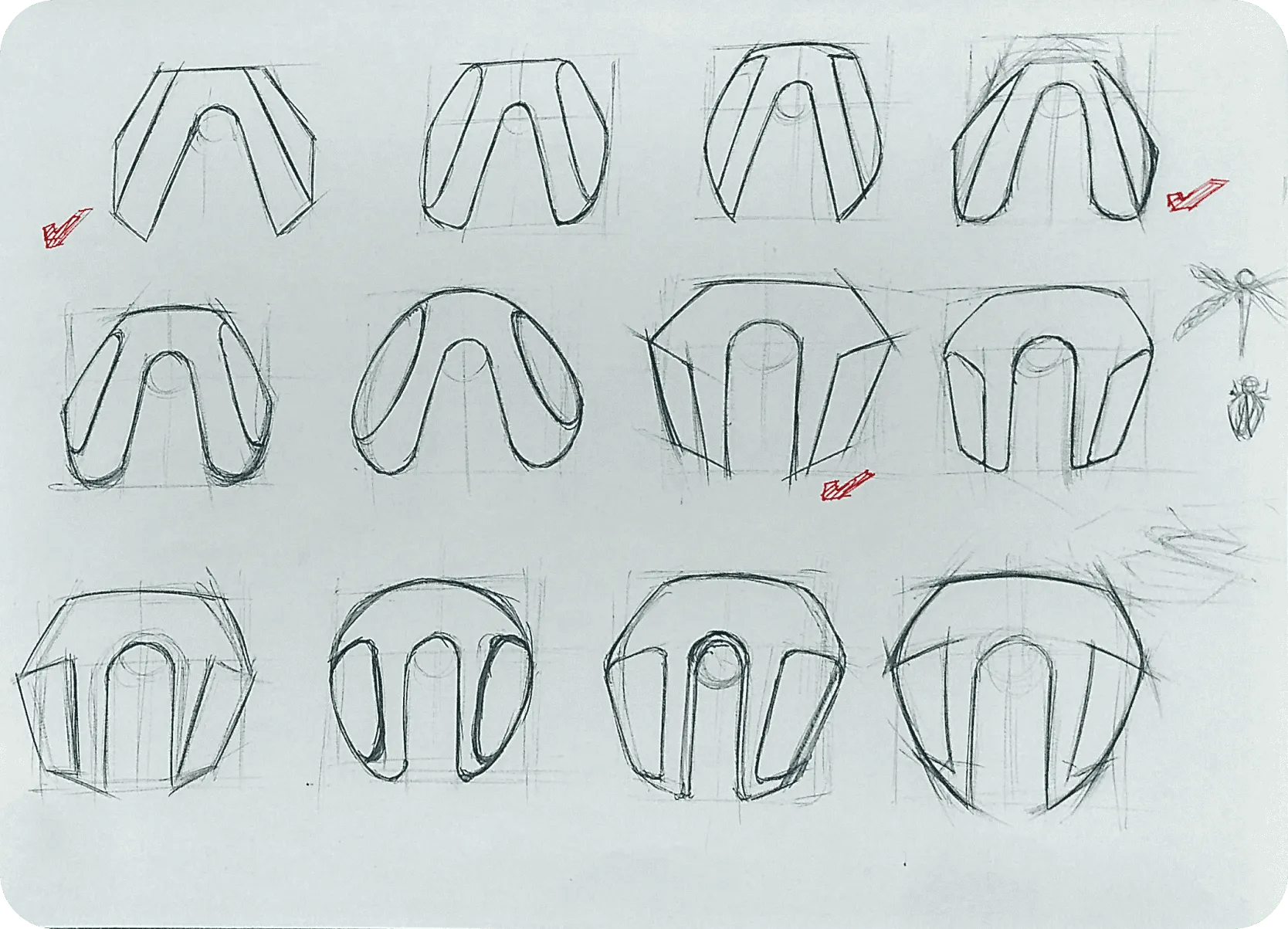
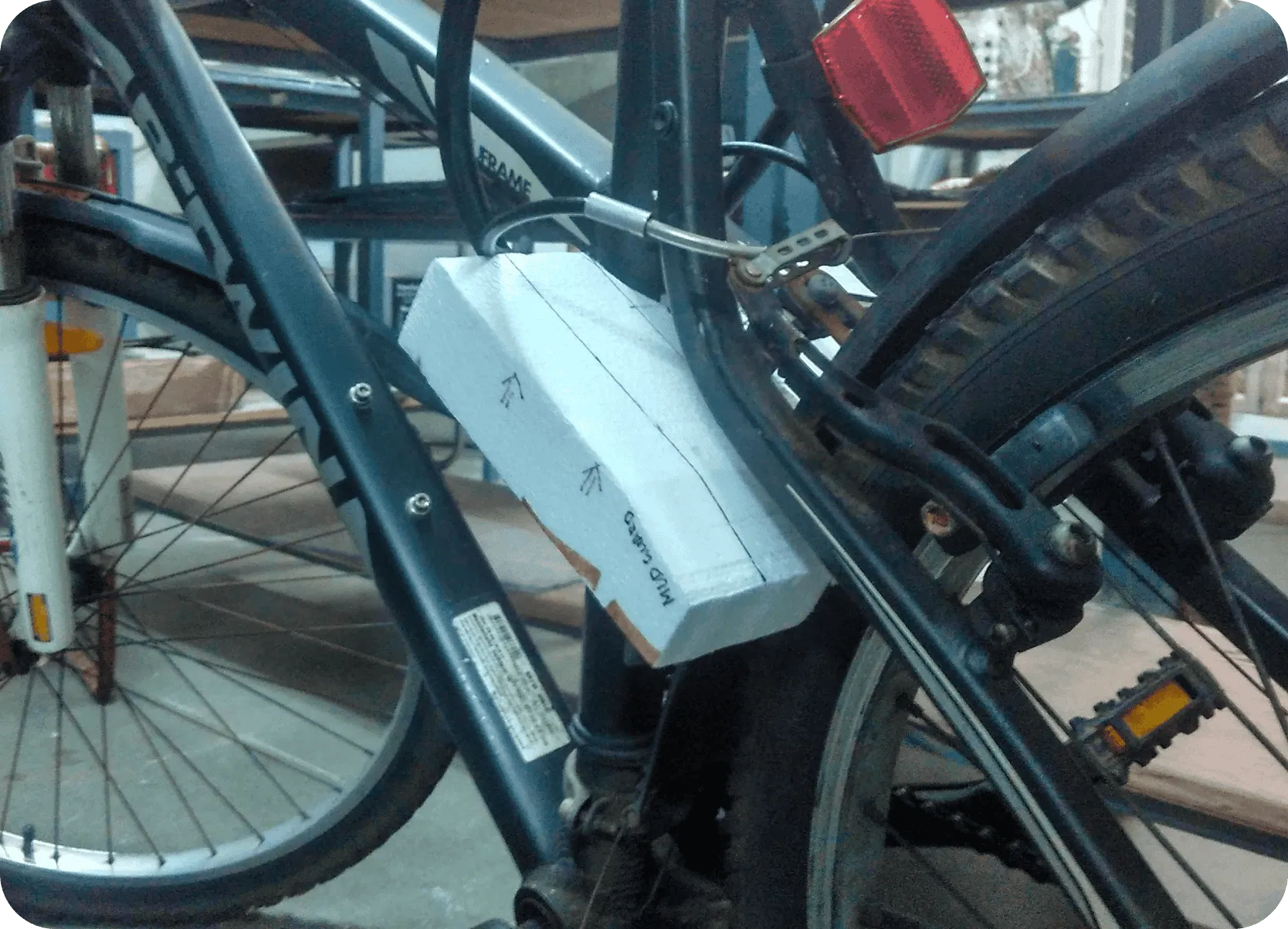
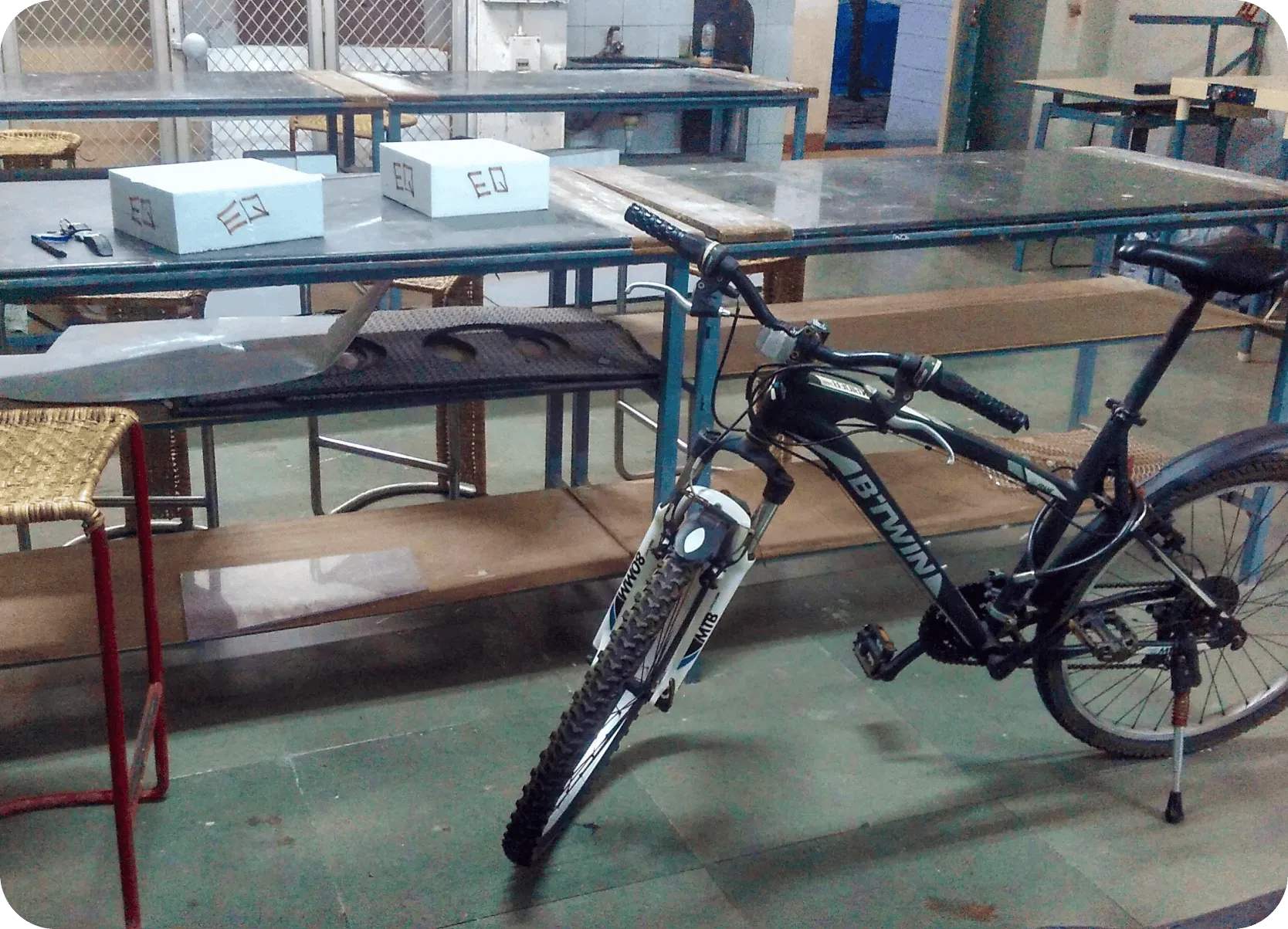
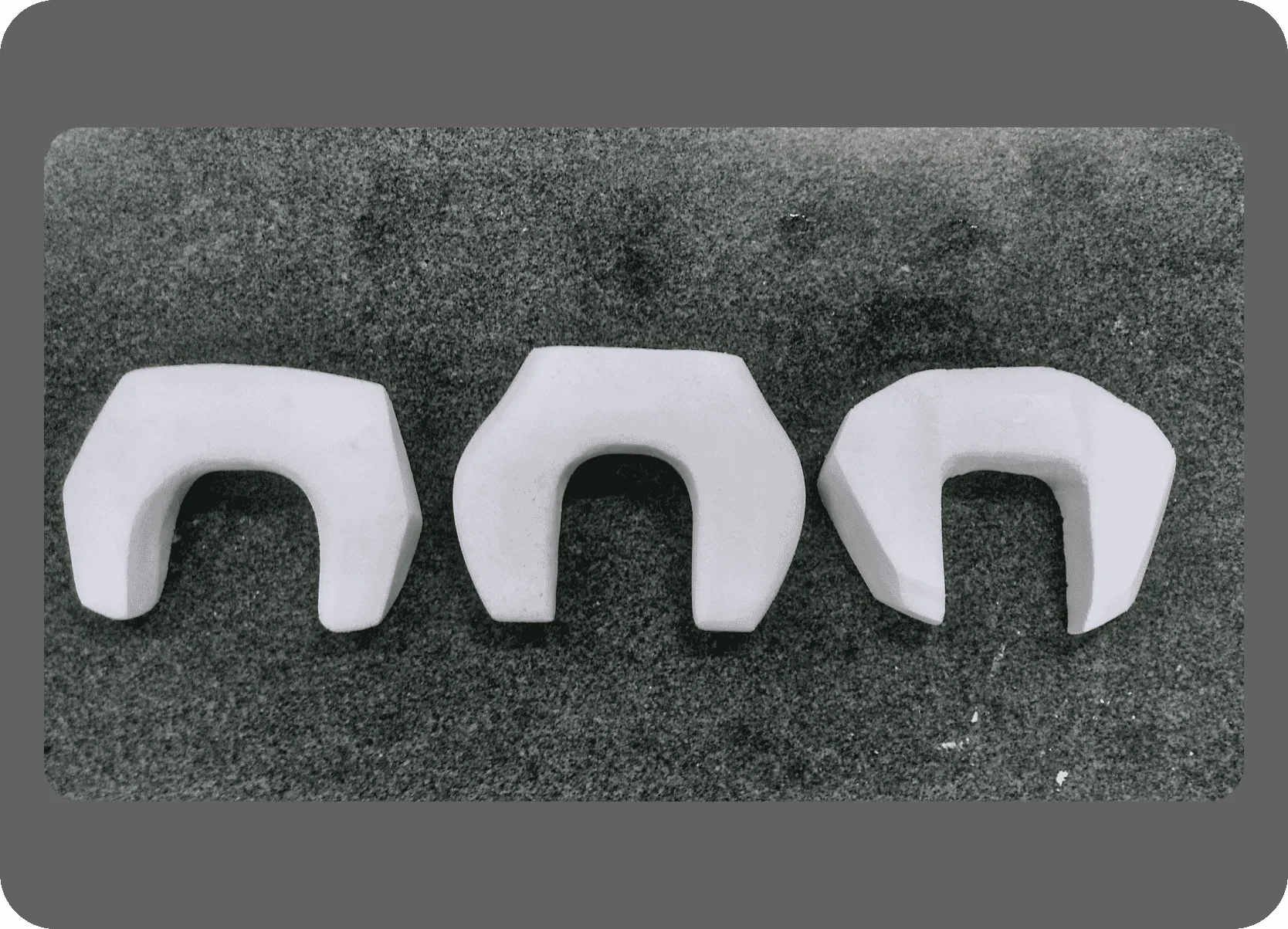
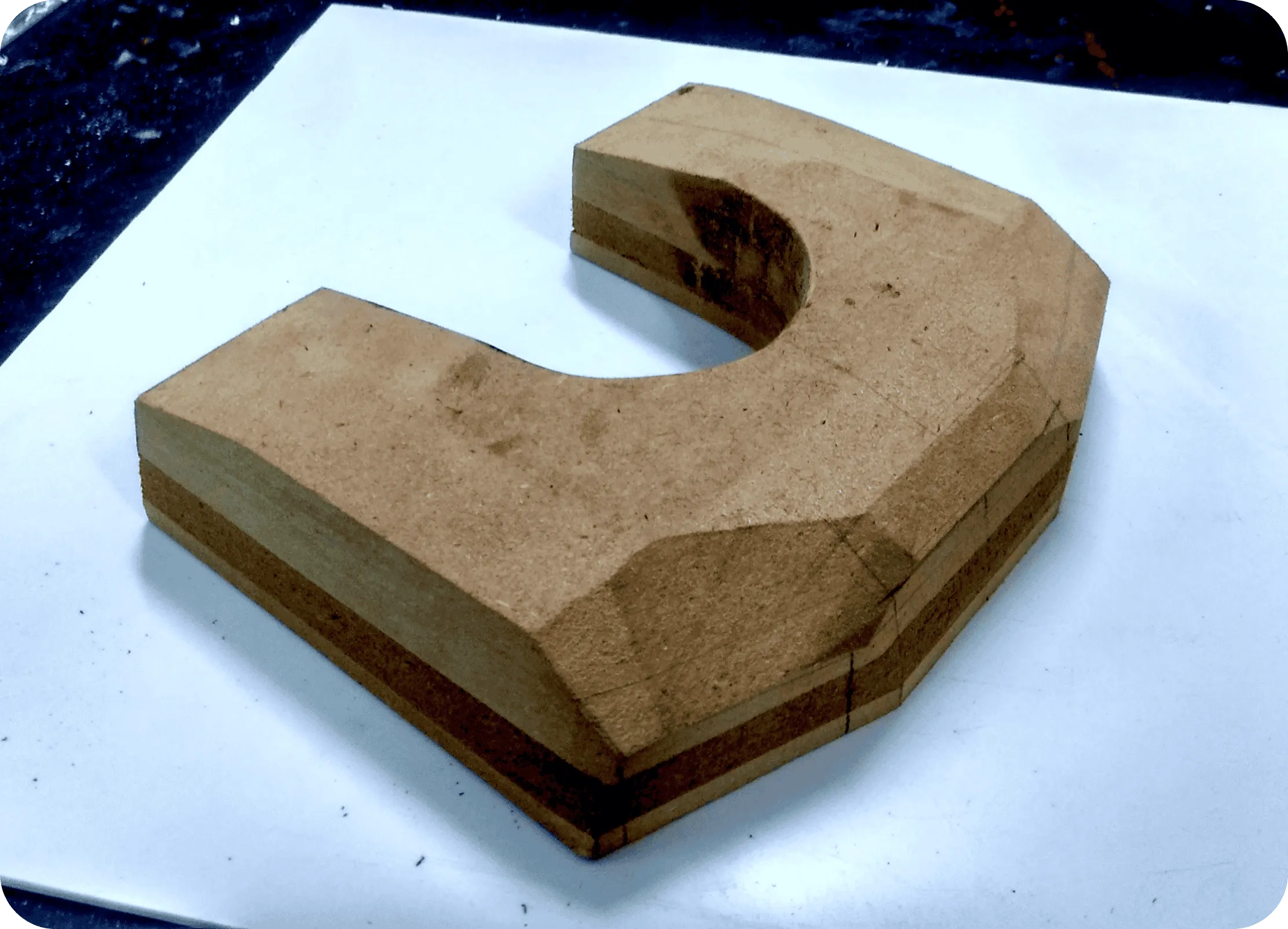
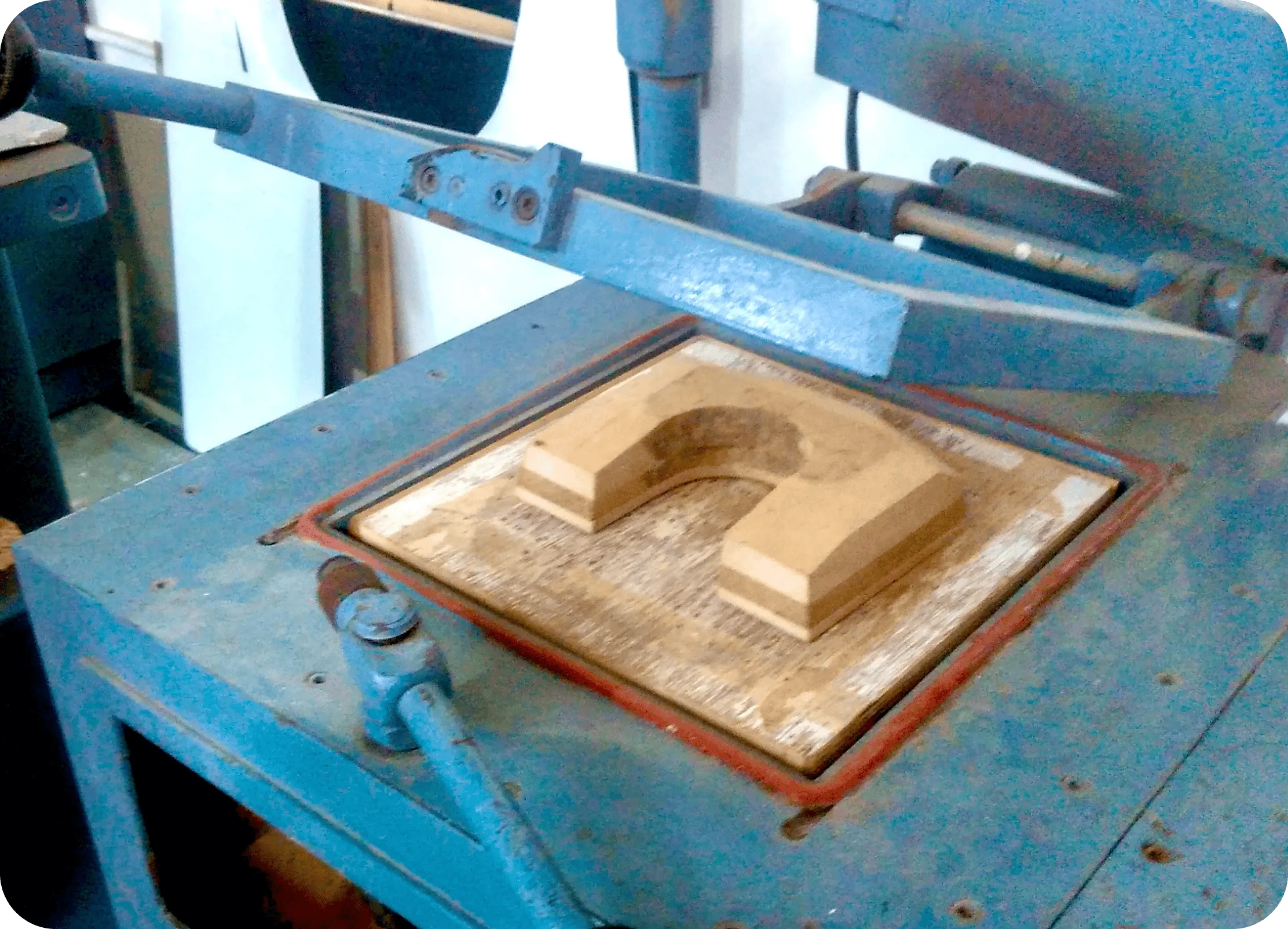

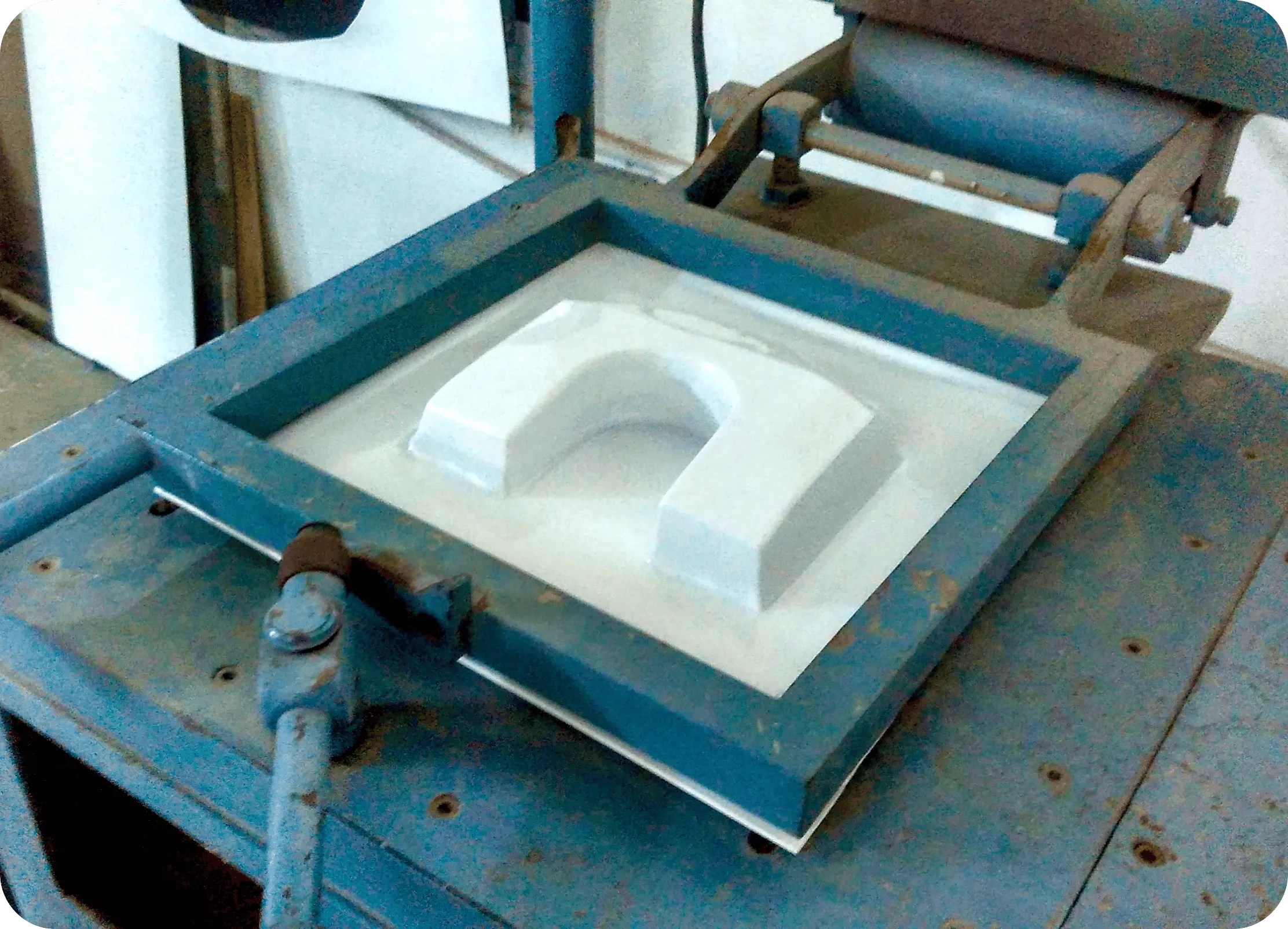

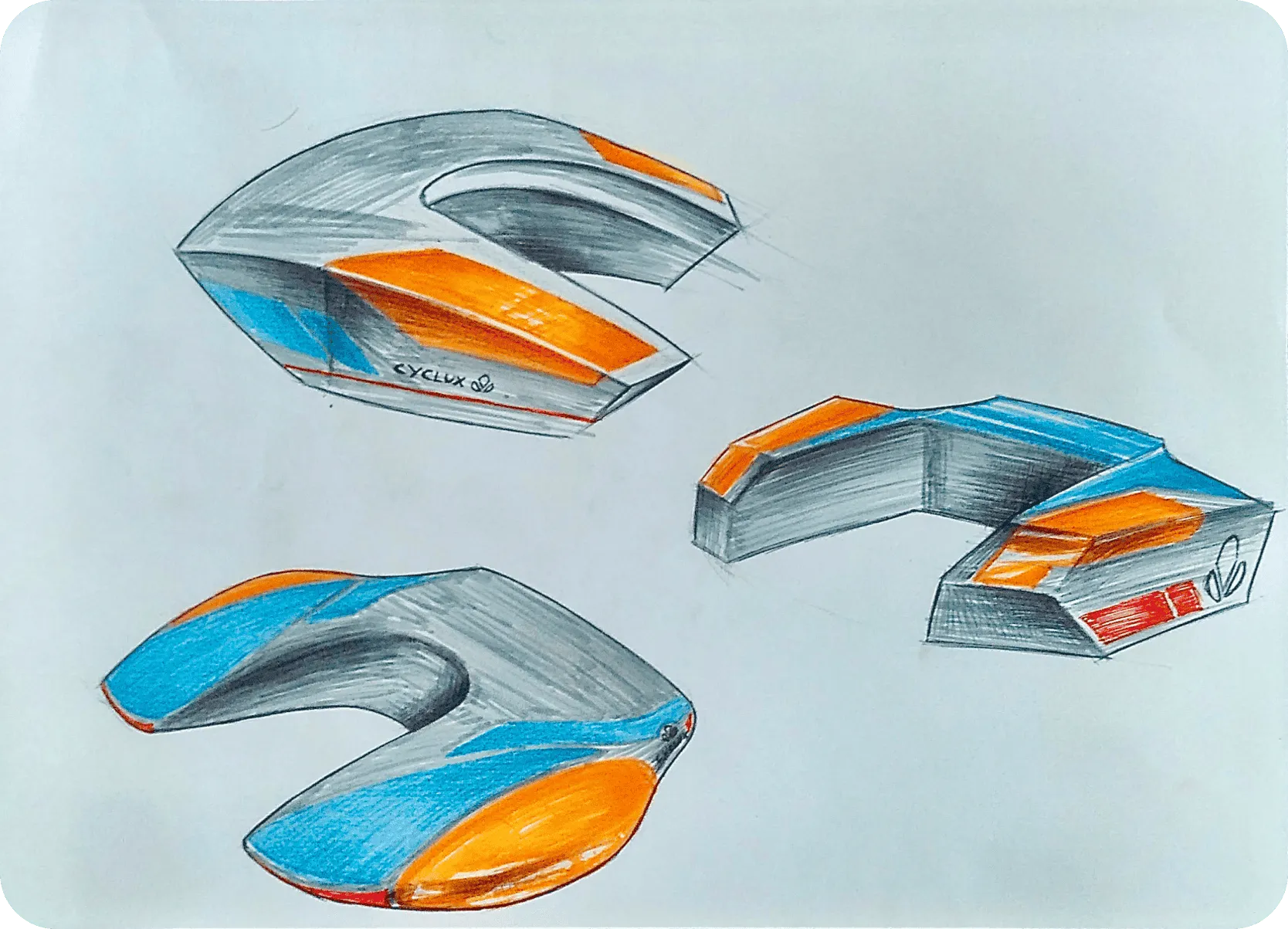
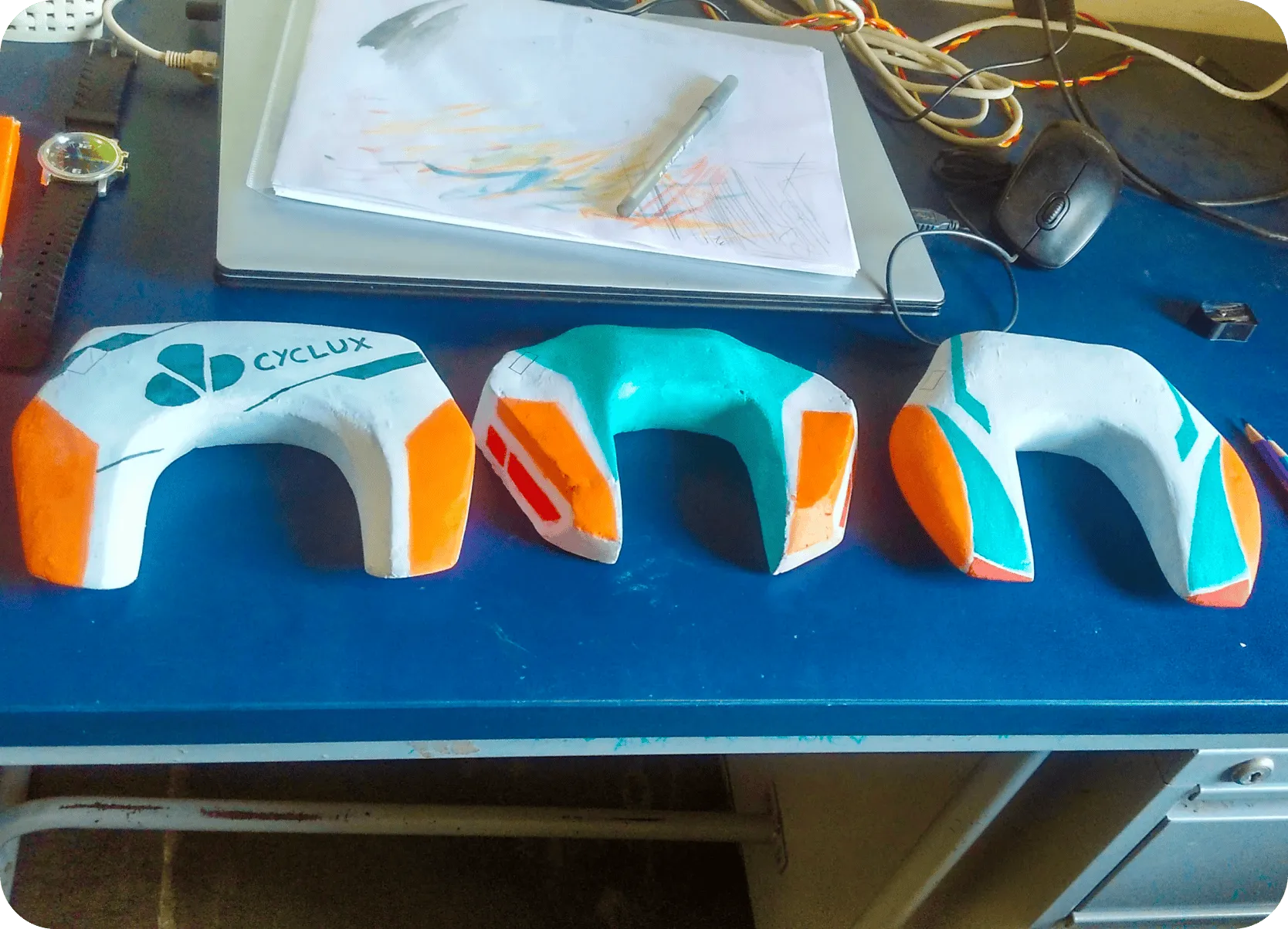
Color & Branding
The name "Cyclux" was chosen by combining "cycle lock" and "lux" (SI unit for light), referencing the product's integrated lighting. The abstract Cyclux logo subtly represents a shackle, a cyclist on handlebars, eco-friendly elements (petal/sepal), implied device lighting, and a field of vision, emphasizing safety. Constructed with precise circles and lines for a modern look, the logo's font is Ubuntu, chosen for its dynamic character and resemblance to bicycle frame parts (like 'l' as a fork and 't' as handlebars). The mobile app icon is a simplified version of the logo. The grey, red, and light blue color palette complements common bicycle aesthetics, as illustrated by the mood board.
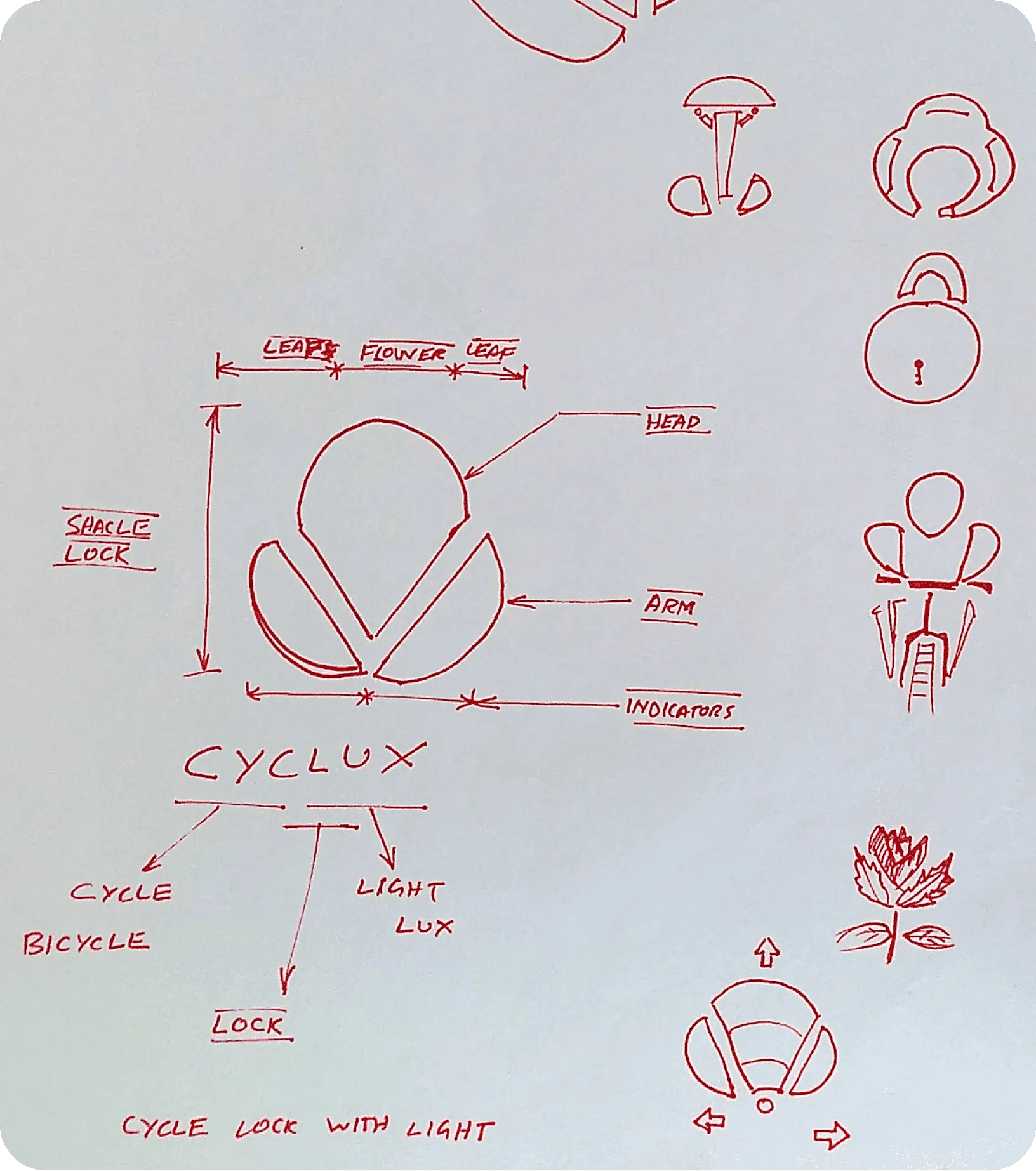
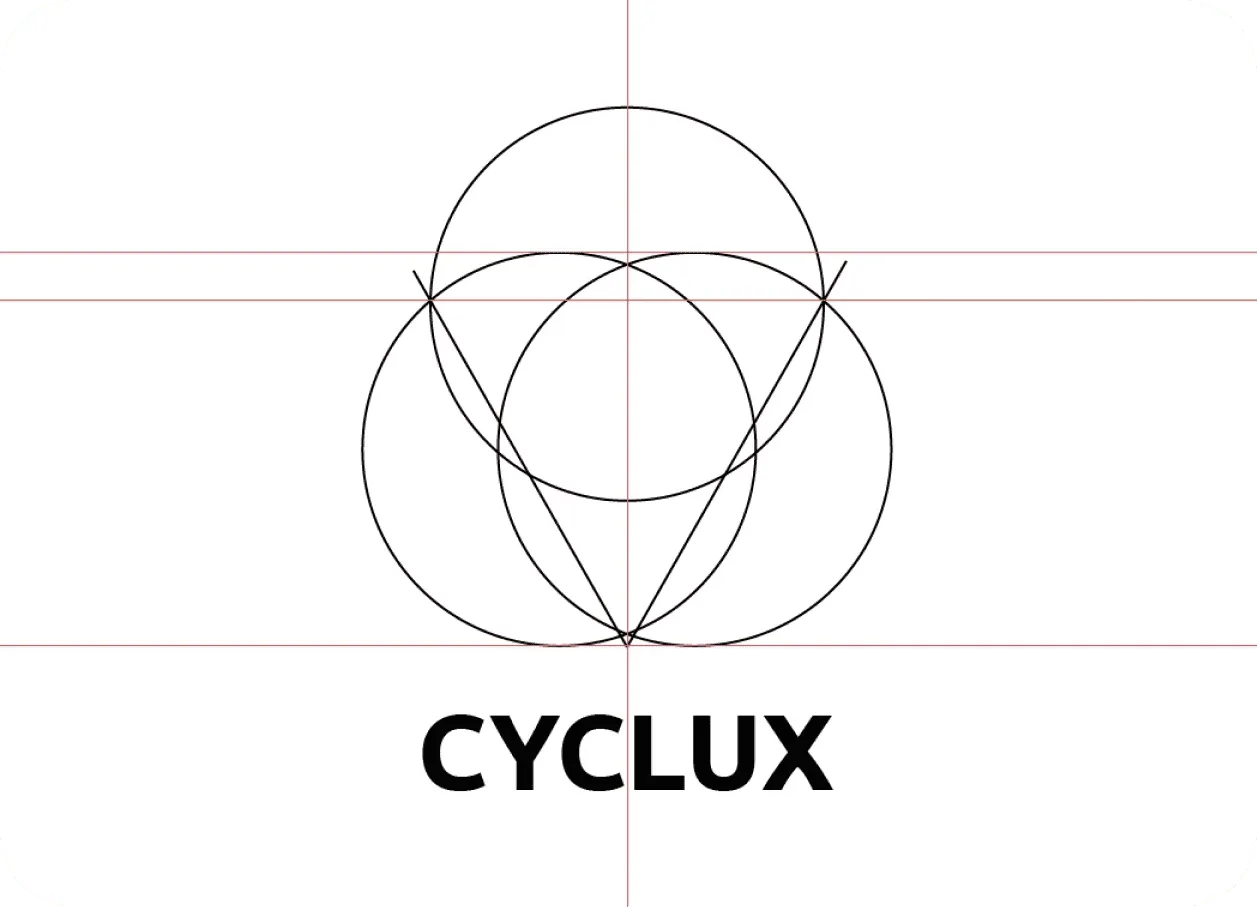
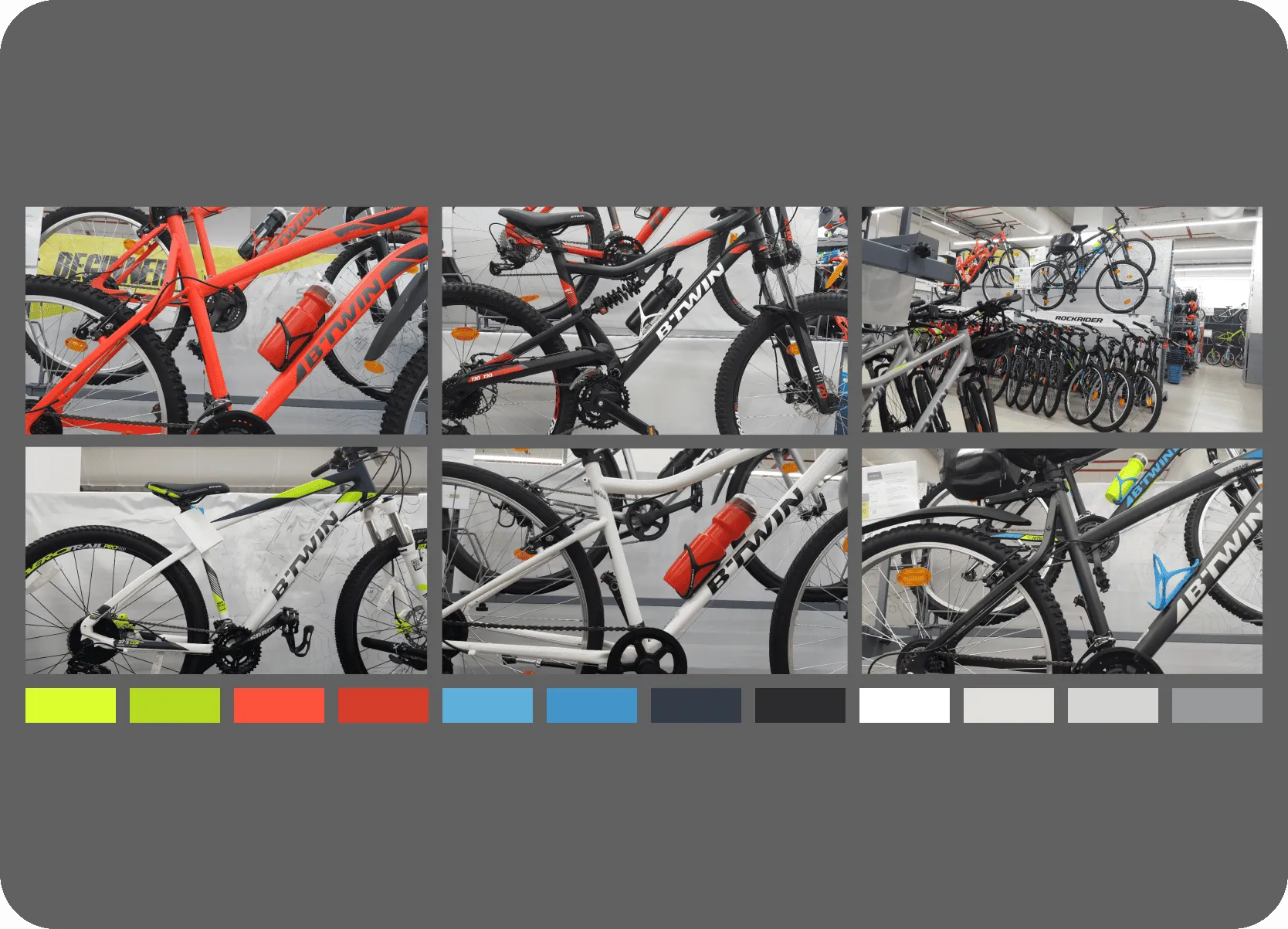

Wireframing
Created low-fidelity sketches and high-fidelity wireframes for the companion app.




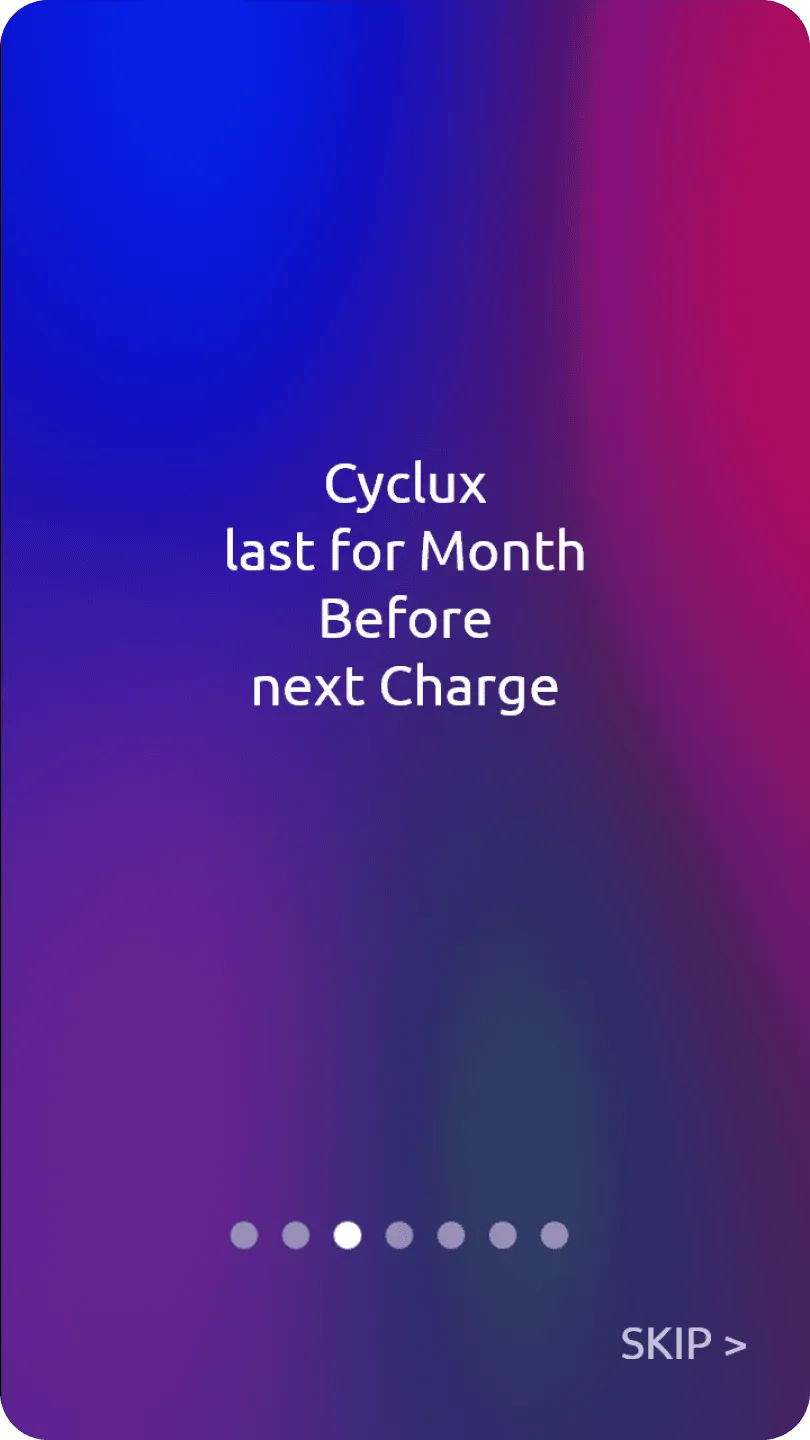

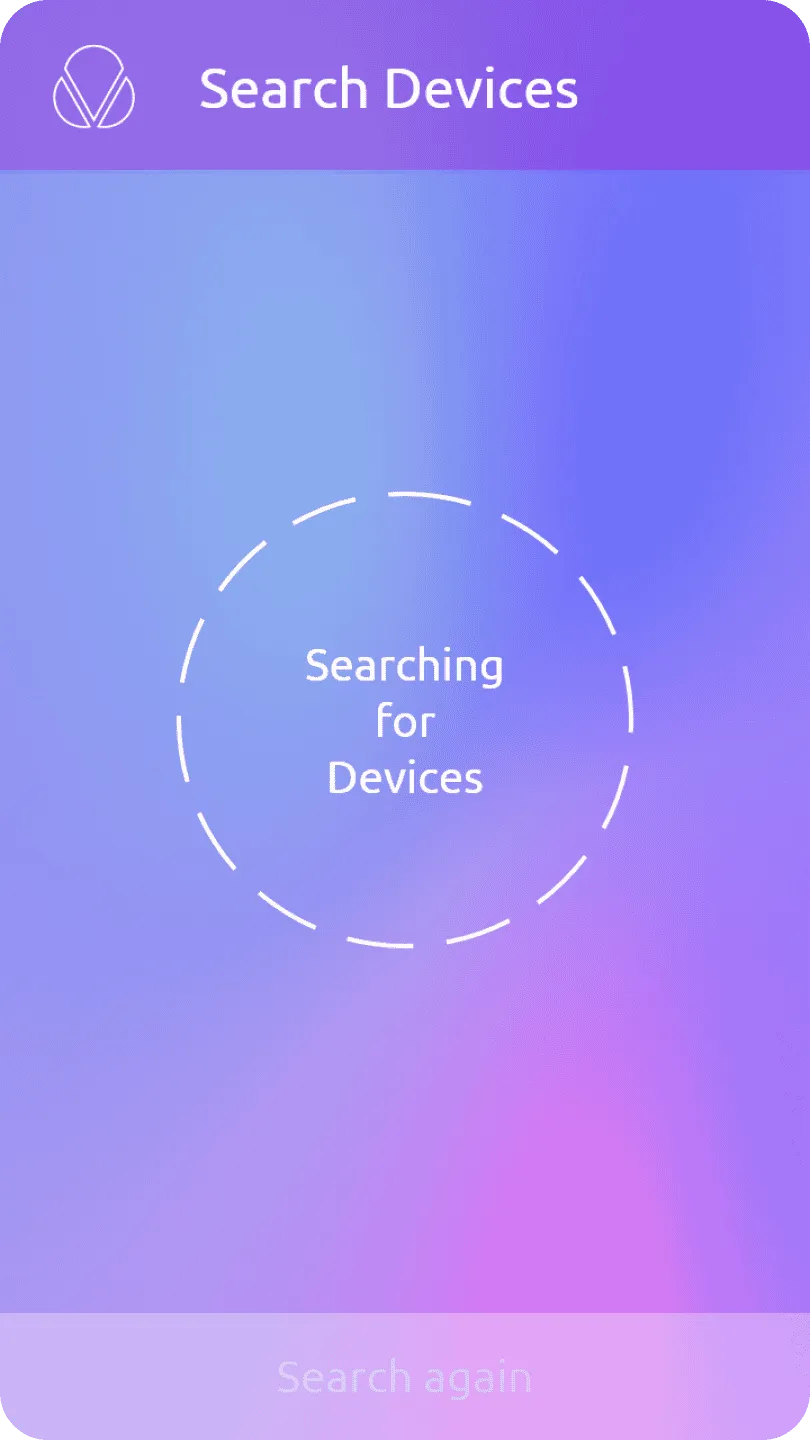

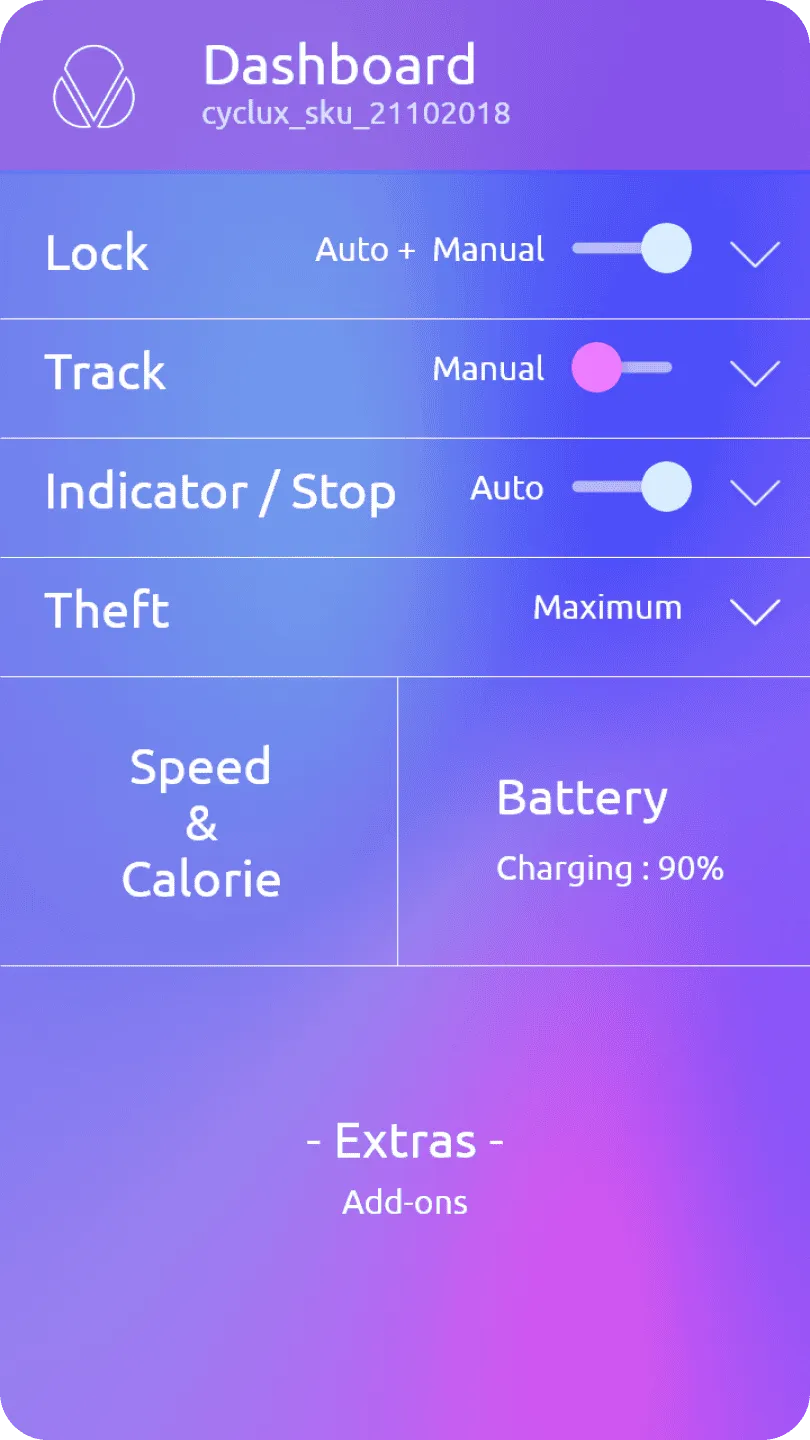
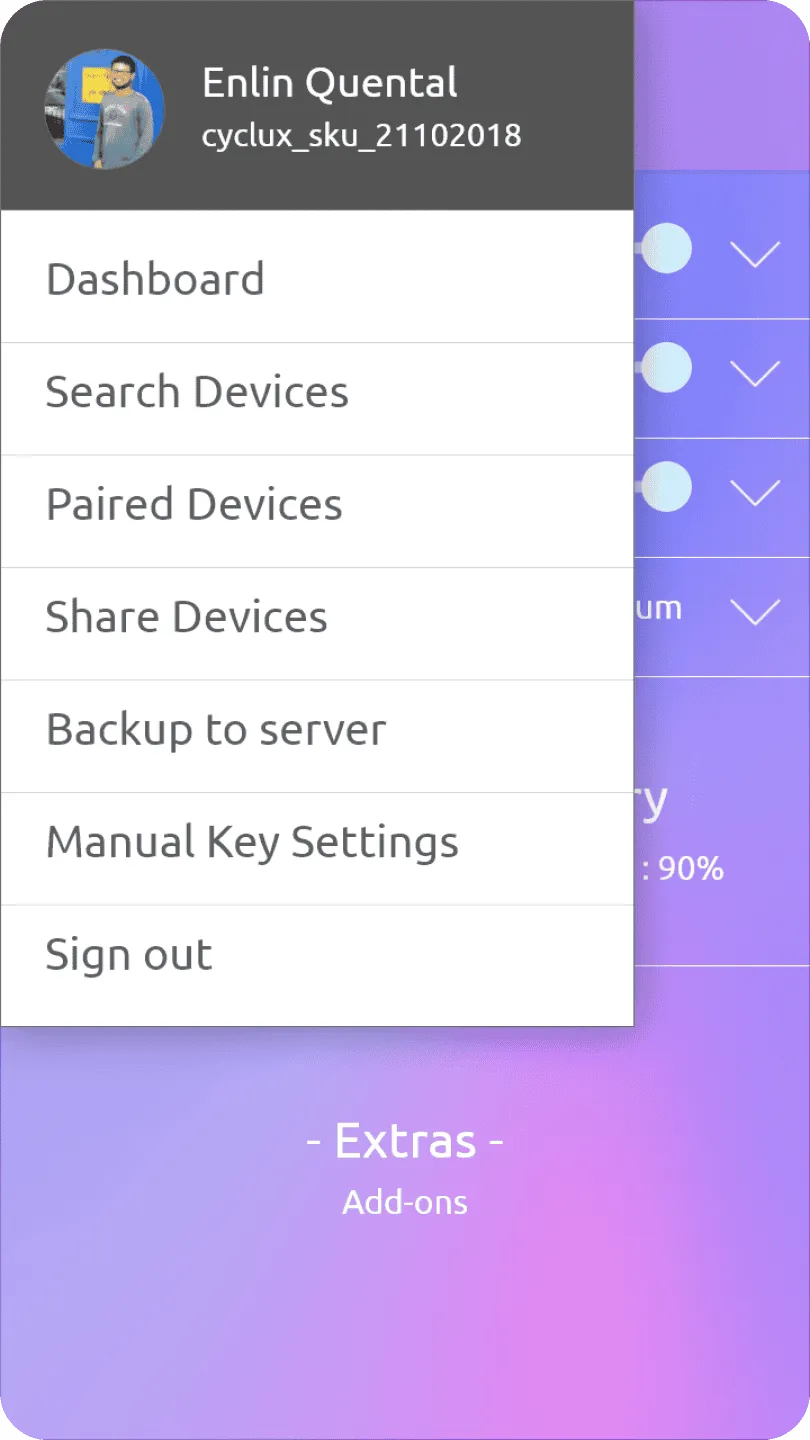


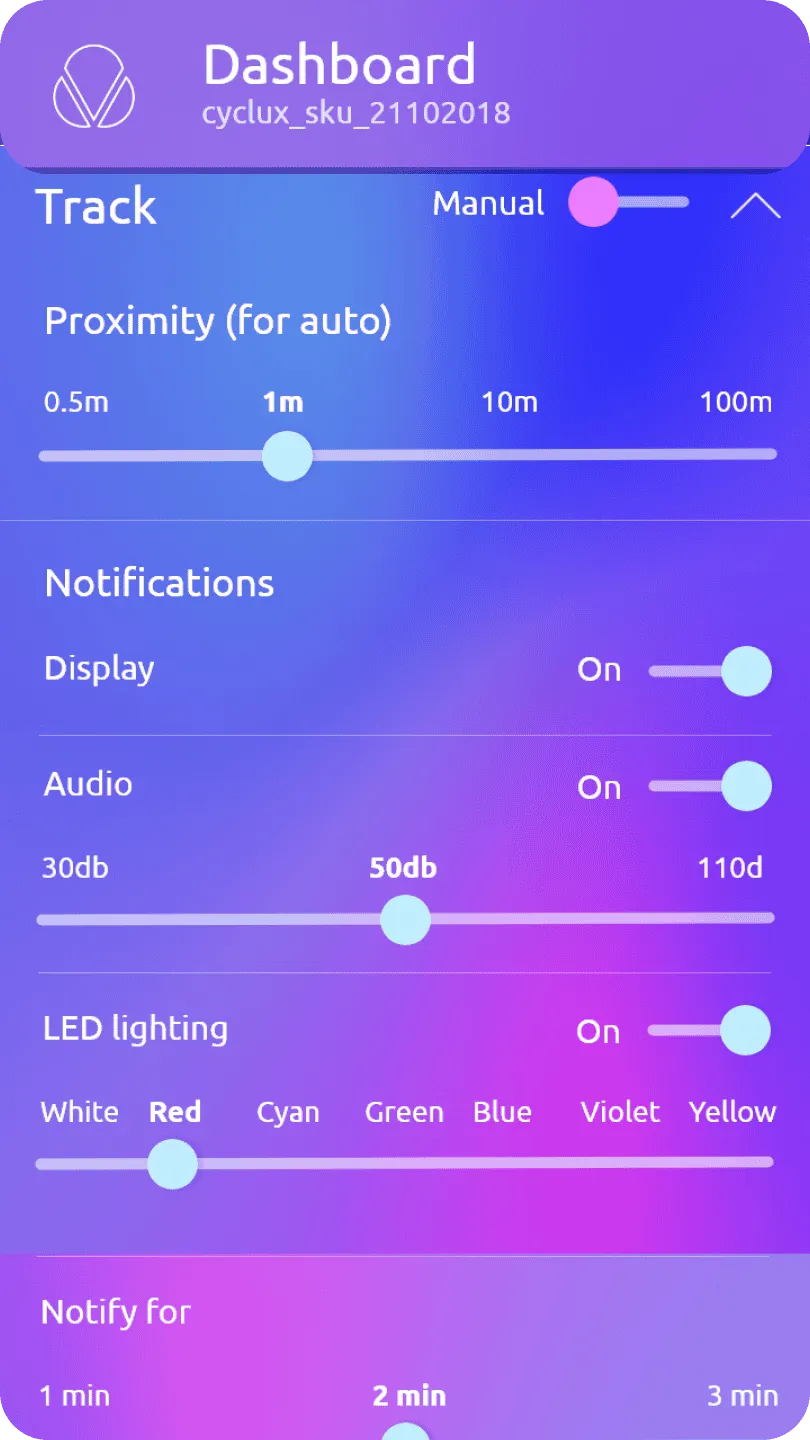
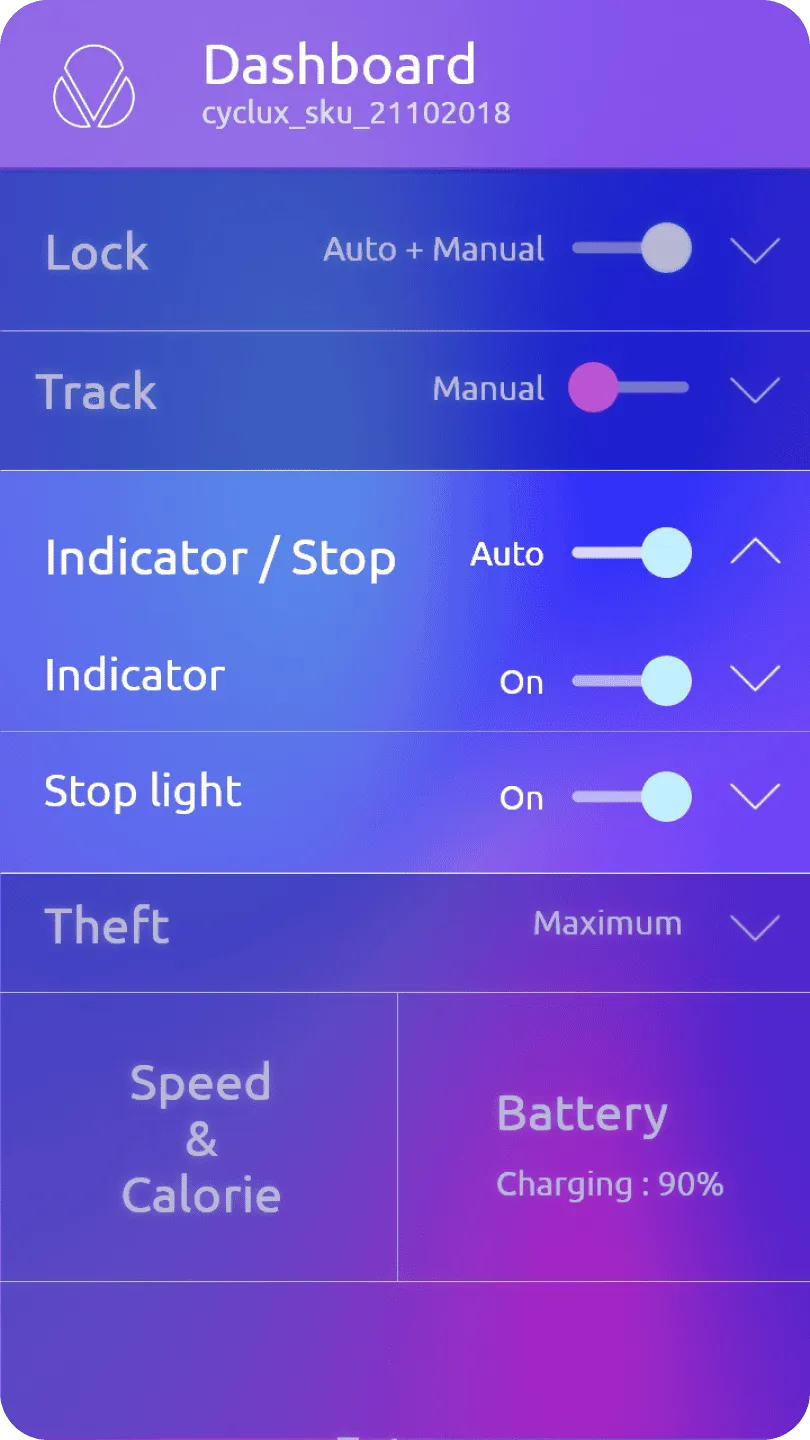
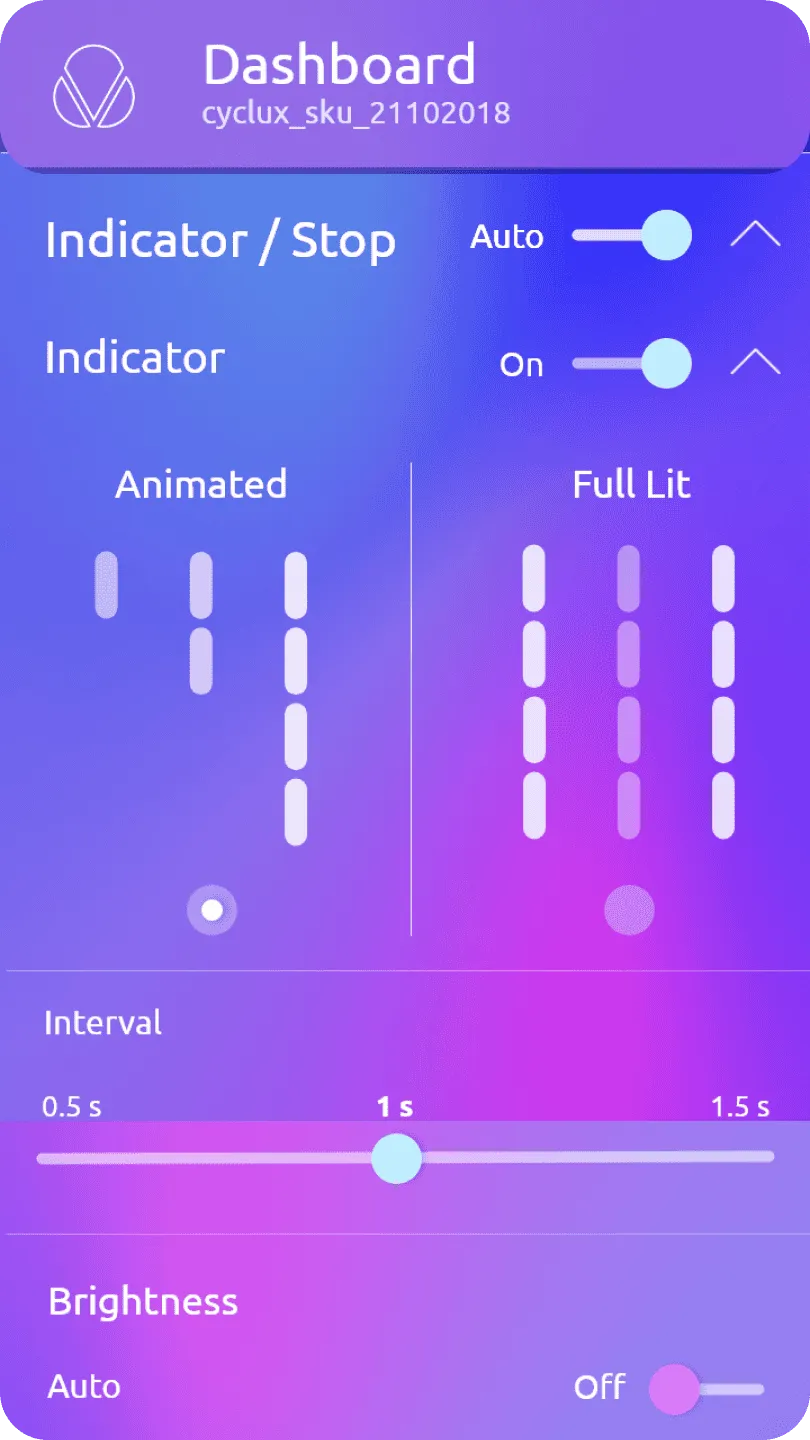
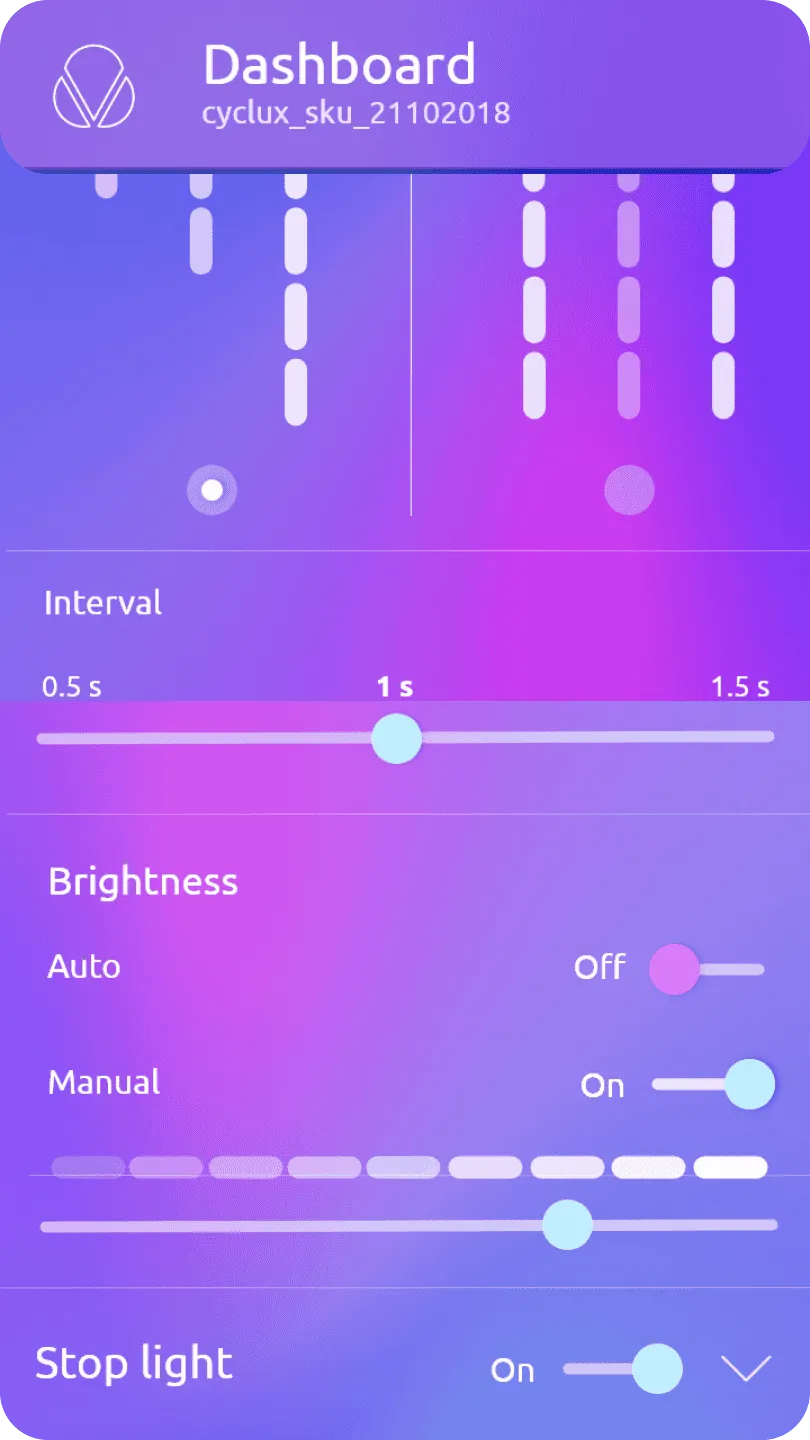
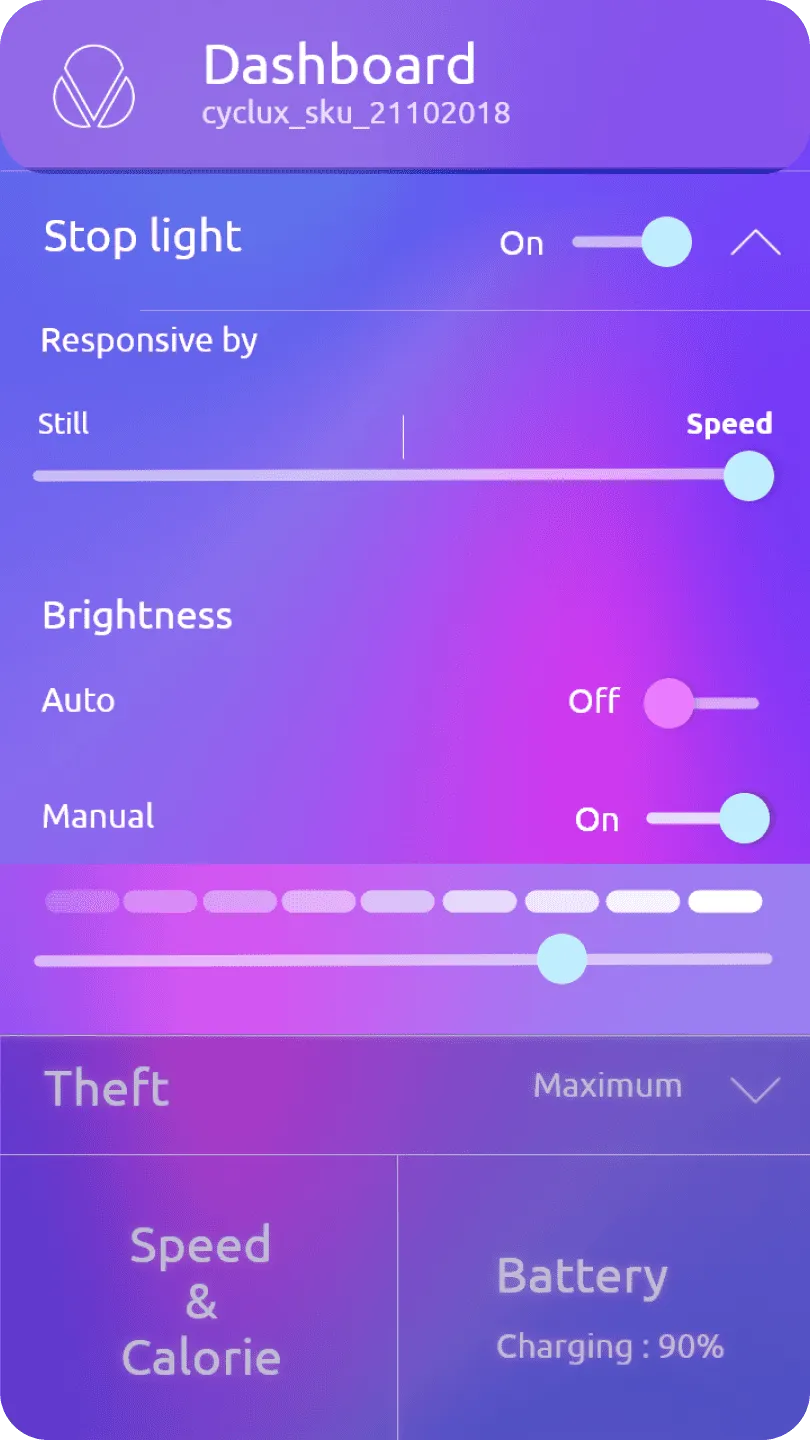

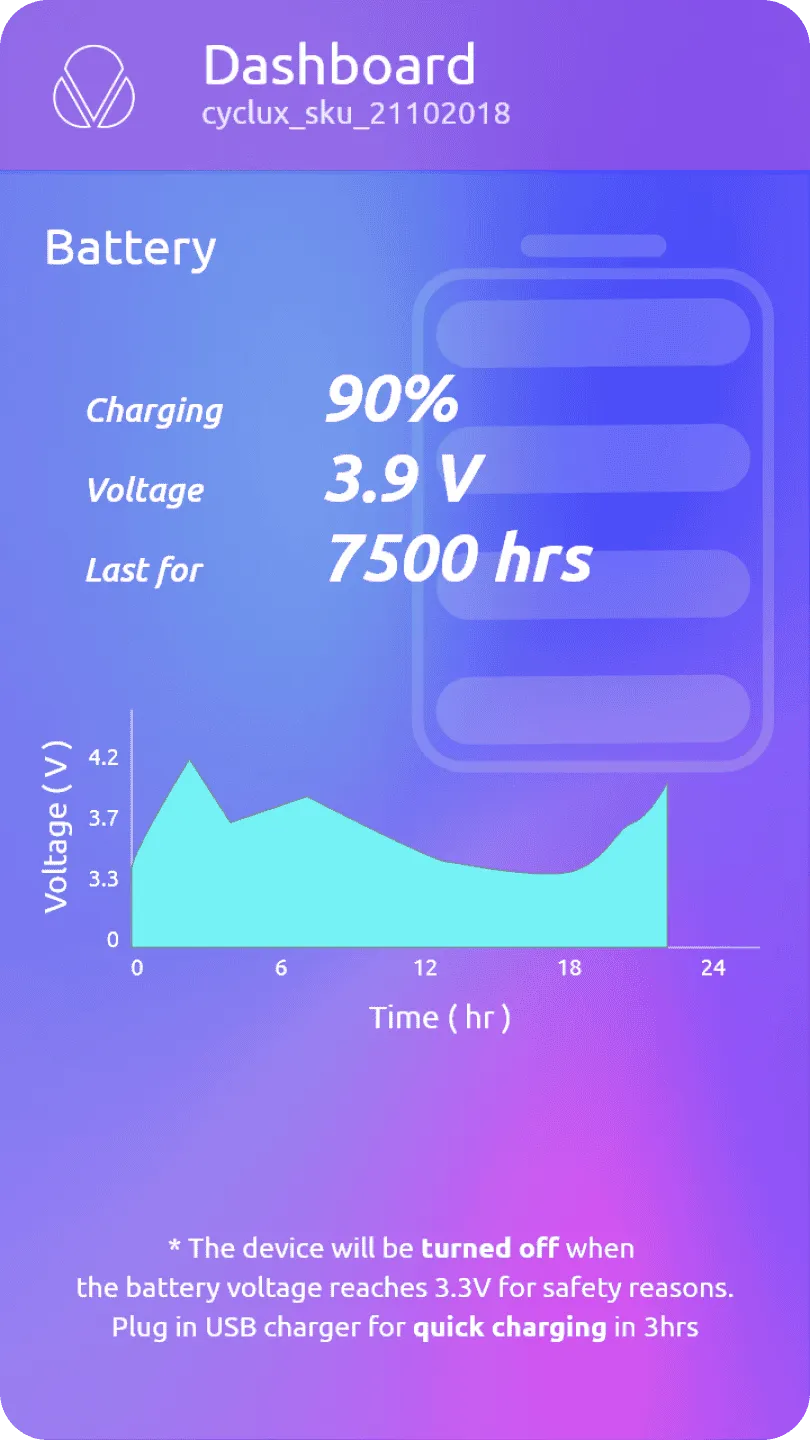


Working Prototype
Leveraging a vacuum-formed body, a functional prototype was constructed to showcase the core innovations of the smart bike lock. This prototype successfully demonstrated the robust locking mechanism, seamless Bluetooth Low Energy (BLE) connectivity for app interaction, the intuitive functionality of the automatic turn indicators, and the effectiveness of the integrated alert system (for tampering or falls). Notably, the prototype features self-charging via an integrated solar panel, and speed is accurately determined by a working Hall effect magnetic sensor on the rotating wheel rim.
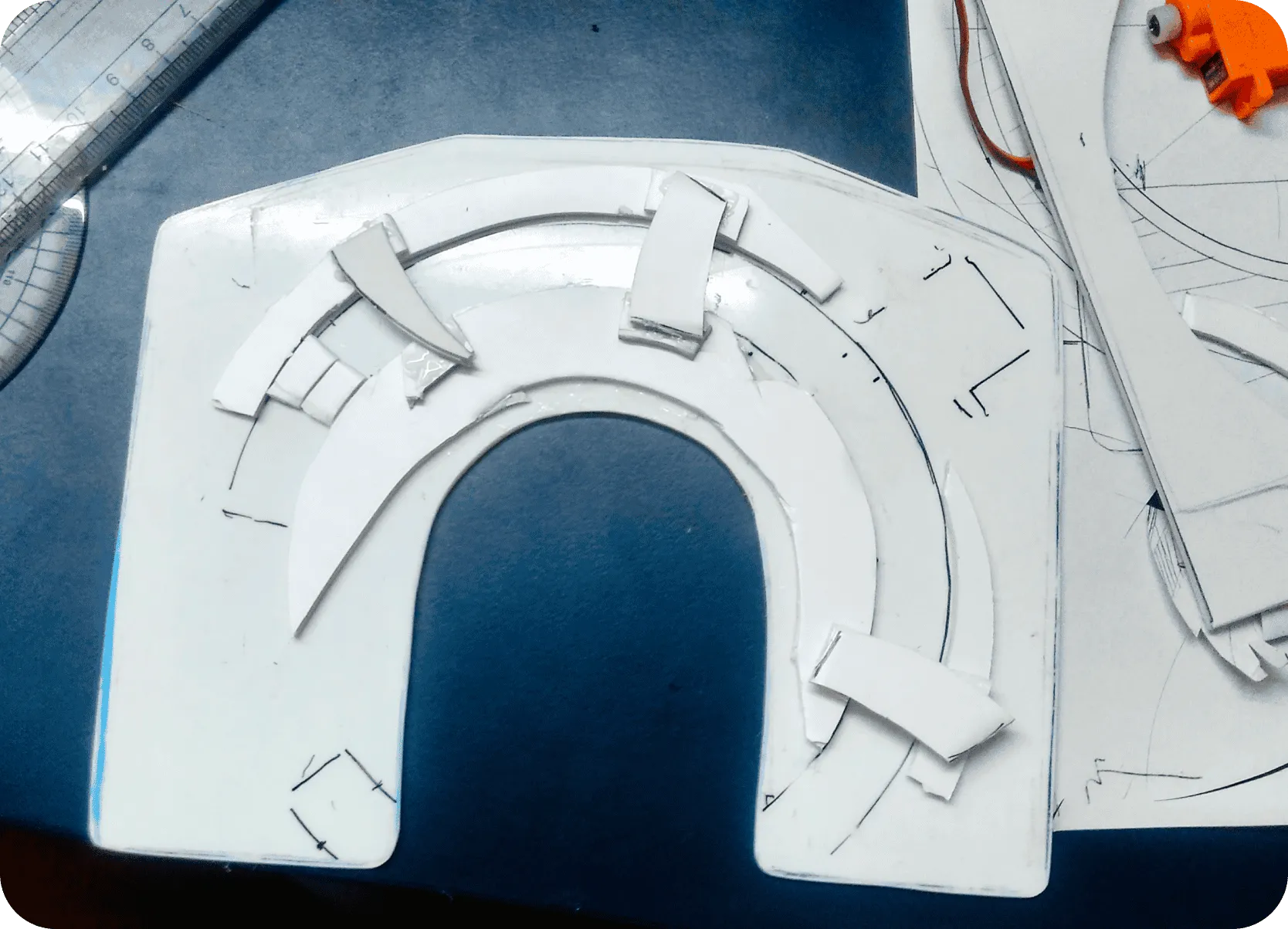
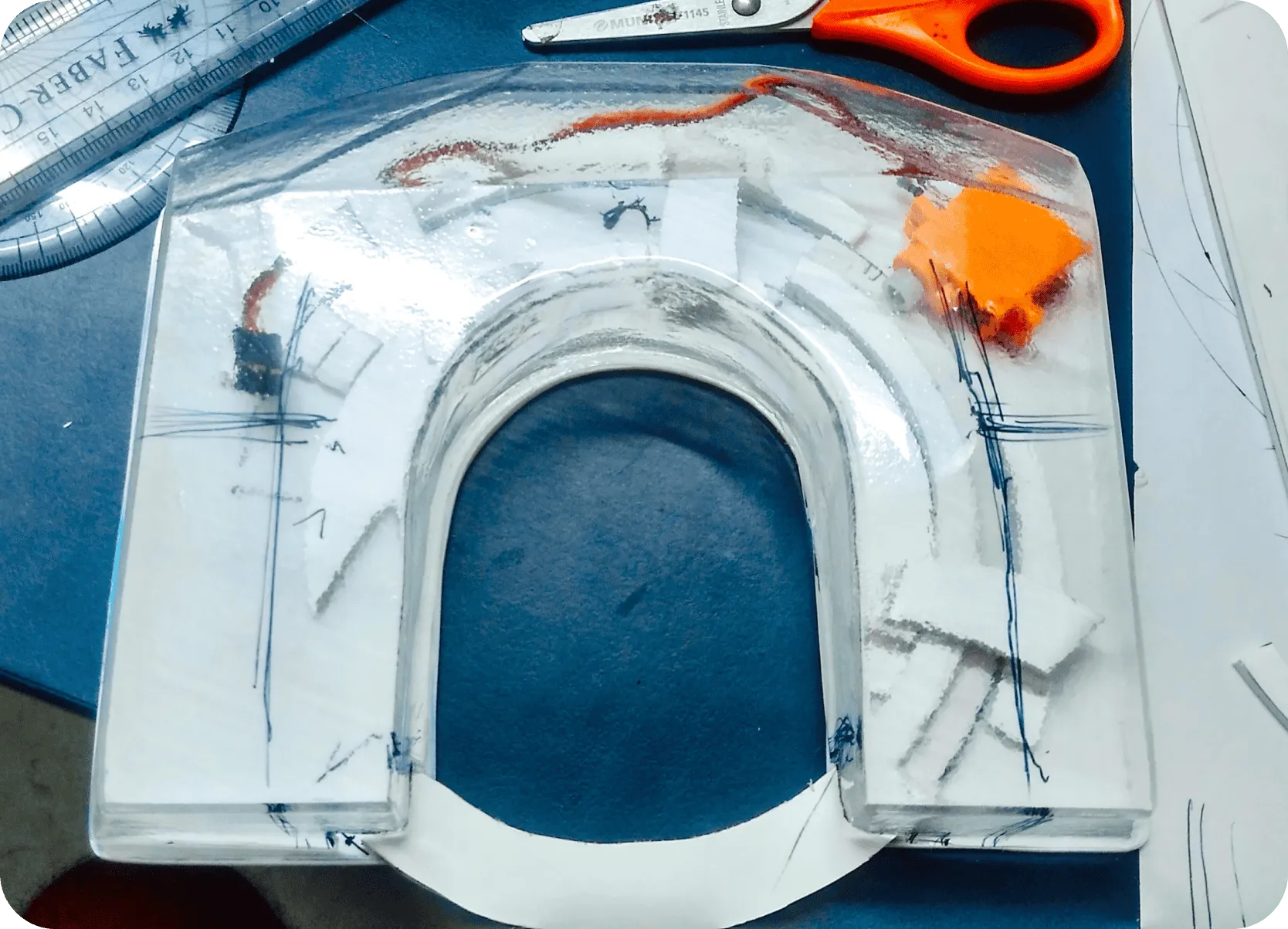
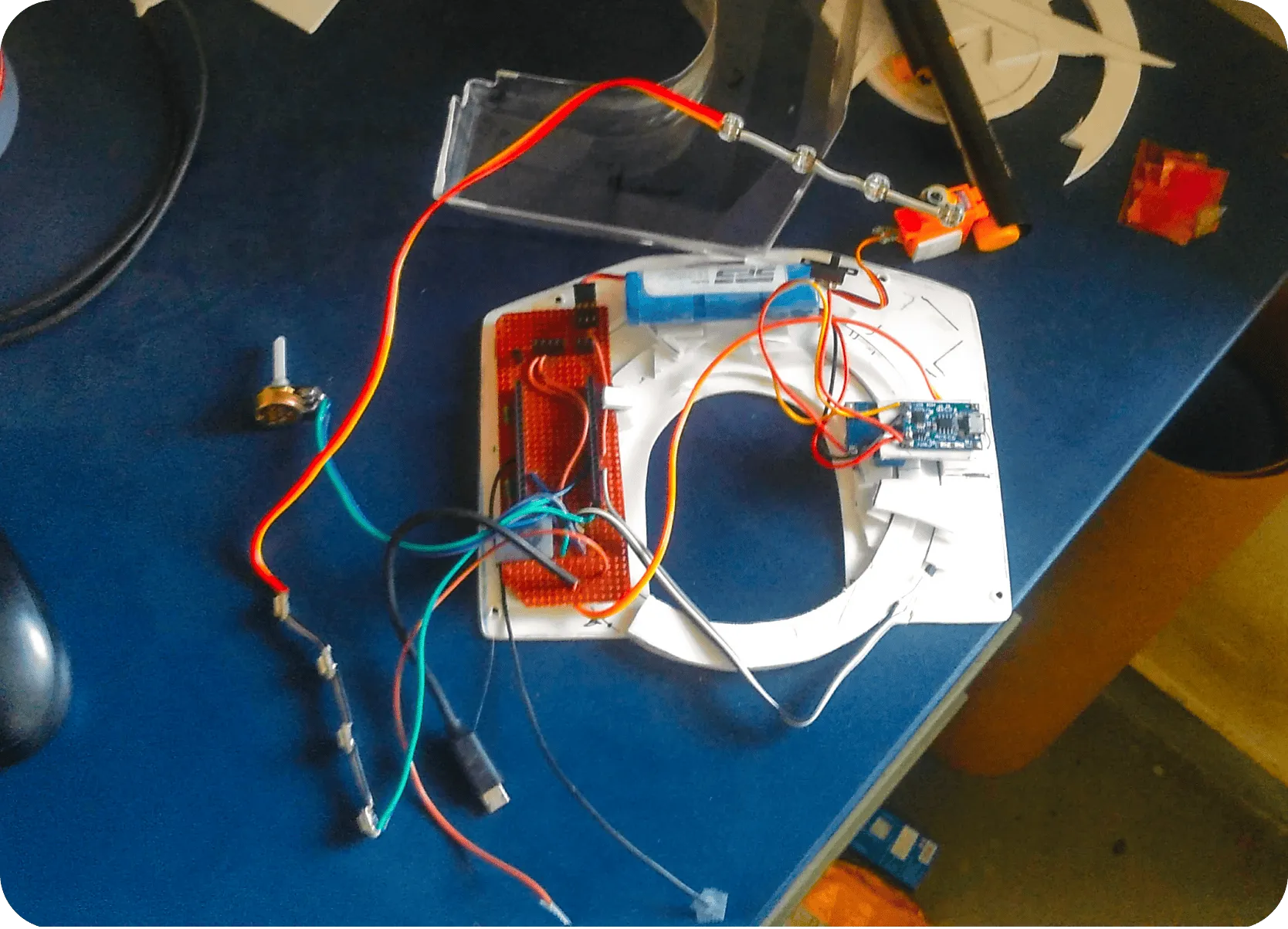
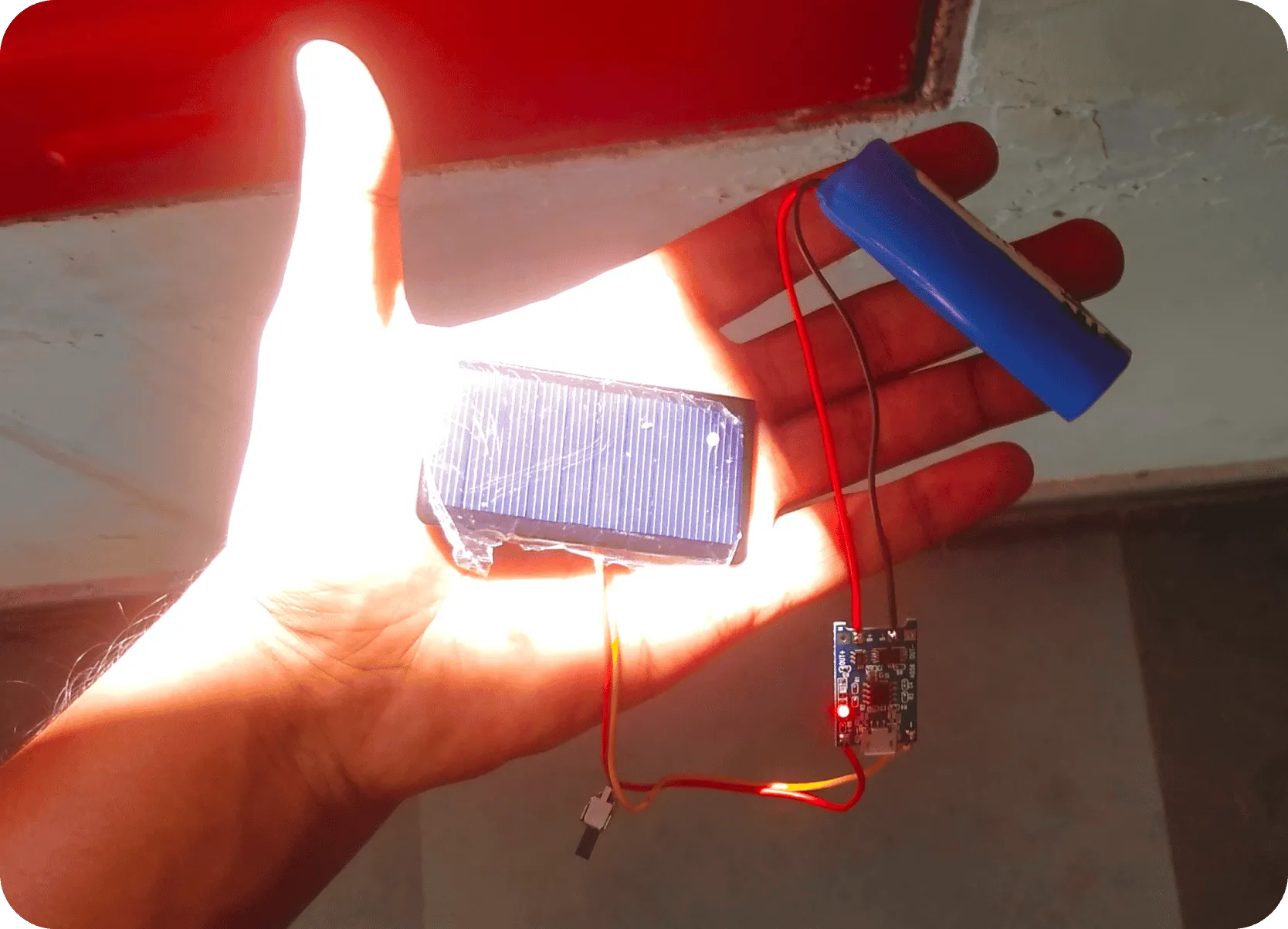
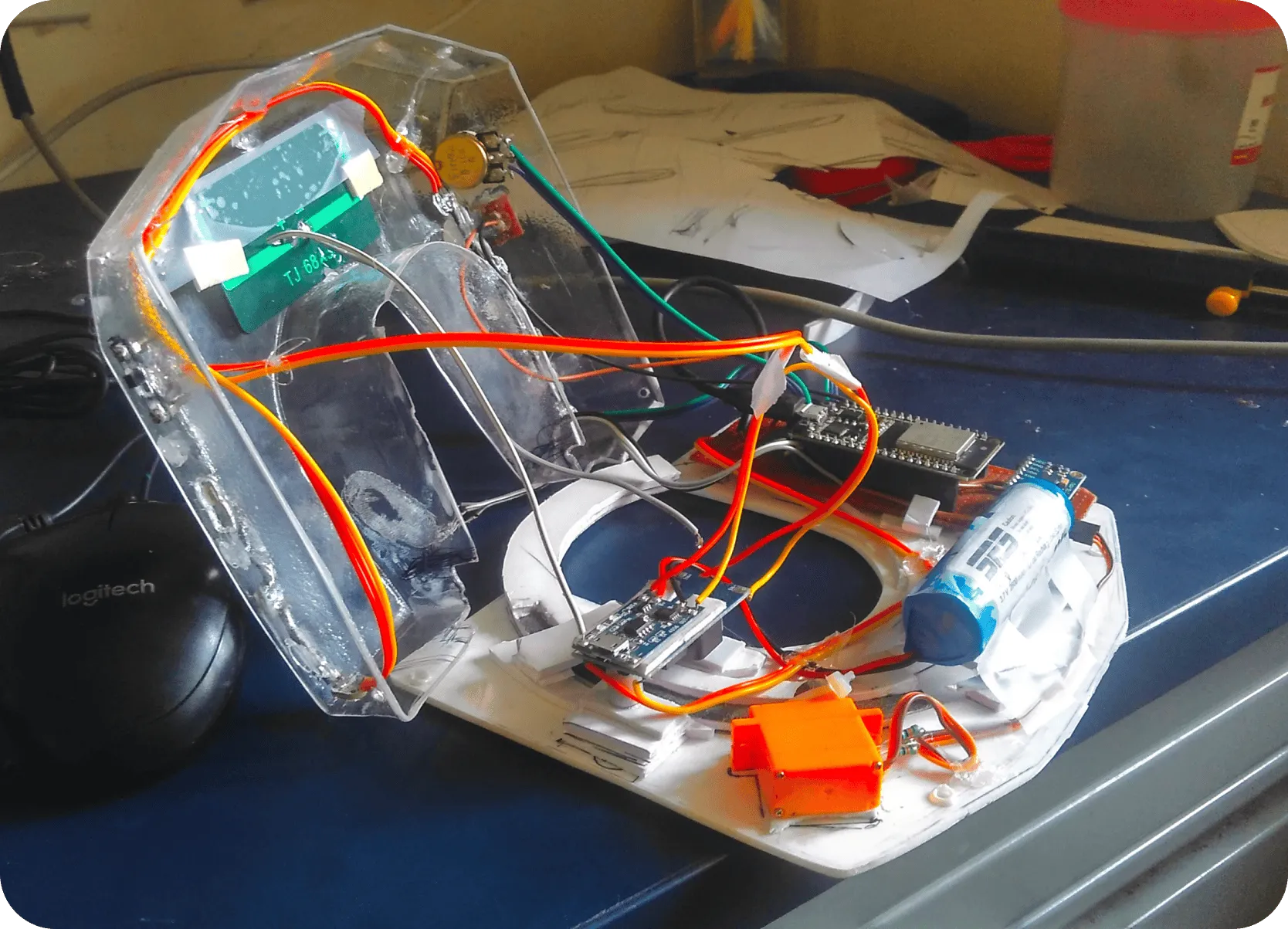
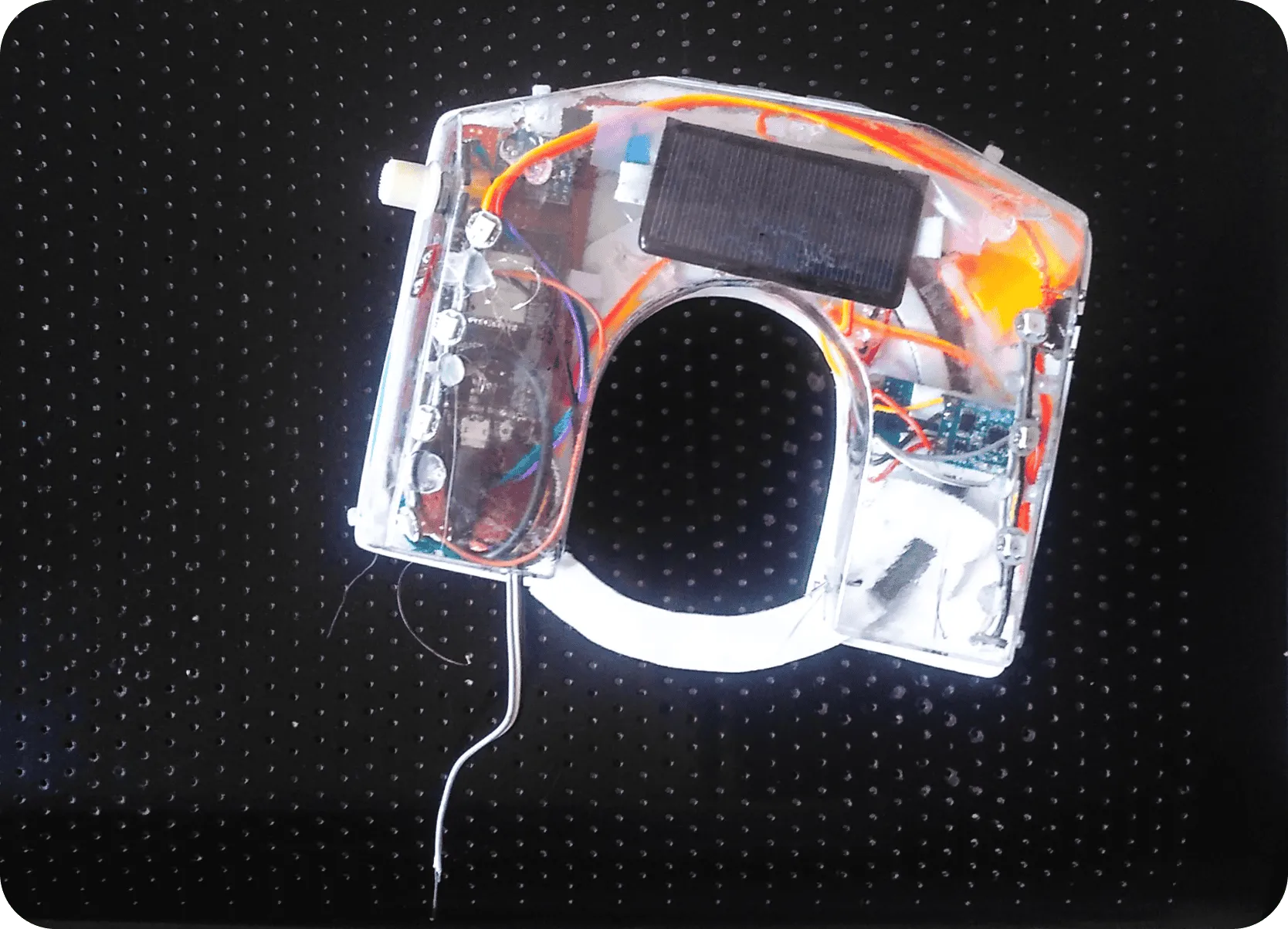
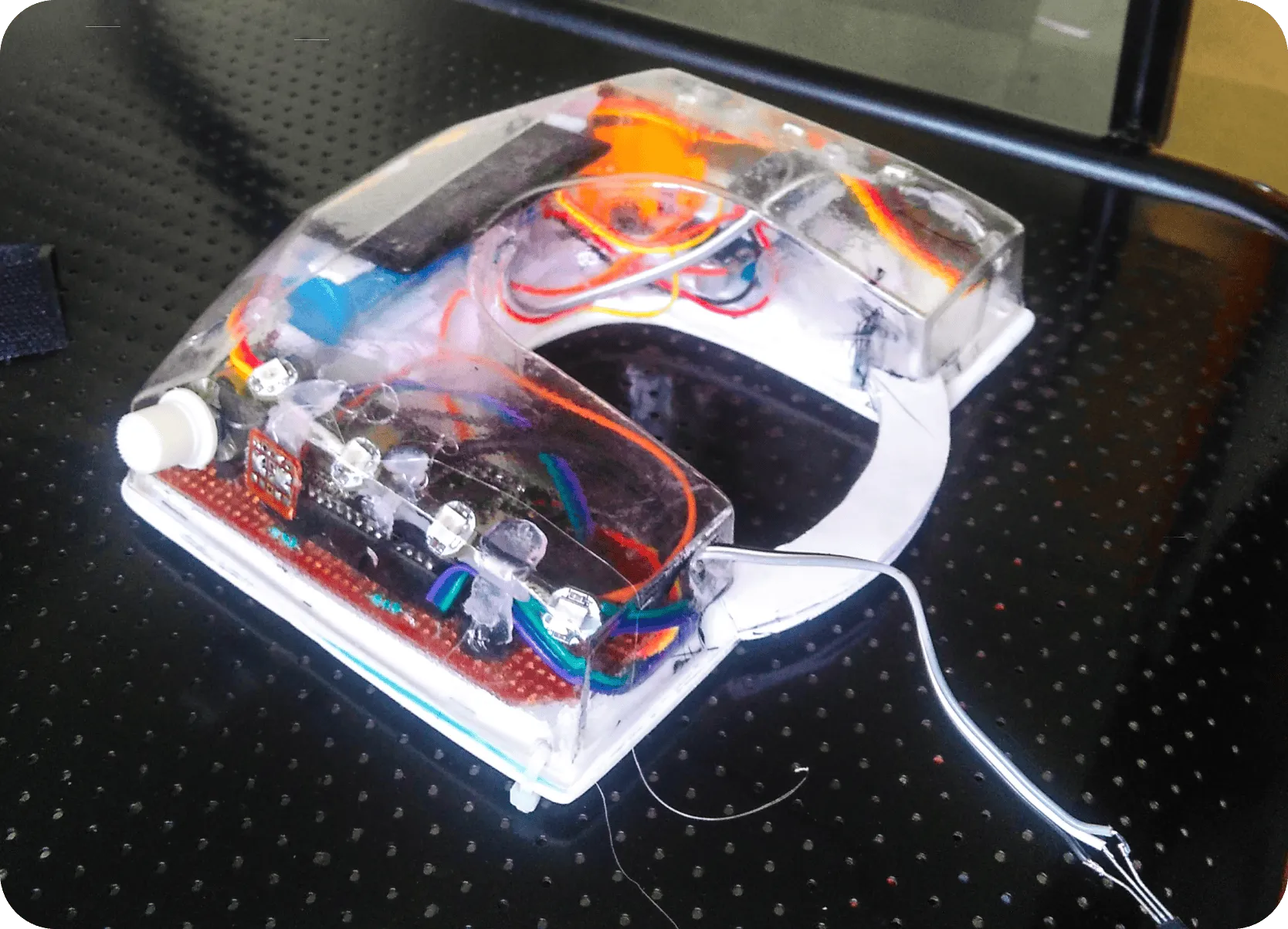
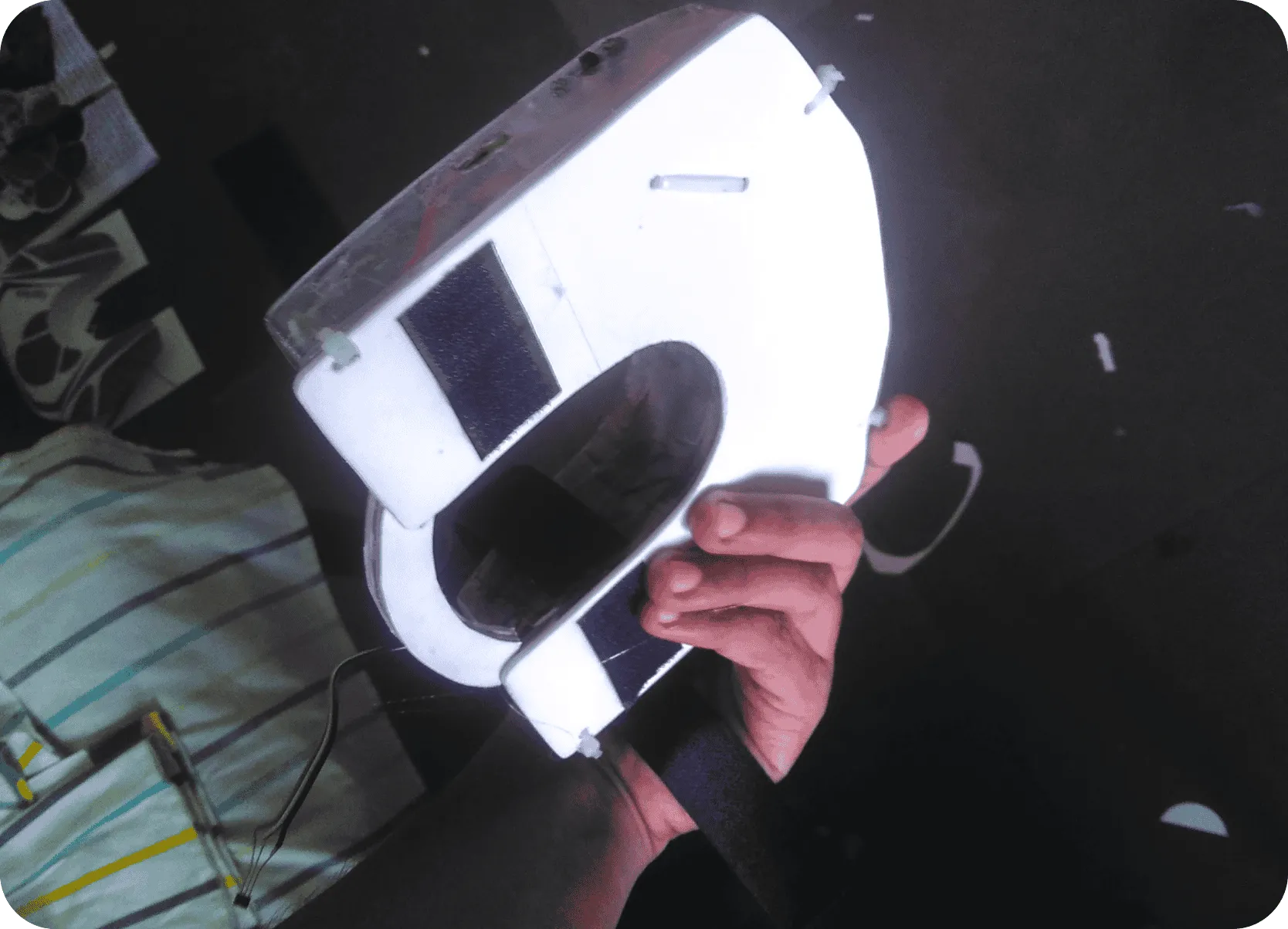
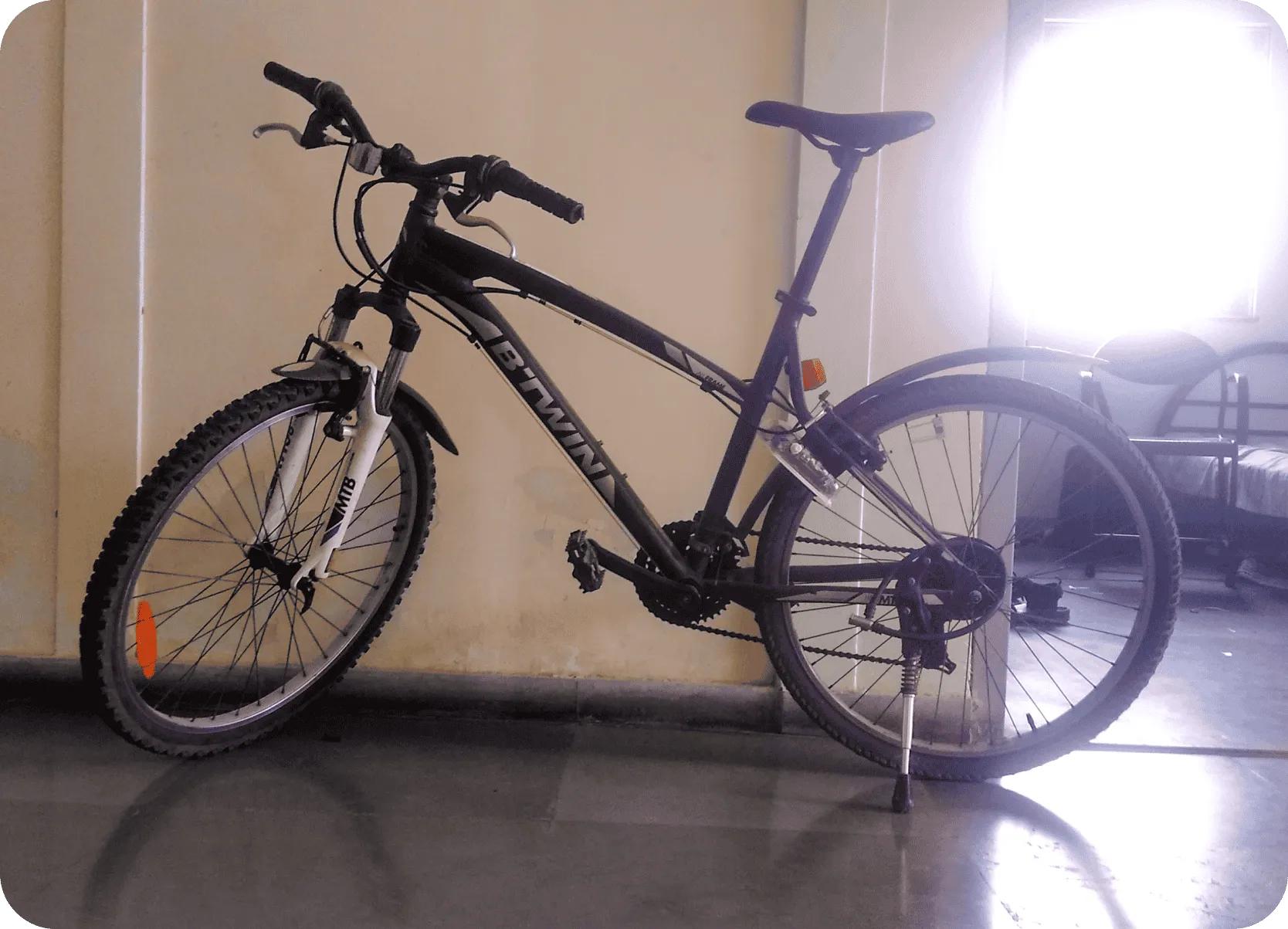
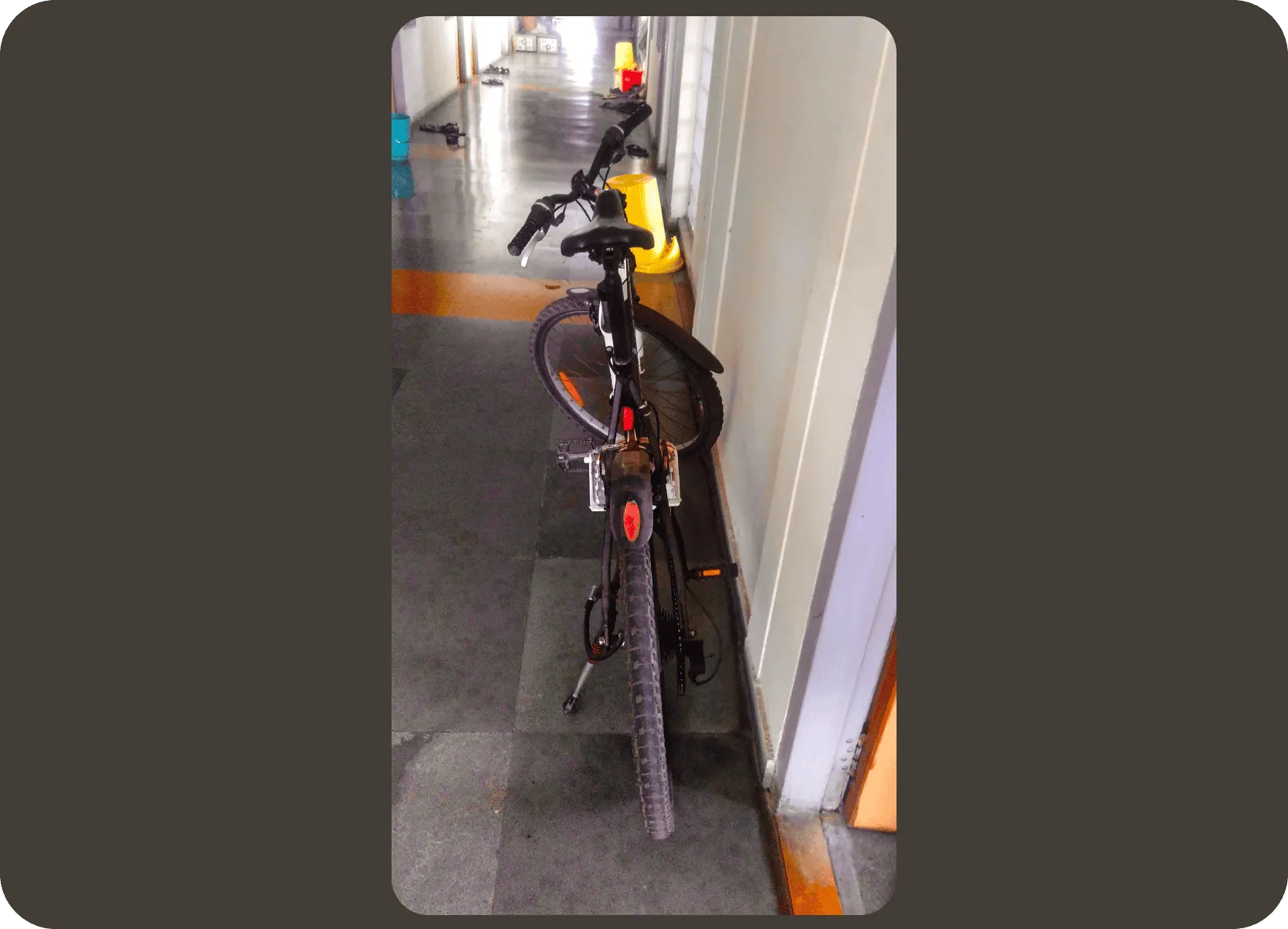
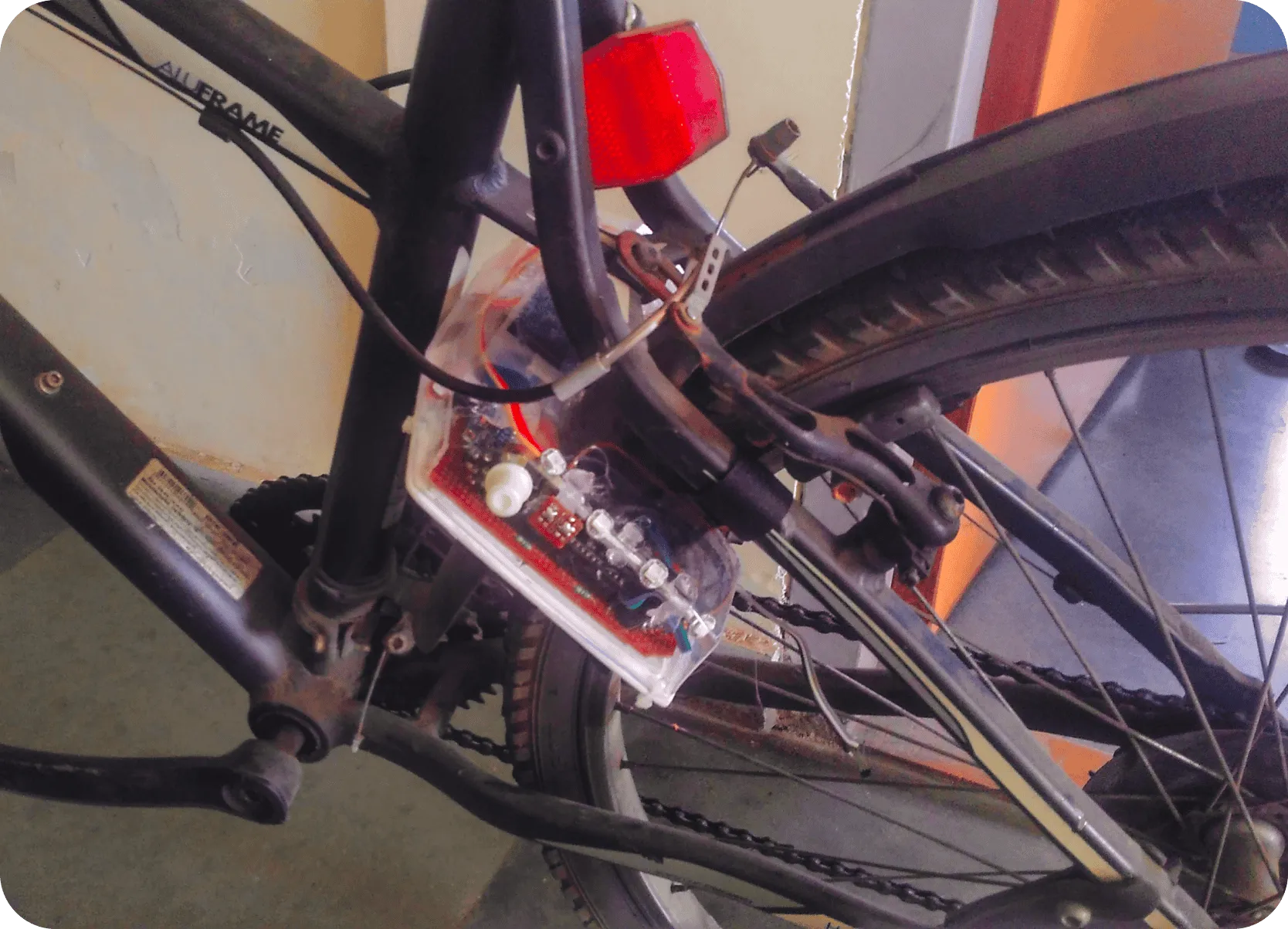
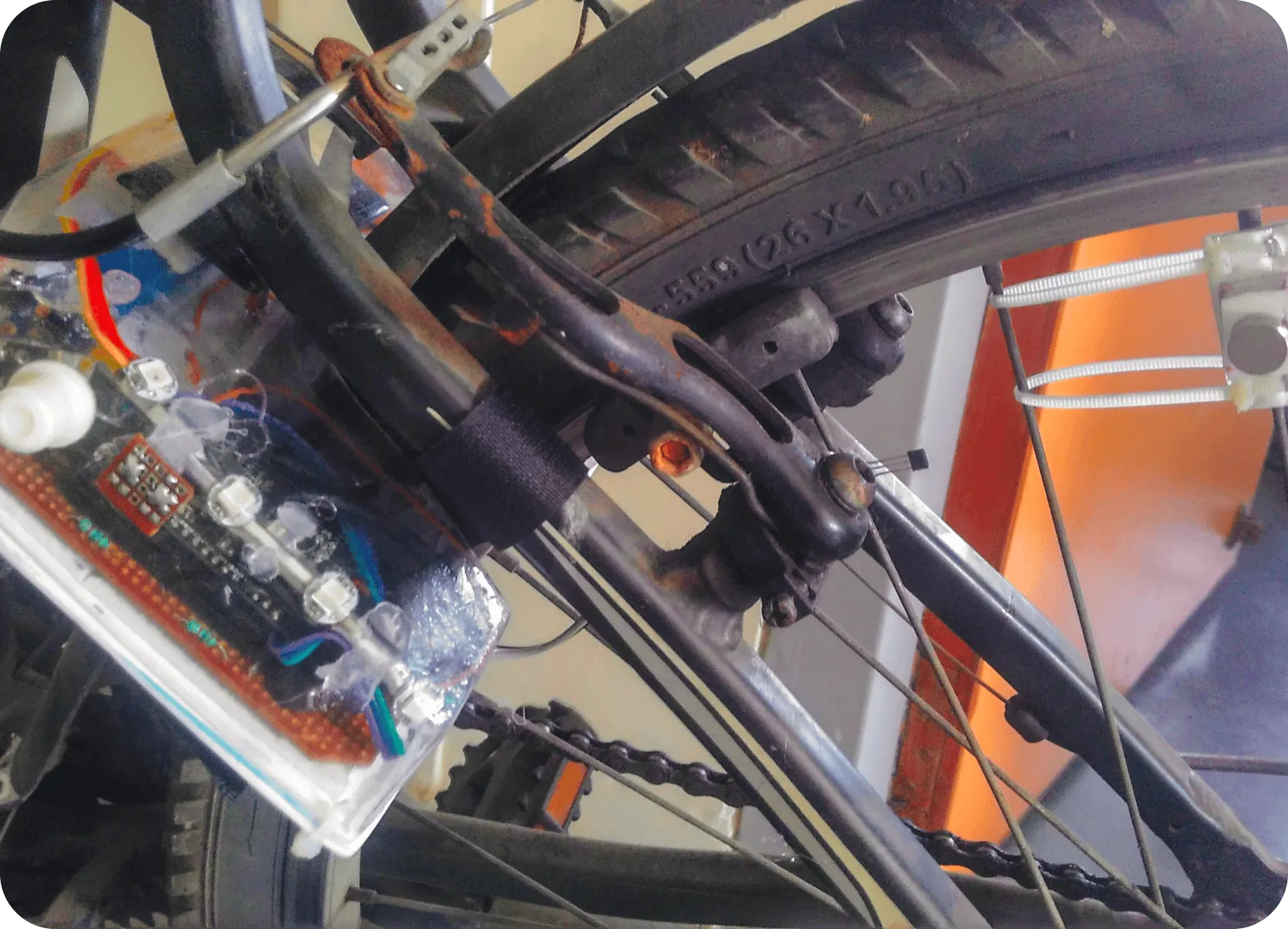
3D Modeling & Printing
Developed a detailed 3D model (Fusion 360) and 3D printed the final form for aesthetic evaluation.
Due to component size constraints, the 3D printed model couldn't house the working shackle mechanism, necessitating separate evaluations
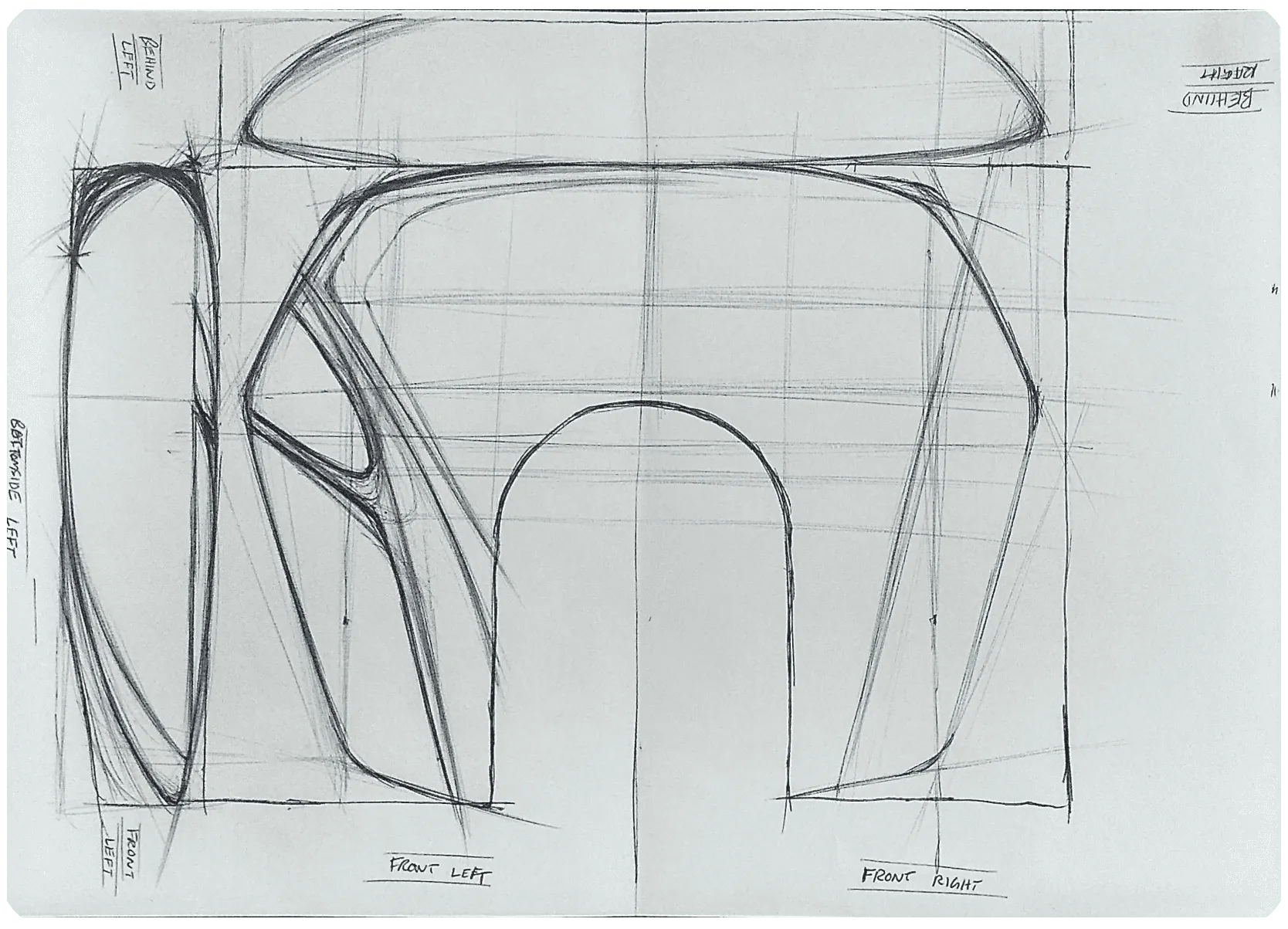
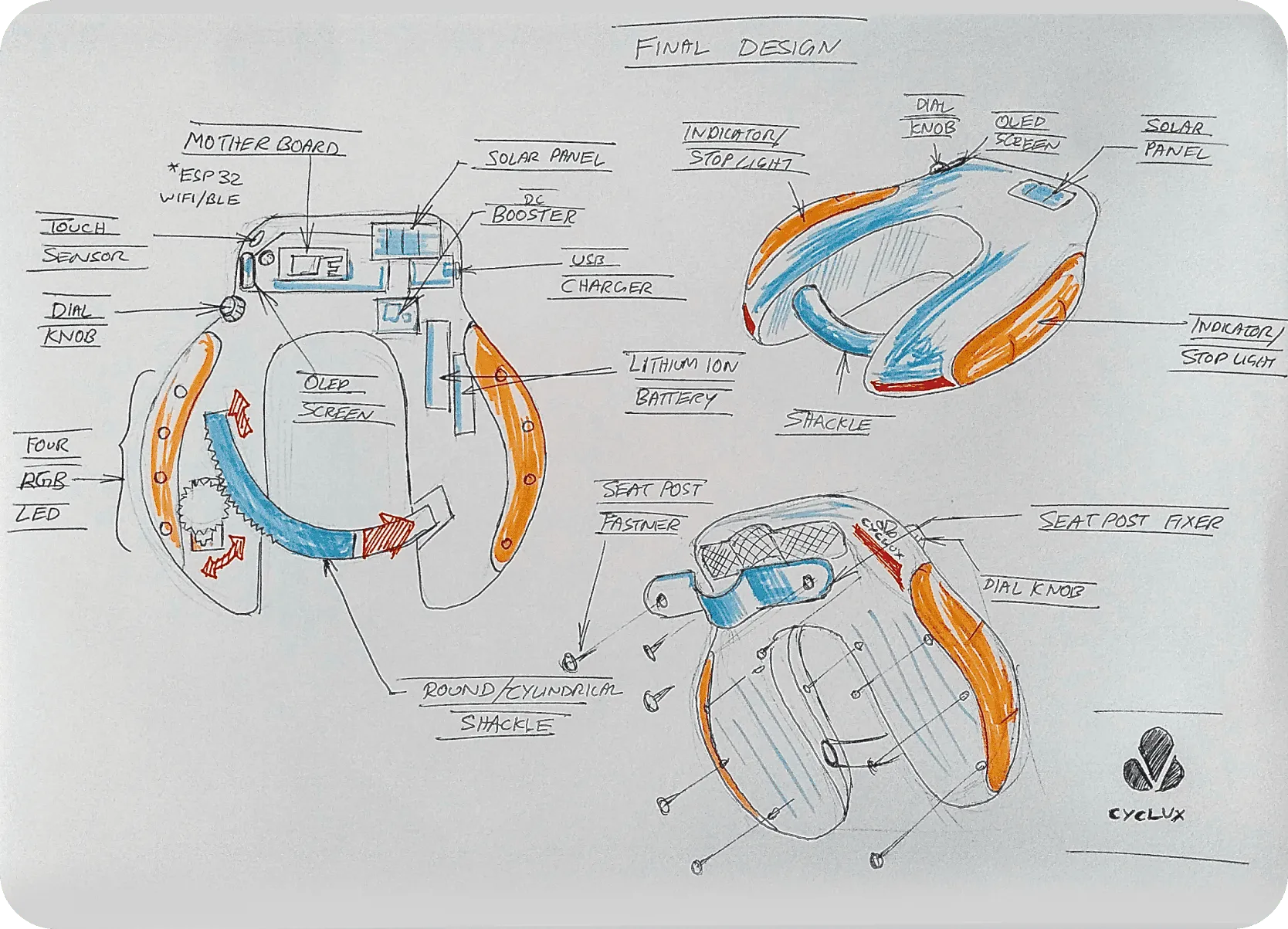
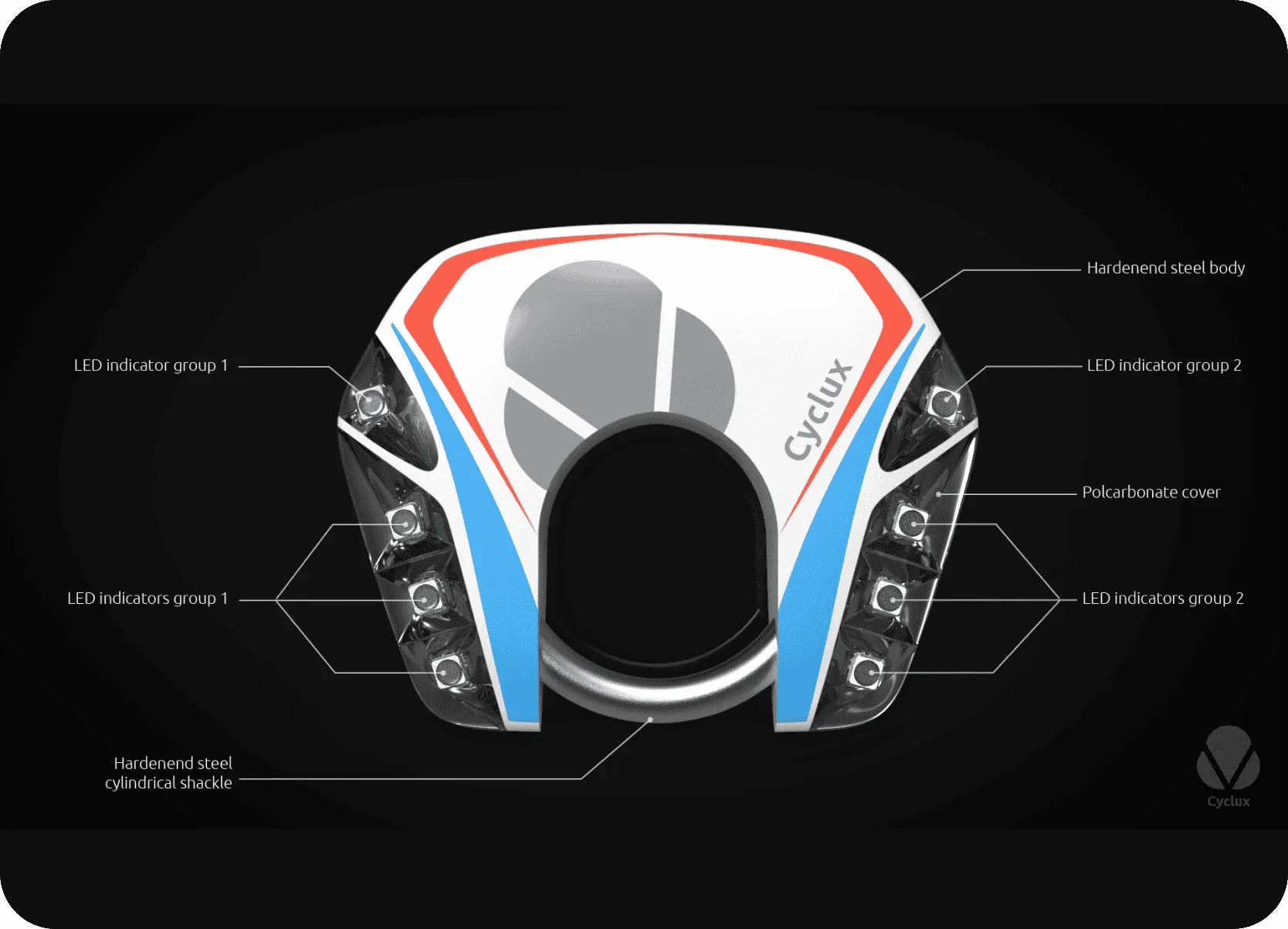
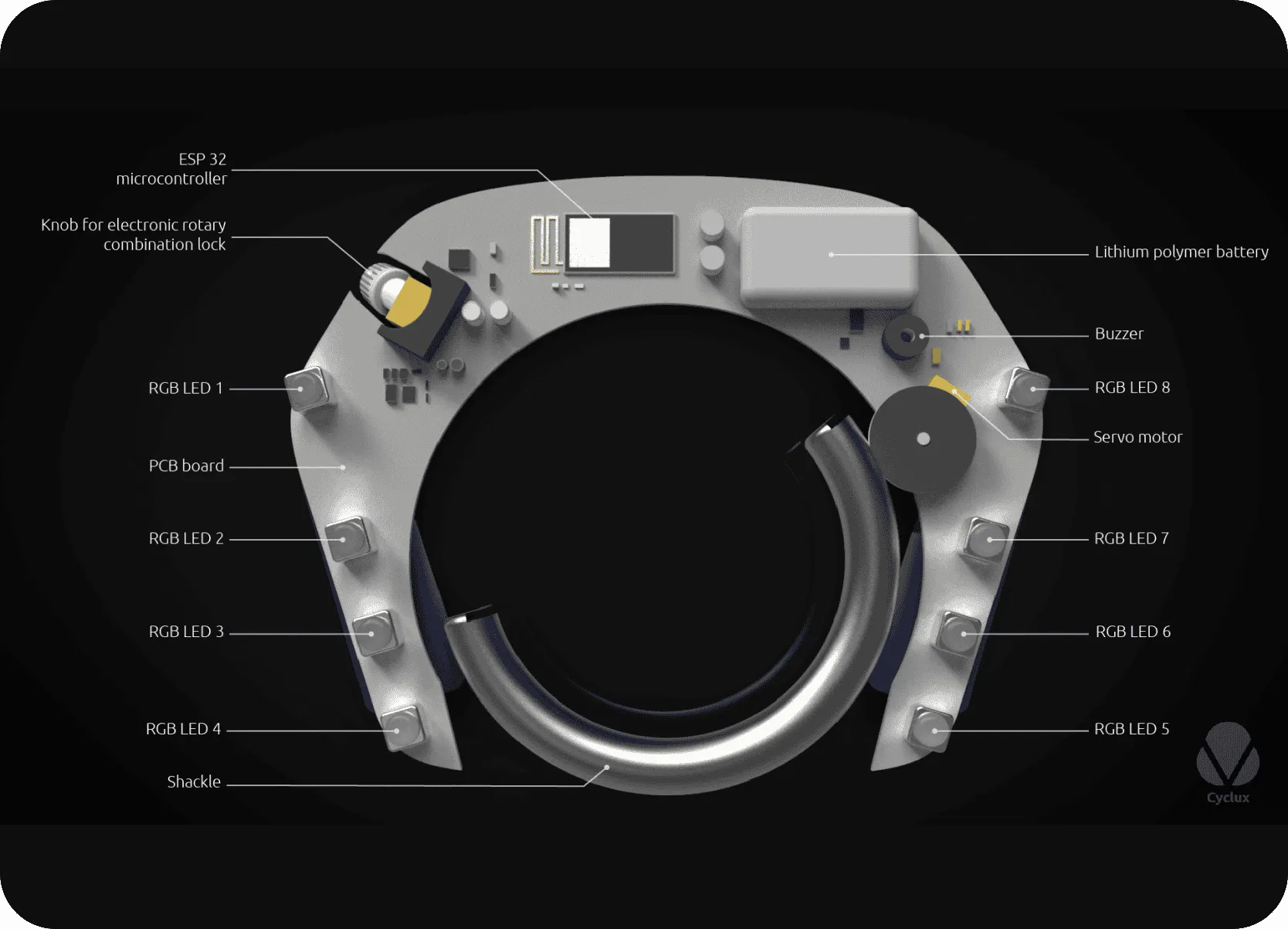
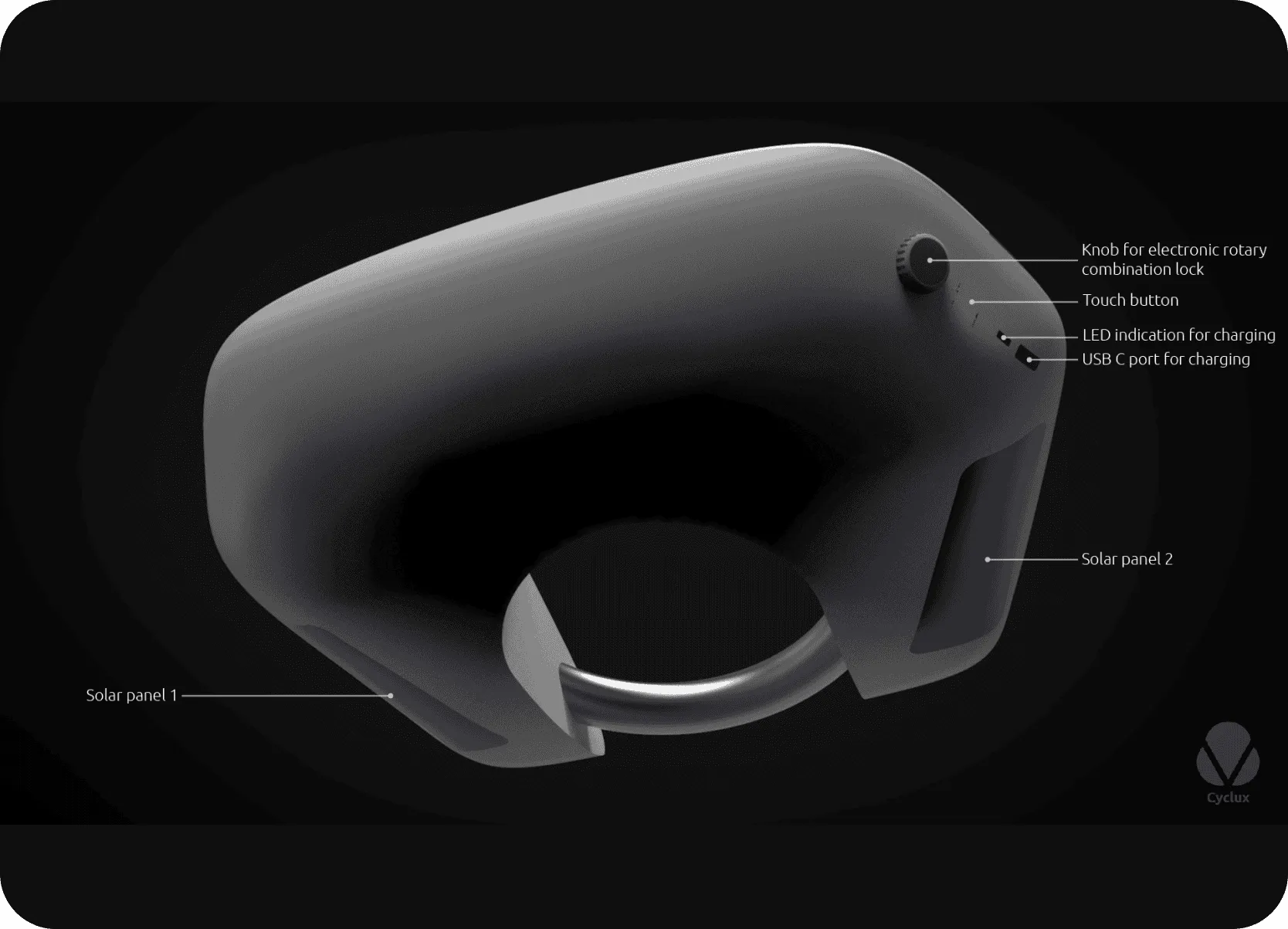
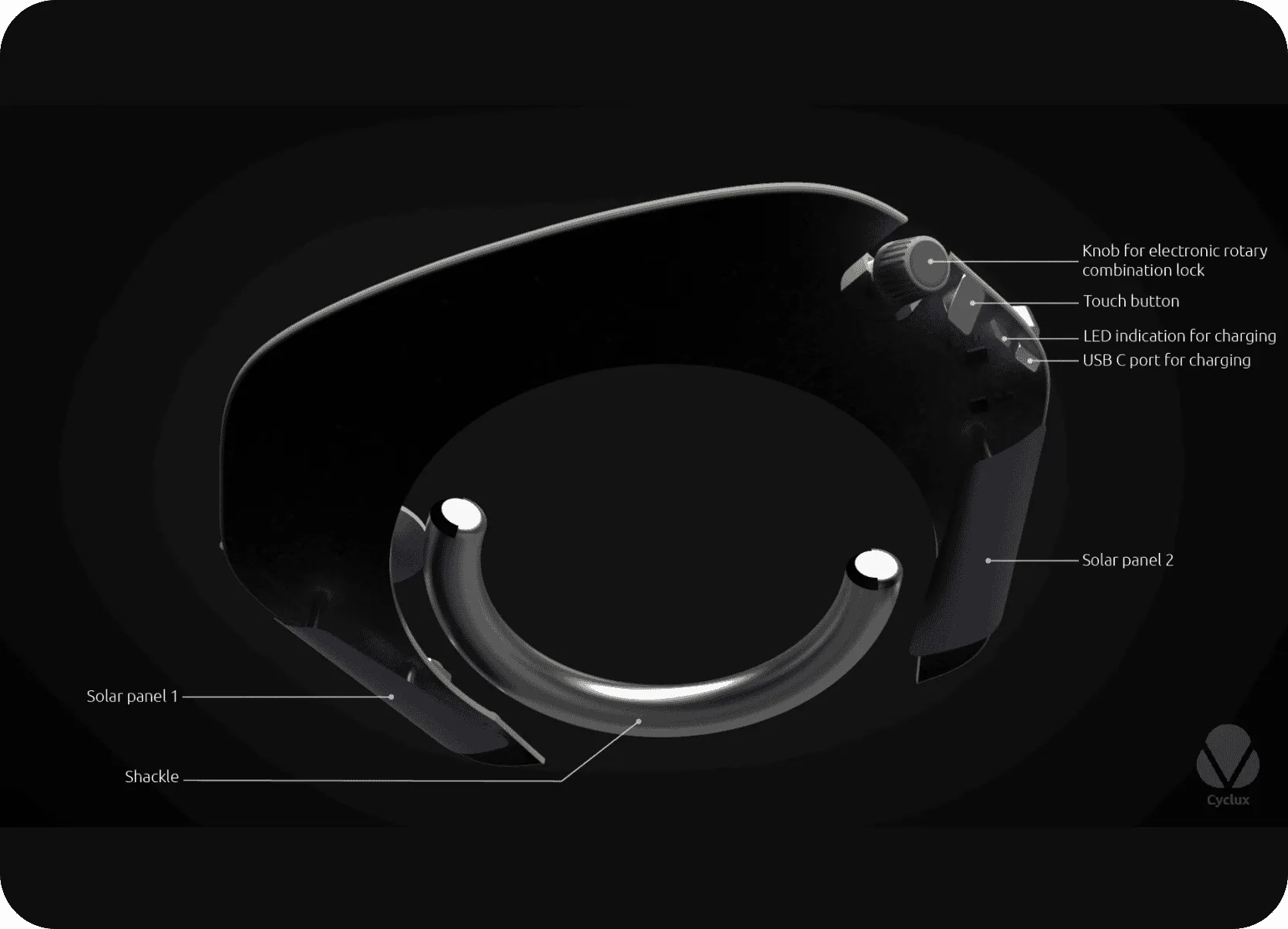
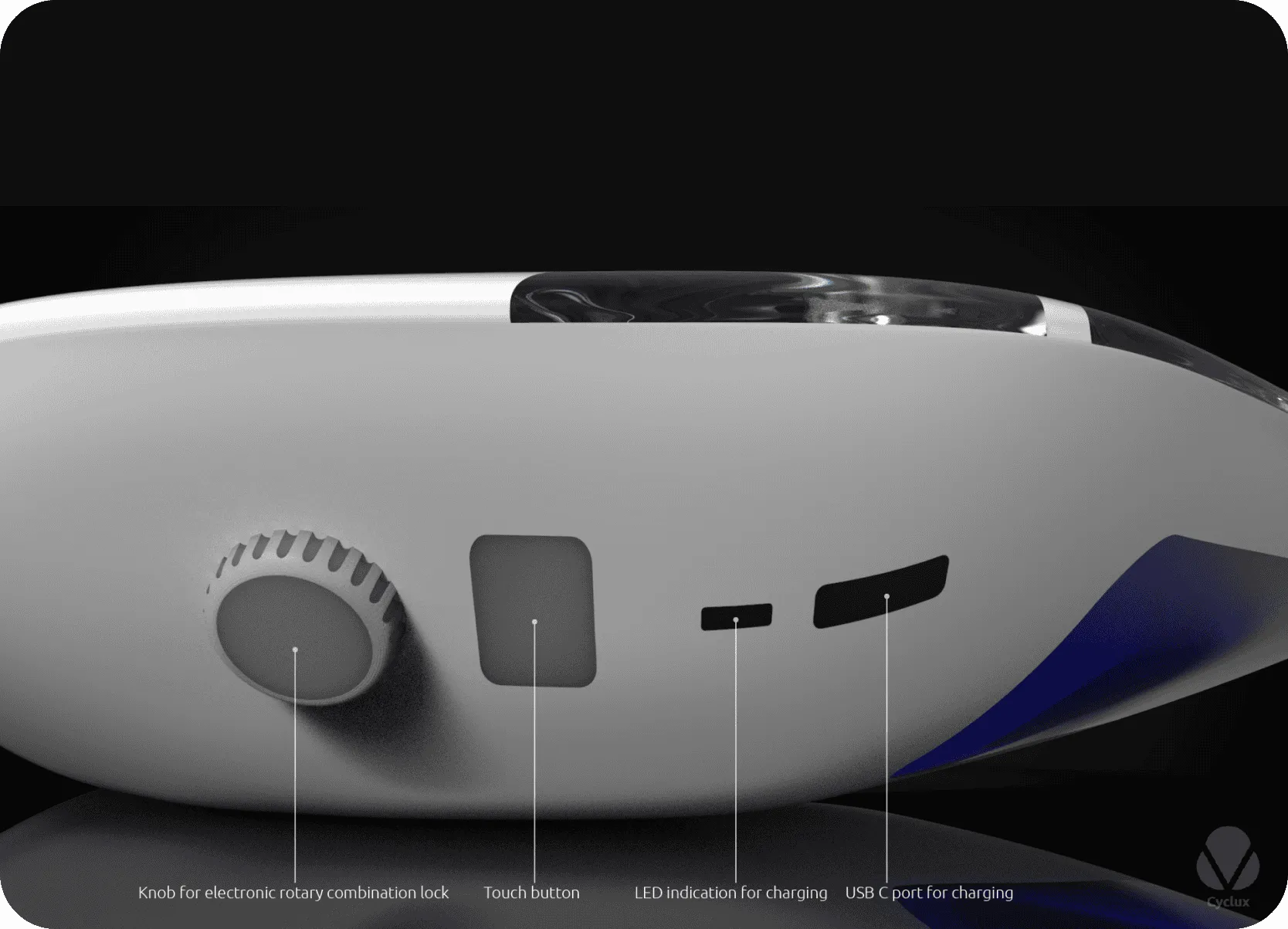
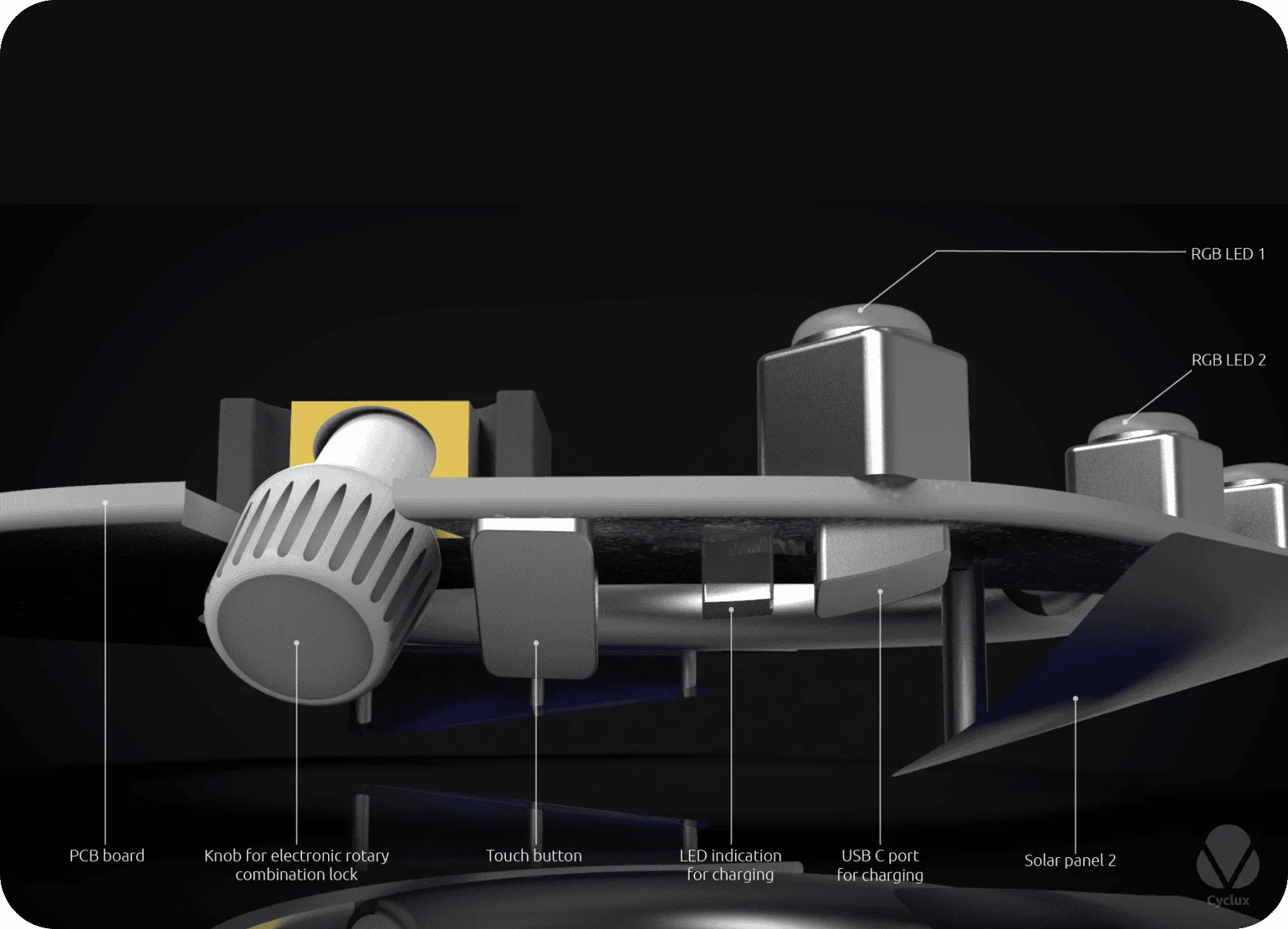
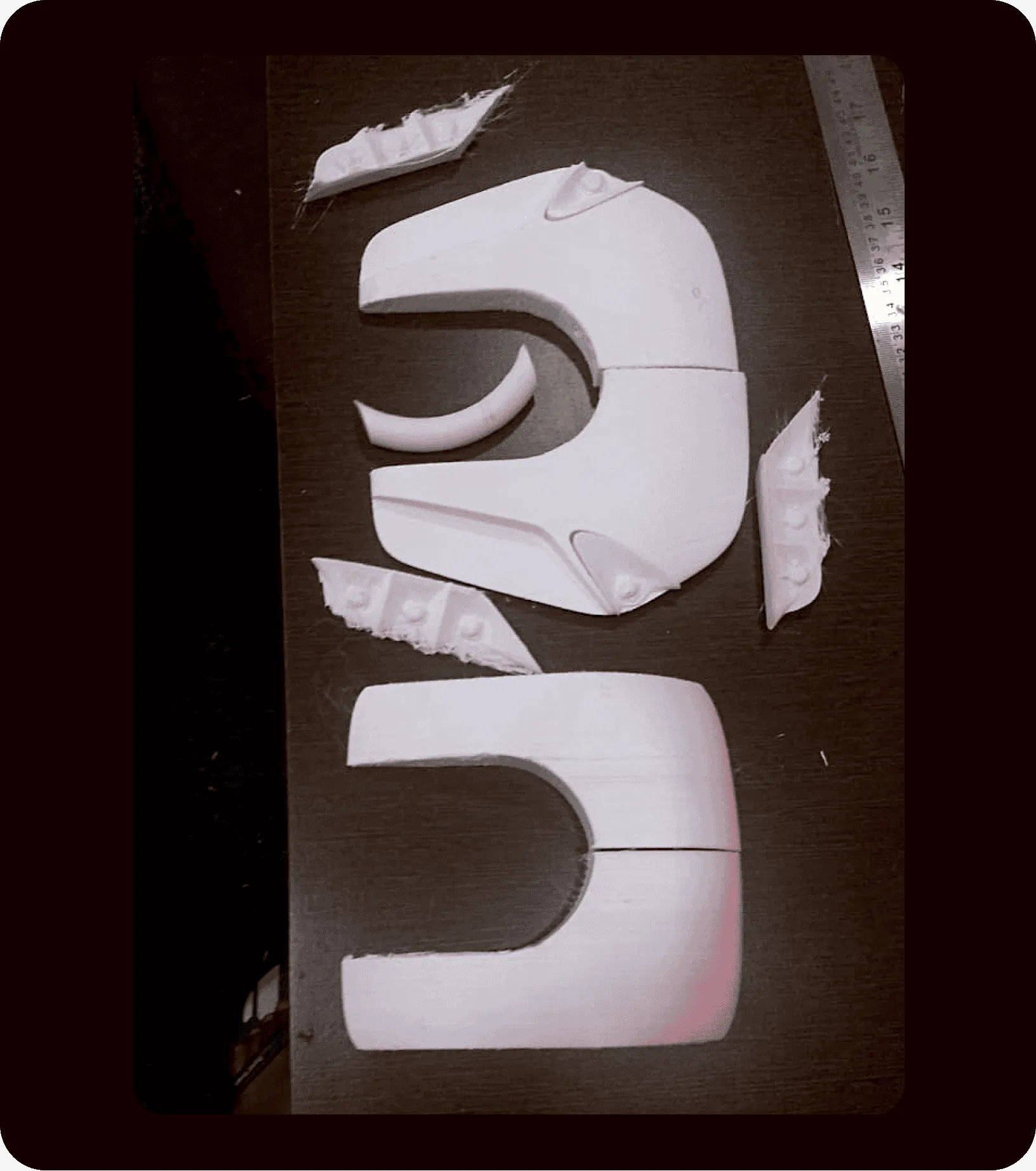
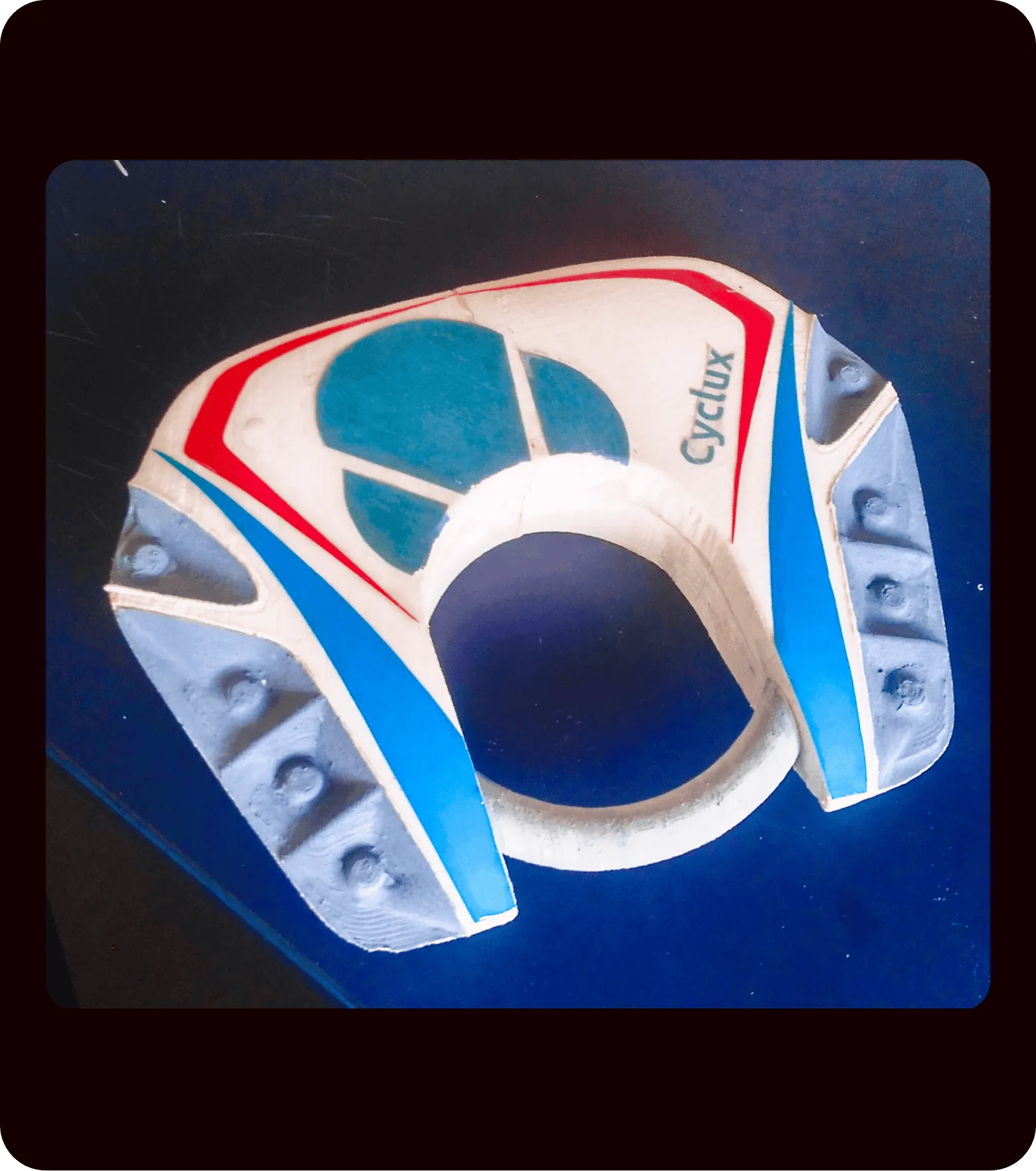
Evaluation & User Feedback
Evaluations were conducted with 10 IIT Bombay cyclists using a two-part approach: evaluating the 3D-printed form and testing the working prototype mounted on a bicycle.
Form Feedback
The form was perceived as futuristic/sporty, best suited for MTBs. Concerns were raised about the color scheme's universal compatibility and whether the form factor would fit all bikes.
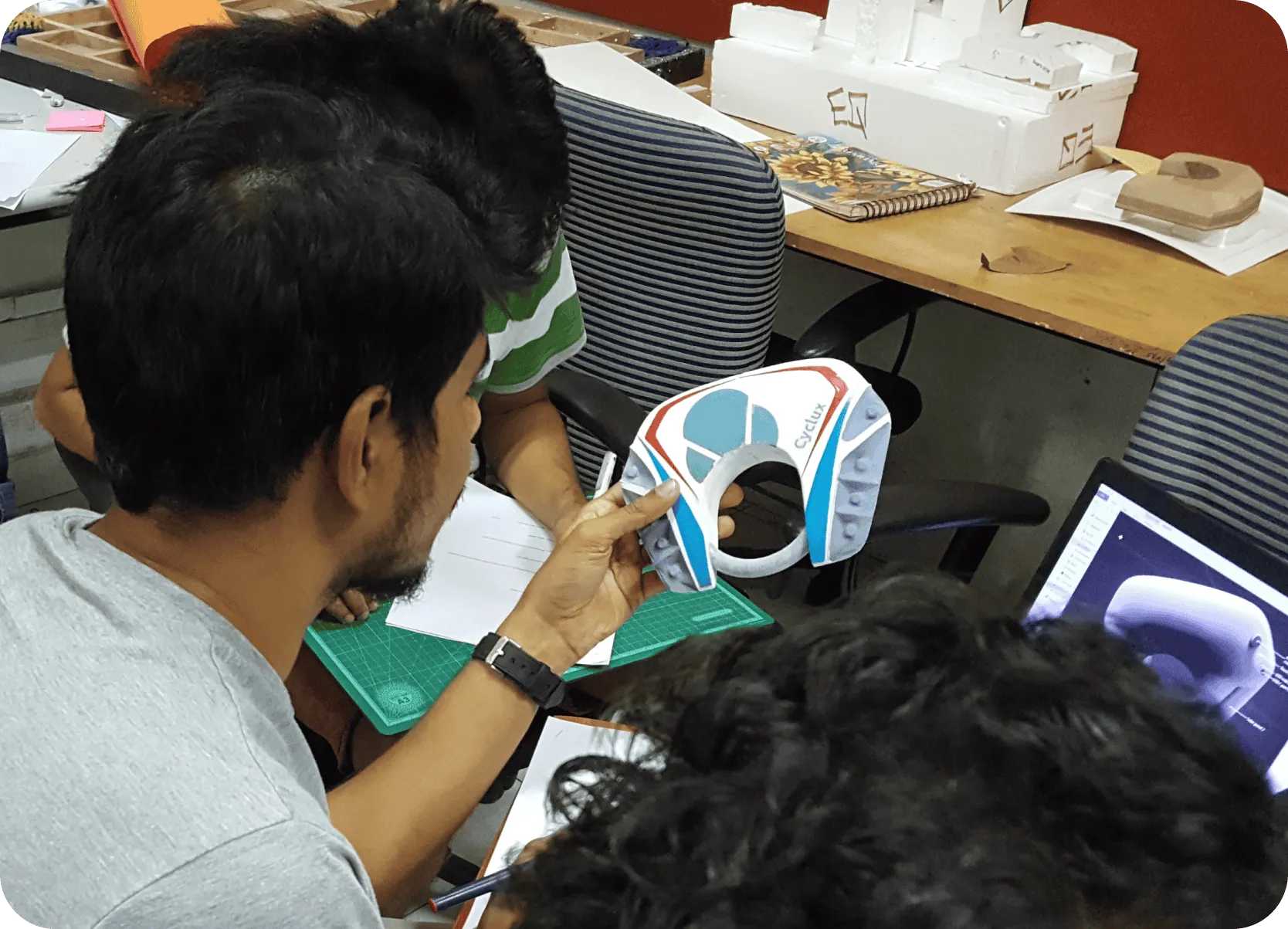
Working Prototype Feedback
The locking/unlocking was easy. Auto-indicators sometimes had false triggers. The displayed information (speed, distance, etc.) was useful. Anti-theft alerts worked but raised concerns about false alarms in parking situations. The rotary dial lock was effective but had a learning curve.
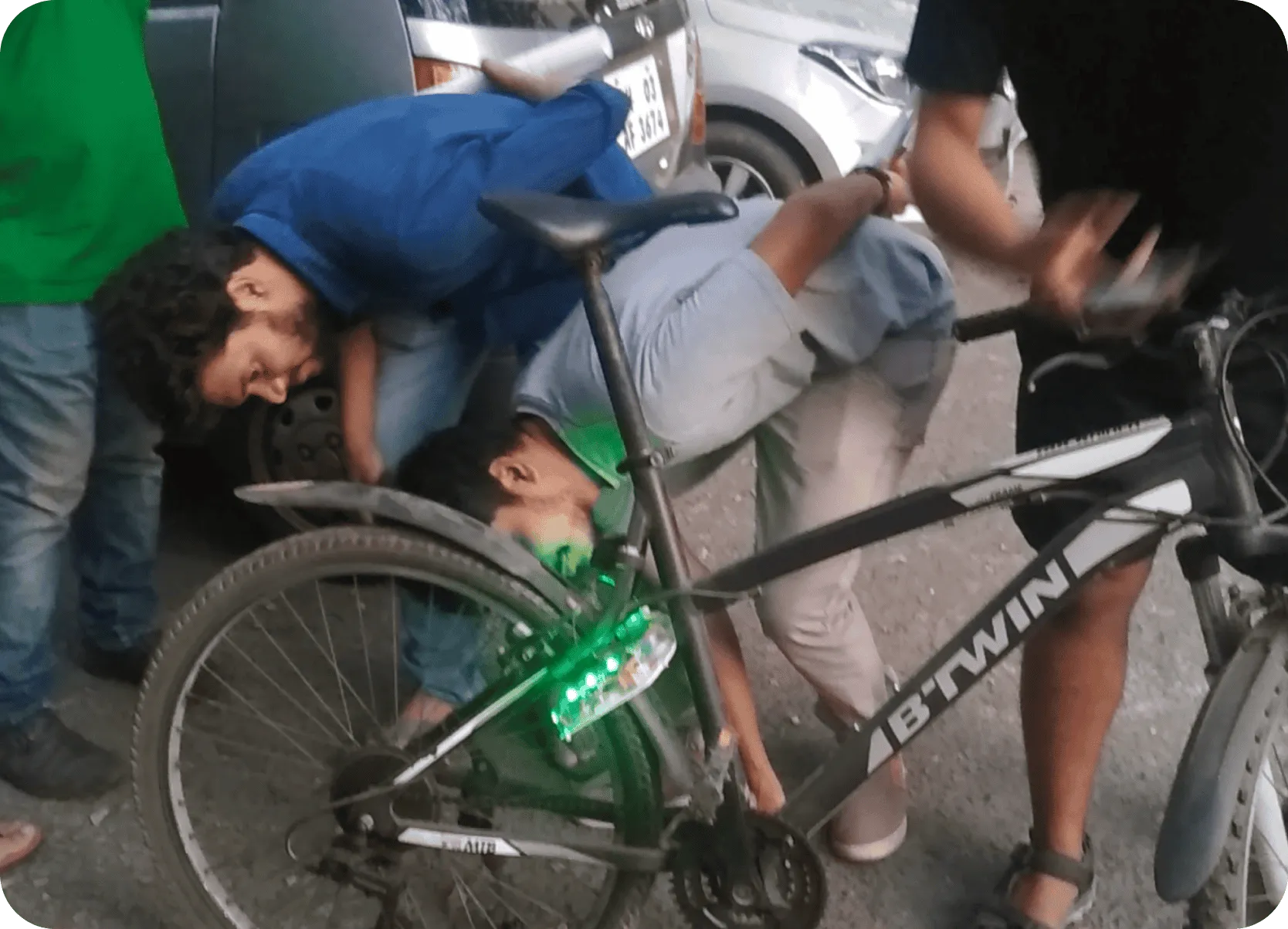

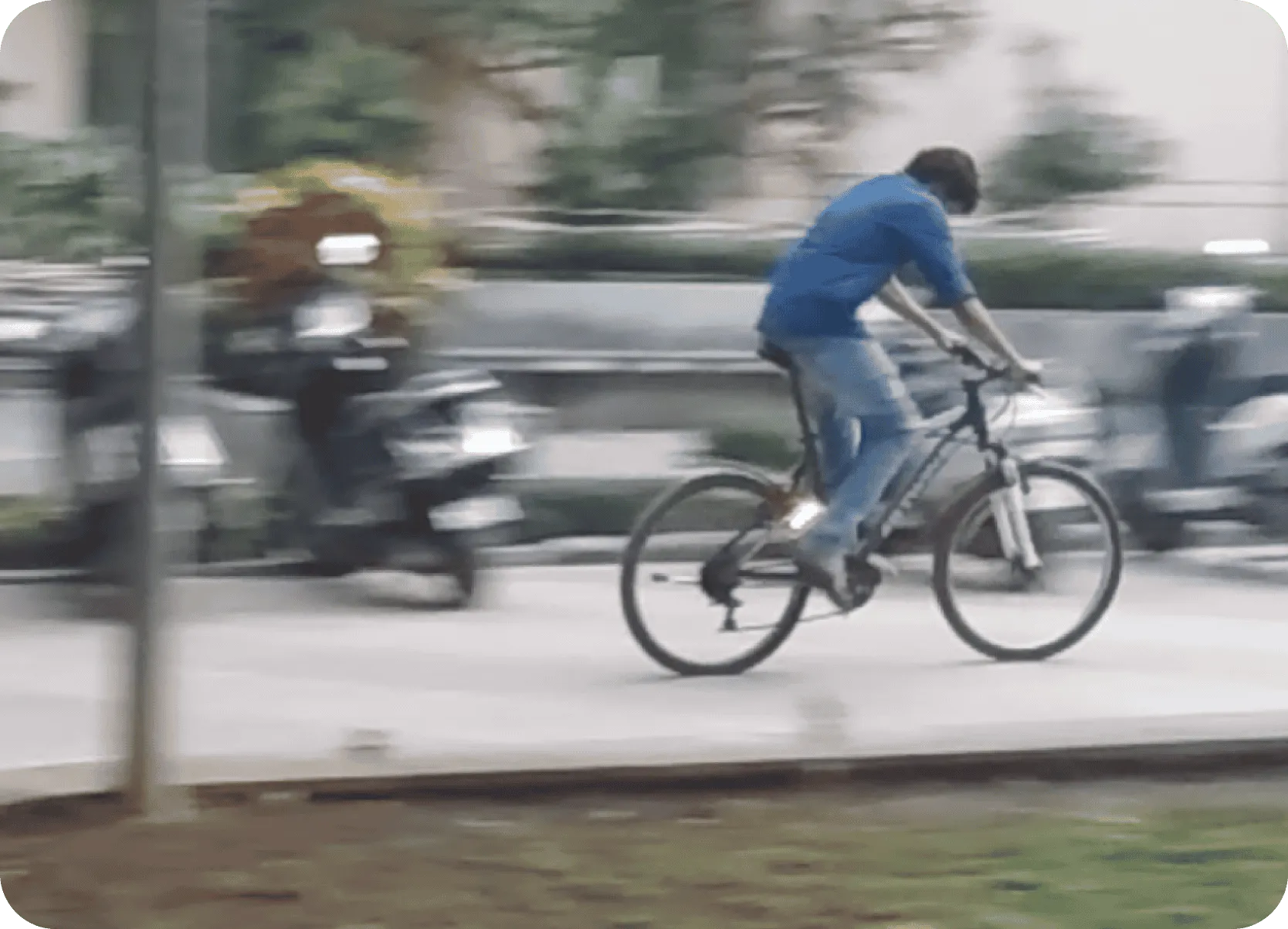
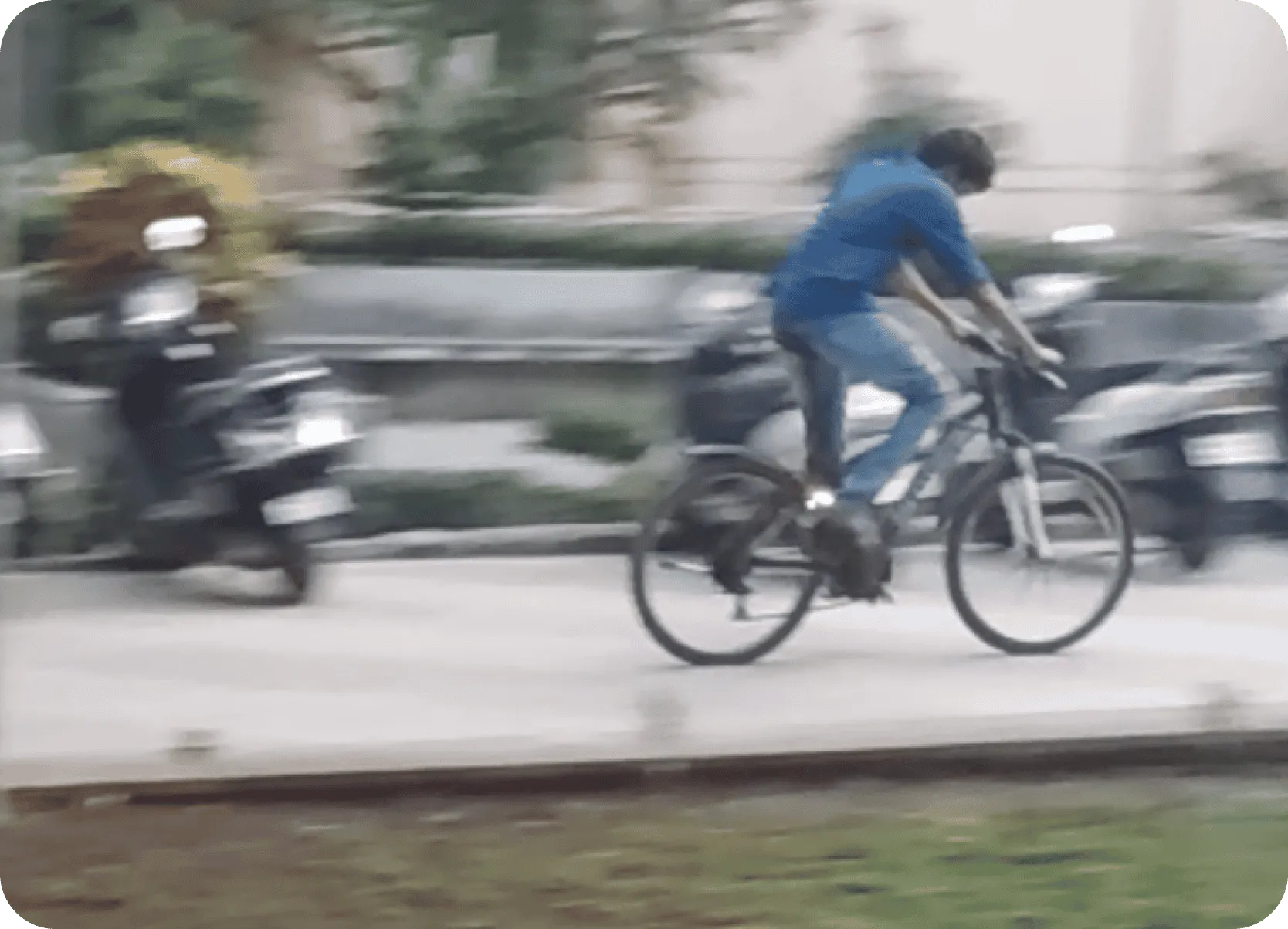
Overall
Participants saw Cyclux as a definite upgrade to existing locks, offering enhanced security and useful features. Ratings were generally positive, particularly for security and feature usefulness.

Conclusion & Future Scope
Cyclux successfully integrates smart features like auto-indicators and an electronic rotary dial into a bicycle security device, offering a unique solution compared to existing smart locks. User feedback was positive, confirming the potential impact.
Future work will focus on:
-
Developing a more compact form factor and refining product placement for broader bicycle compatibility.
-
Offering more color variations.
-
Calibrating auto-indicators and refining anti-theft alerts to minimize false triggers.
-
Exploring the addition of a USB-C port for phone charging
Featured in D'source
This project is featured in D'source, an OPEN DESIGN initiative by the Industrial Design Centre (IDC) at IIT Bombay in
collaboration with India's Ministry of Human Resource Development as part of the National
Mission in Education through Information and Communication Technology. D'source serves as
India's premier 'Creating Digital Learning Environment for Design' also called 'e-kalpa',
preserving traditional crafts while advancing contemporary design education nationwide.
Content licensed under Creative Commons Attribution-NonCommercial-ShareAlike 4.0 International License.
References
• Robert B. Noland and Muhammad M. Ishaque. 2006. Smart Bicycles in an Urban Area:
Evaluation of a Pilot Scheme in London. Journal of Public Transportation, Vol.9, No. 5. pg
71- 95.
• Peter Midgley. 2011. Bicycle-sharing schemes: enhancing sustainable mobility in urban
areas. CSD19/2011/BP8.
• Paul J. DeMaio. 2003. Smart bikes: Public transportation for the 21st century.
TRANSPORTATION QUARTERLY / WINTER 2003. pg 9-11.
• Simon D.S. Fraser & Karen Lock. 2010.Cycling for transport and public health. pg 739 -
743.
• John Pucher & Ralph Buehler. 2017. Cycling towards a more sustainable transport future.
TRANSPORT REVIEWS, 2017 VOL. 37, NO. 6, pg 689-694.
• https://www.students.org/2014/04/16/bicycle-commuting-benefits-students/
•
https://www.indiegogo.com/projects/skylock-the-worlds-first-solar-powered-connected-bike-lock#/
• https://www.kickstarter.com/projects/lock8/lock8-the-worlds-first-smart-bike-lock
• https://bitlock.co/
• http://deeperlock.com/
• https://www.linkalock.com/
• https://www.kickstarter.com/projects/fuzdesigns/noke-u-lock-worlds-smartest-u-lock
• https://www.ilockit.bike/en/
• https://www.bisecu.com/
• https://en.wikipedia.org/wiki/Bicycle_lock
Up next

Elevating JioMeet's Digital Front Door
🏆 Research, Redesign, Website, UX
/
2021 - 2022

McJio Celebrations: Next-Gen Virtual Parties
✨ Research, Pitch, Concept, UX
/
2022 - 2023

JioMeet PIP & Screenshare Refresh
Research, Redesign, Feature, UX
/
2022

Driving Innovation and Enhancements at Jio
UX, Collection, Showcase
/
2019 - 2024

Visualizing Footwear's Impact on Movement
Academic, Research
/
2019
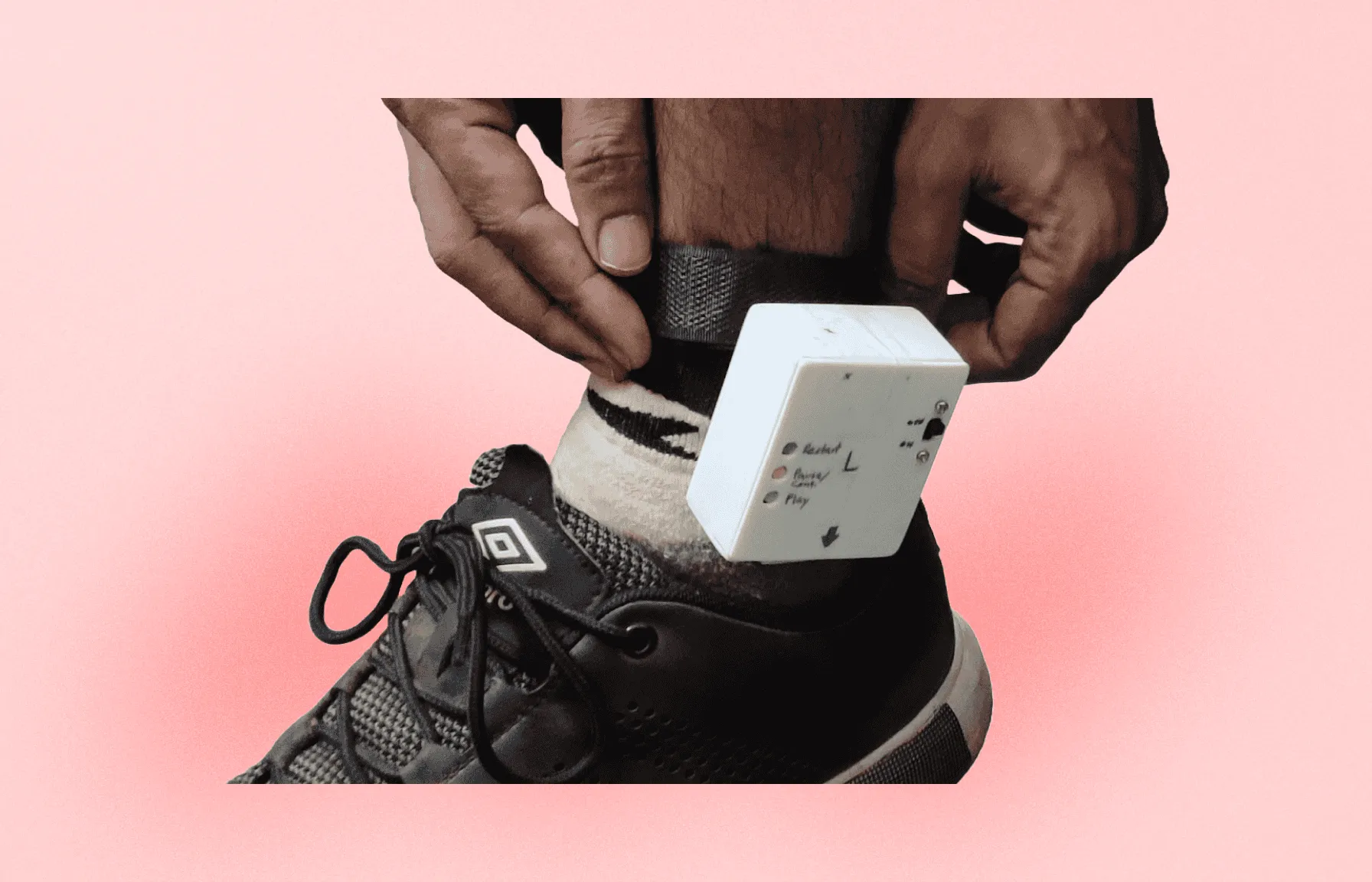
Slingshot—Wearable tech for optimised running
✨ Research, Product, UX
/
2019